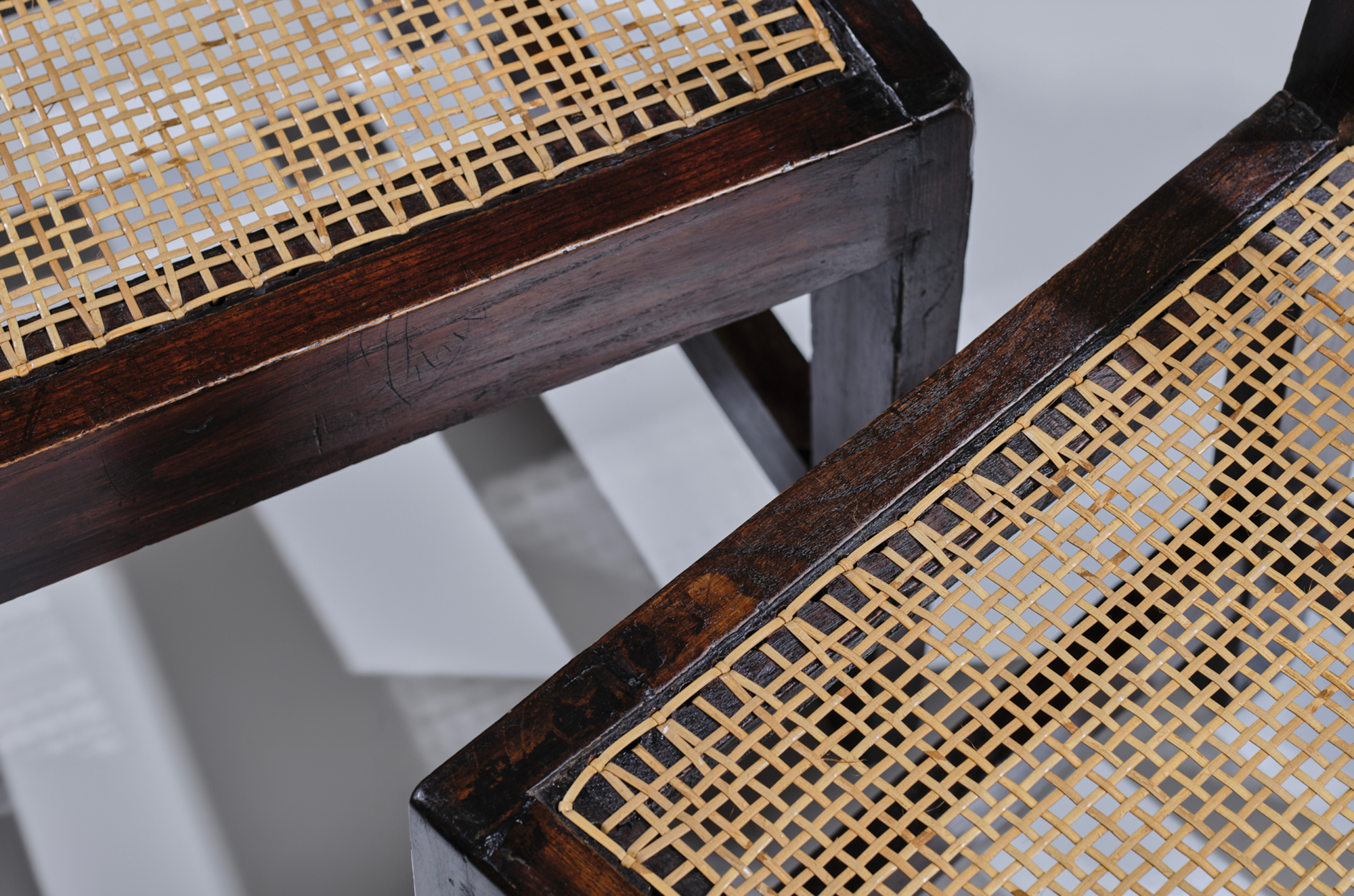Conceived as an urban manifesto at the heart of independent India, Chandigarh entered history through the masterful imprint of Le Corbusier. Yet behind this towering figure, the decisive contribution of Pierre Jeanneret often remains overshadowed. Architect, urban planner, and designer, he accompanied the daily construction of this new city.
Through this exhibition, Laffanour | Galerie Downtown invites you to rediscover Chandigarh through Jeanneret’s vision and achievements: his sober and human-scale architectures, his furniture designed for both public life and private interiors, and his experiments—sometimes modest but always essential.
Beyond the iconic pieces, we have chosen to highlight rare and sometimes lesser-known works, which testify to his discreet inventiveness and unwavering commitment to the local community.
Far from conventional images, this selection reveals a Pierre Jeanneret deeply rooted in the realities of the construction site, attentive to use and materials, and keen to unite modernity with Indian culture. It offers the opportunity to discover a more intimate oeuvre, often relegated to the shadows, yet which played a decisive role in shaping Chandigarh’s singular identity.
All works presented in this exhibition are available for purchase.
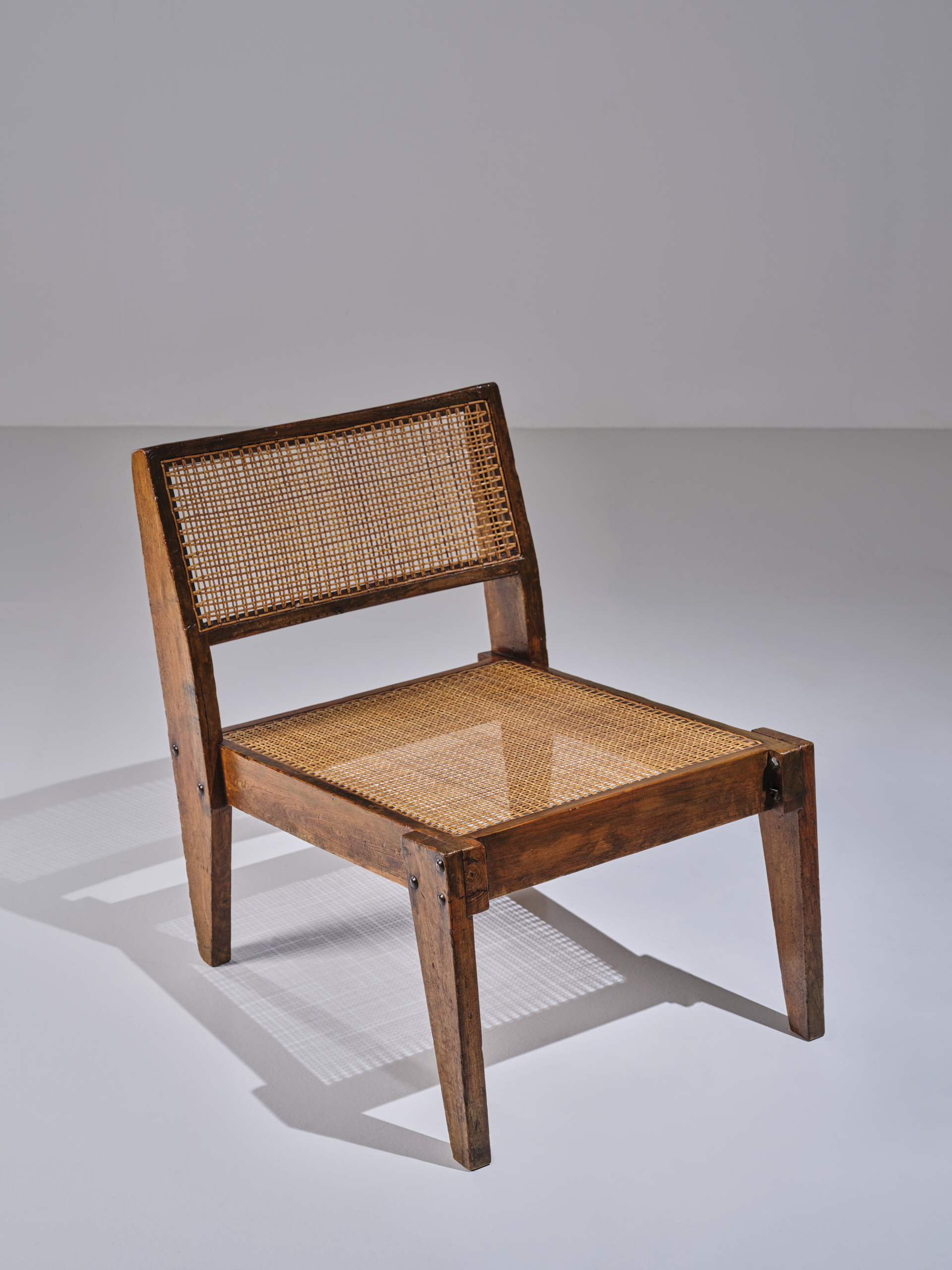
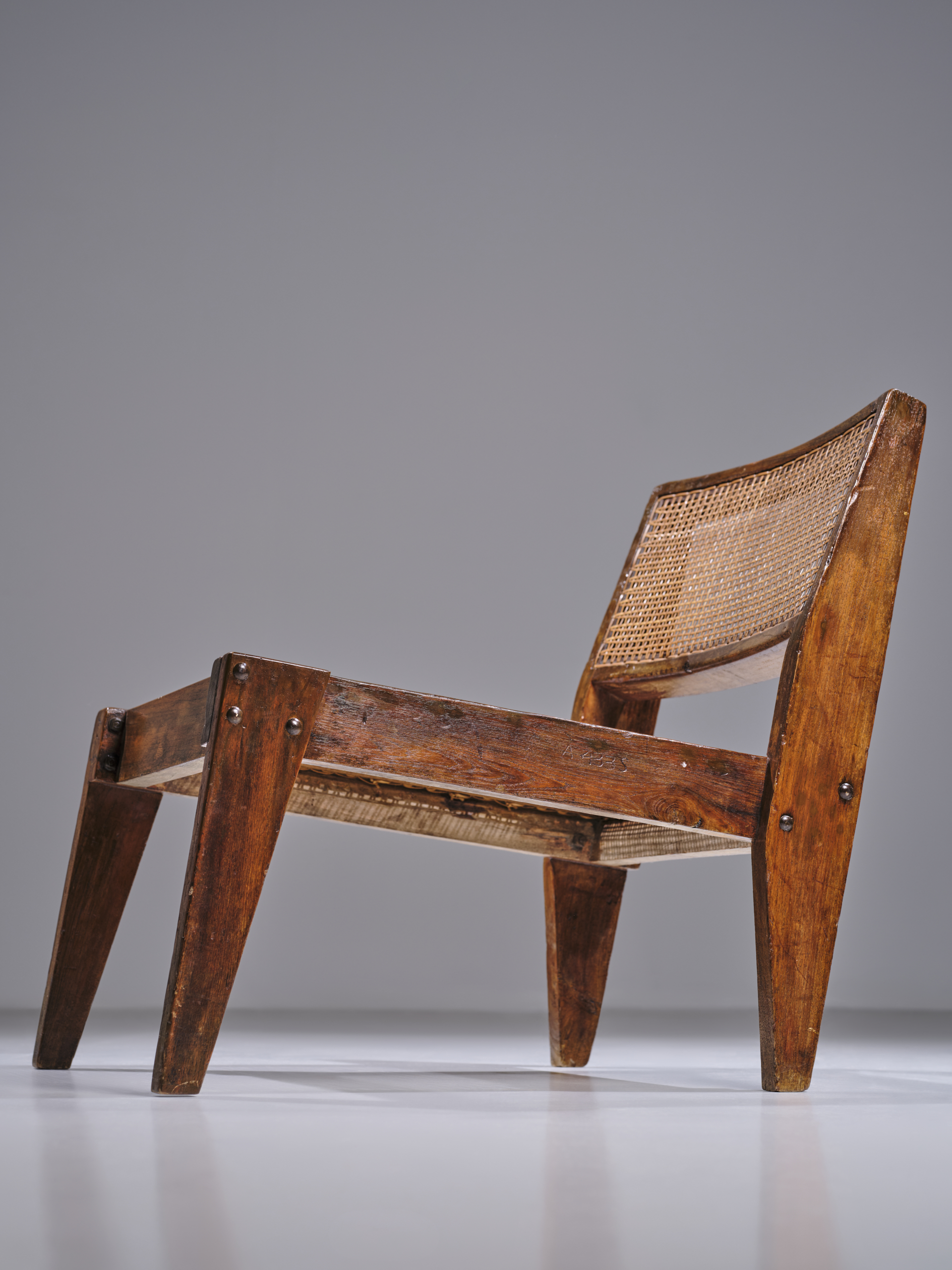
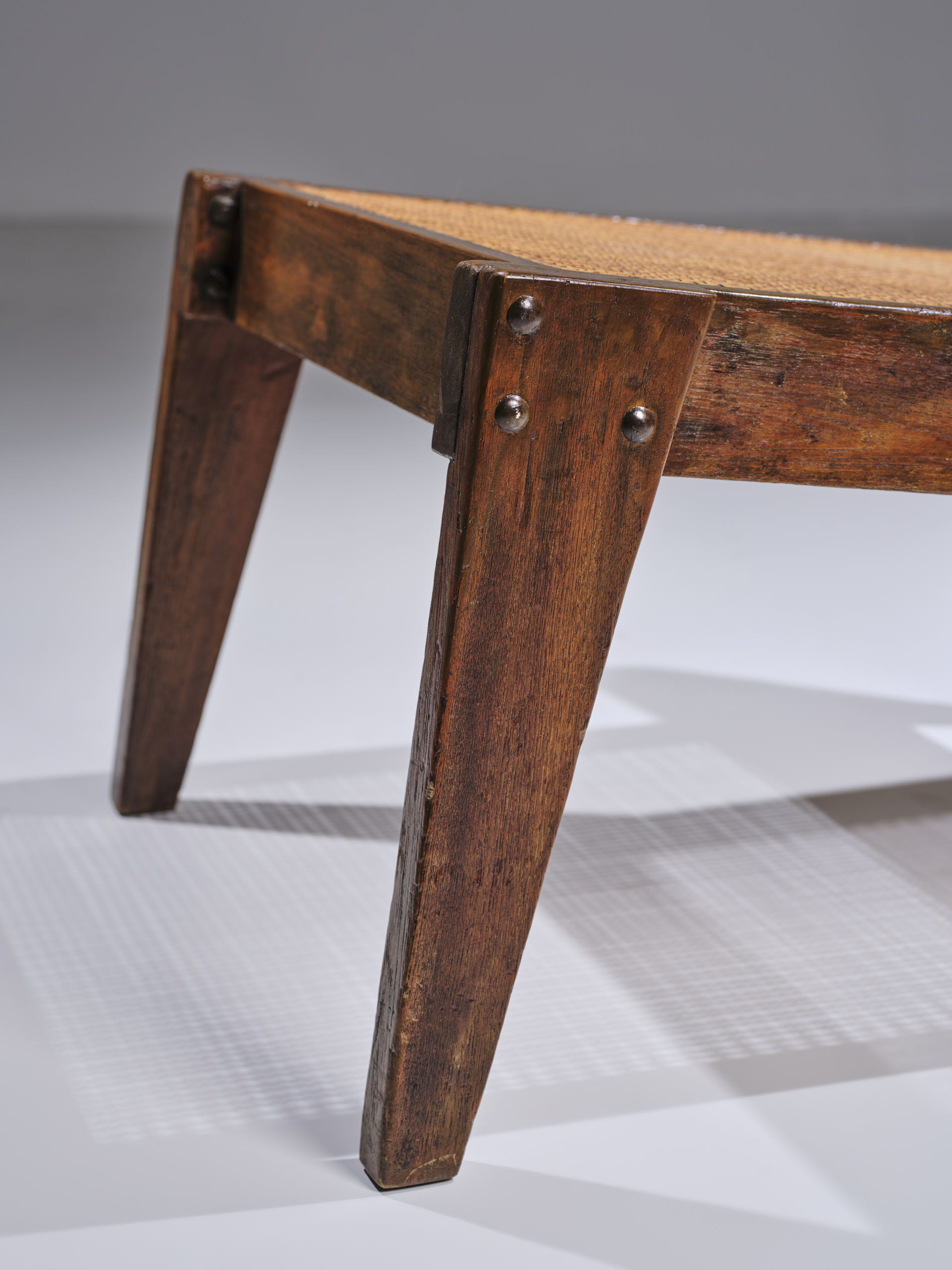
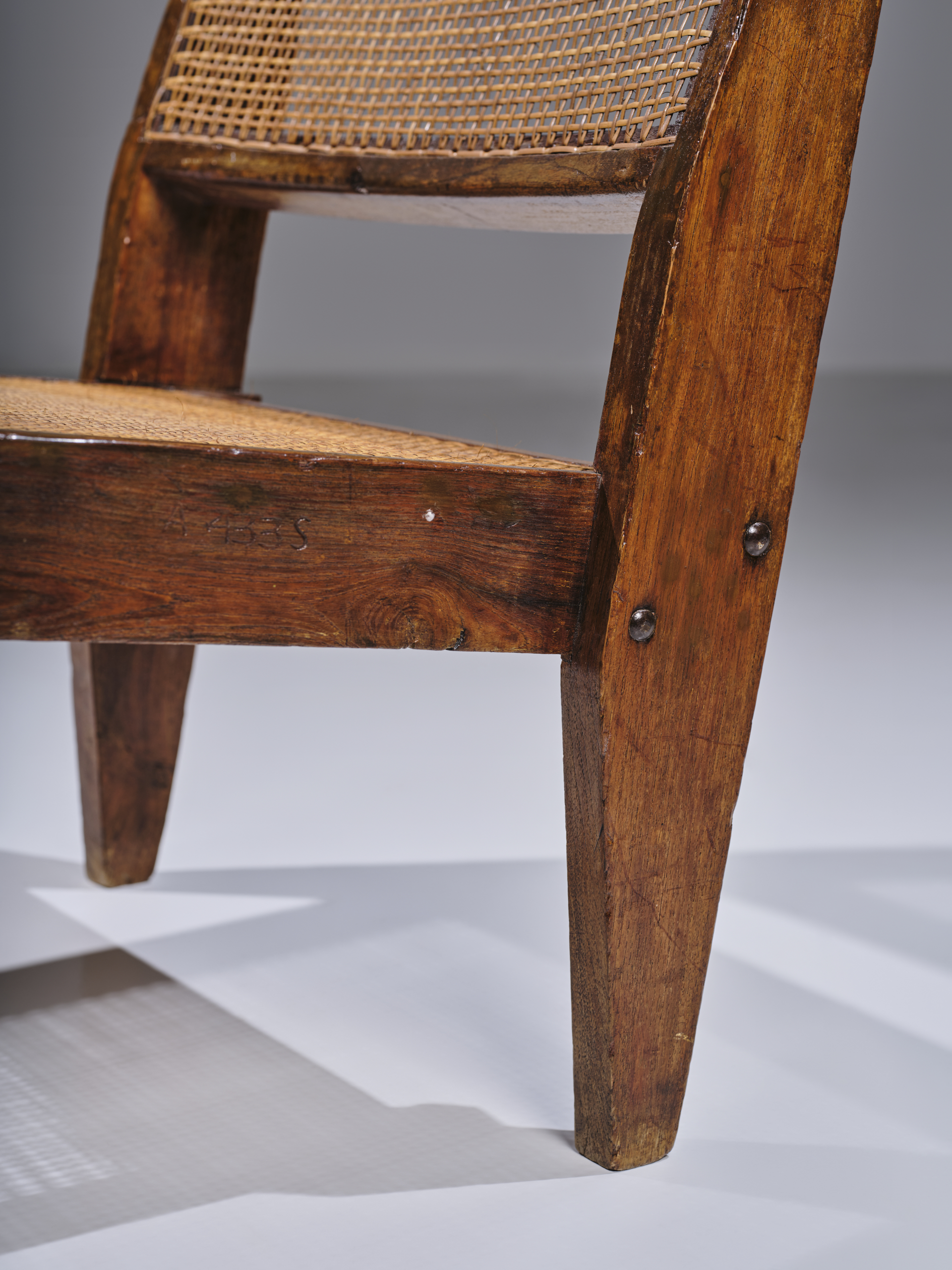
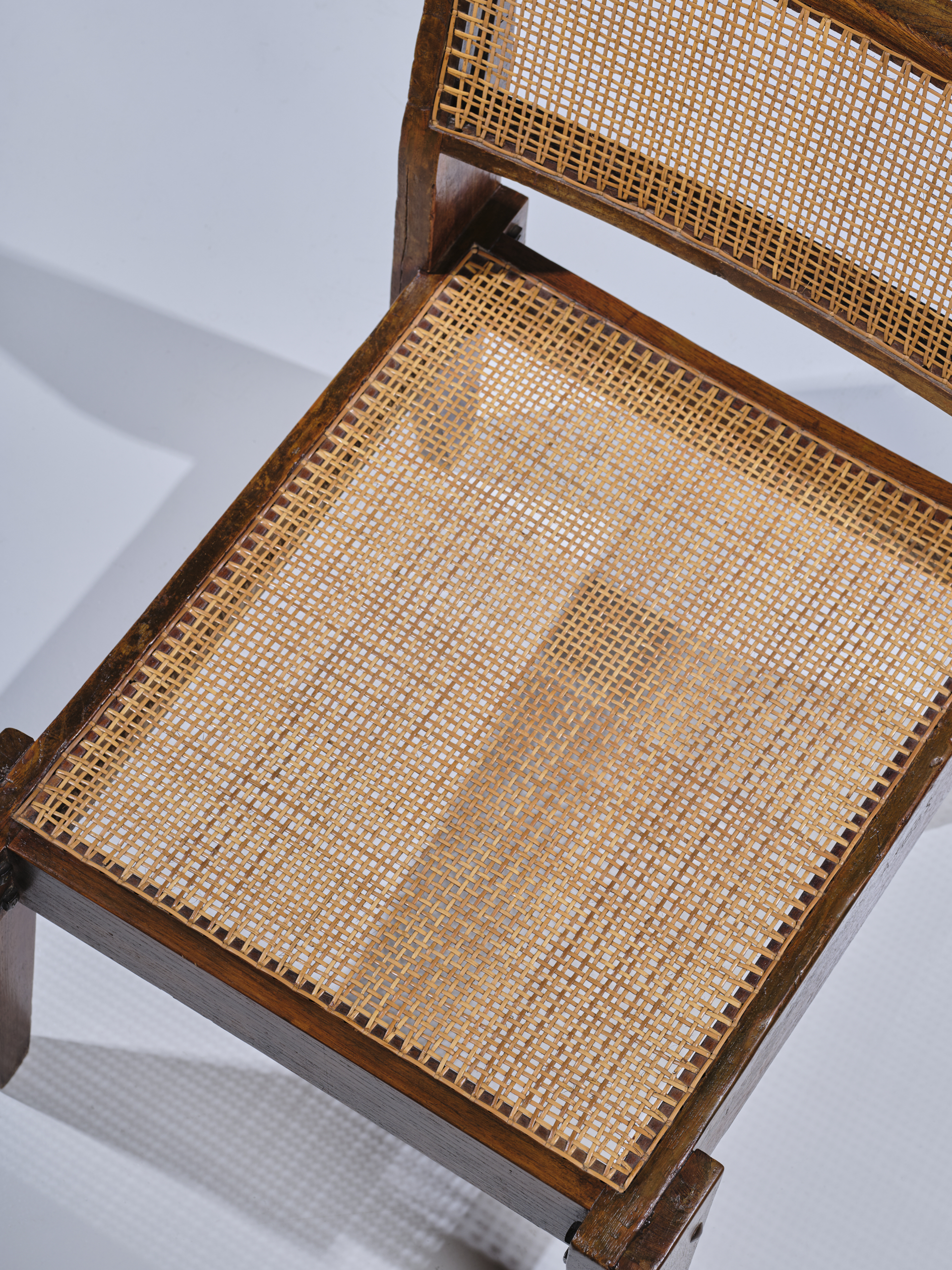

Pierre Jeanneret (1896-1967)
Demountable lounge chair
Ca. 1955
Solid teak, screw-in nuts, cane work.
Provenance: Private residences
H. 63,5 x L. 53 x D. 70,5 cm | H. 25 x L. 20.9 x D. 27.8 in


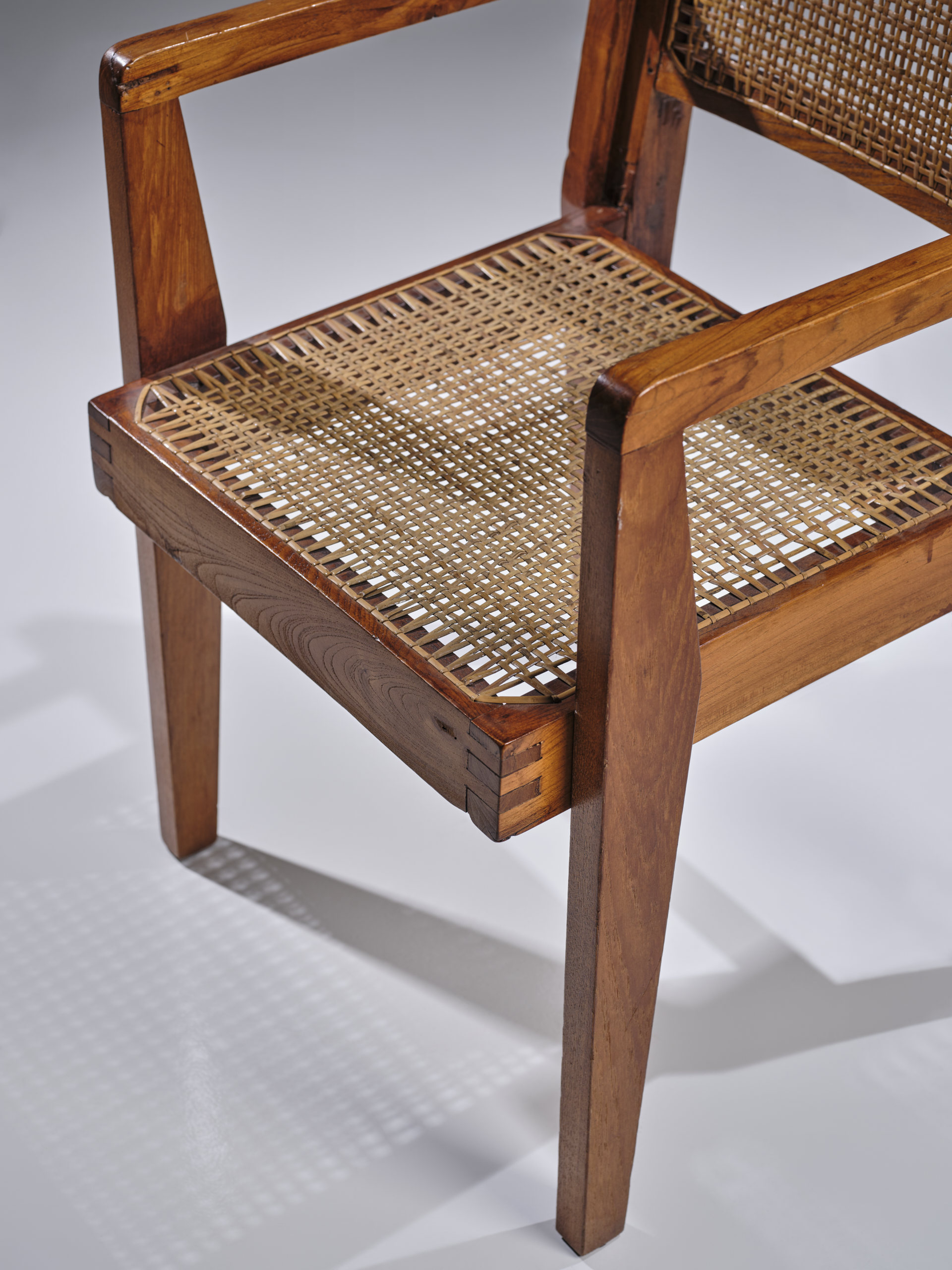

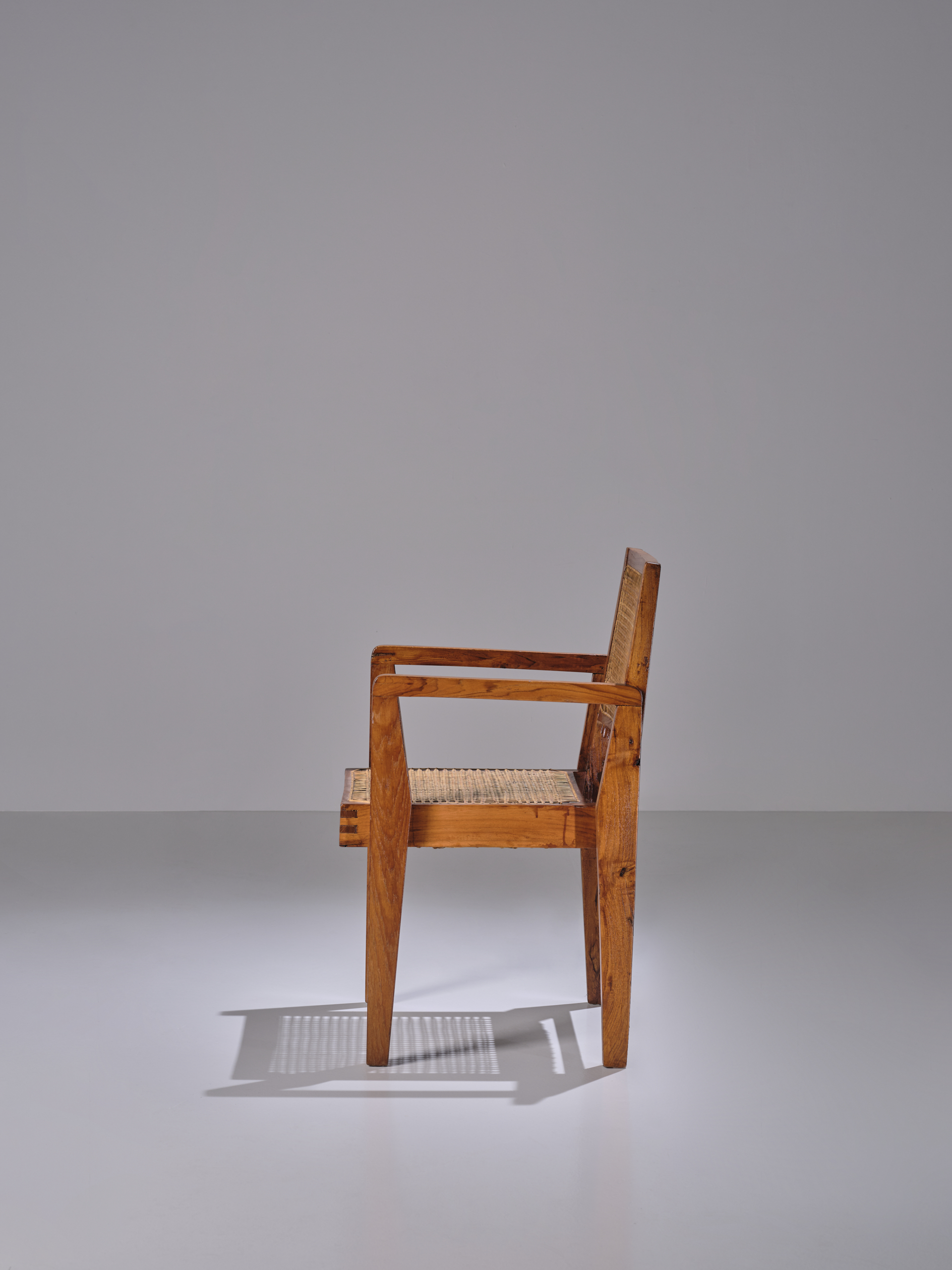
Pierre Jeanneret (1896-1967)
Armchair
Ca. 1955-60
Solid teak, cane work.
Provenance : Various collective buildings and private residences
H. 86 x L. 51 x D. 50 cm | H. 33.9 x L. 20.1 x D. 19.7 in
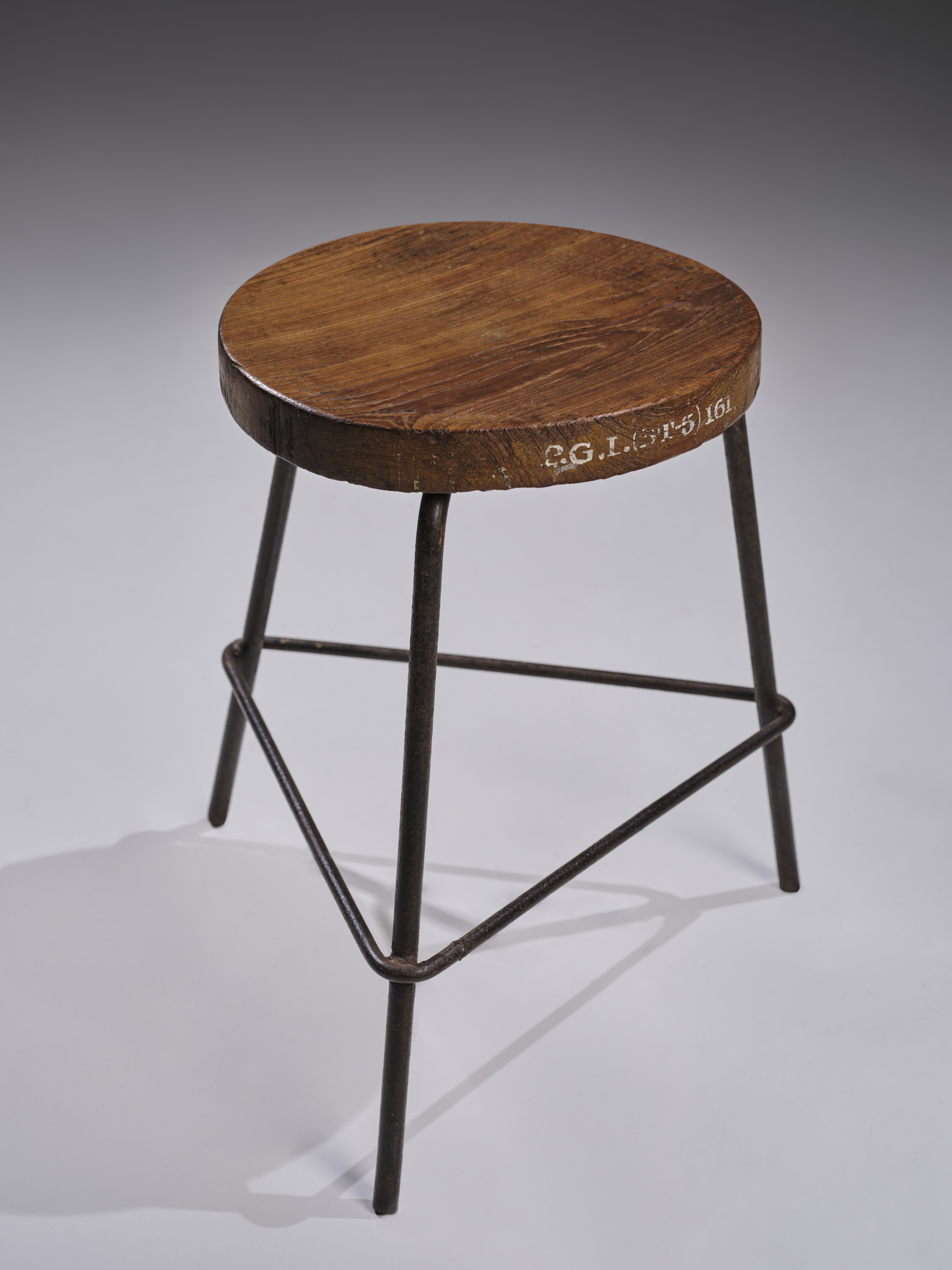

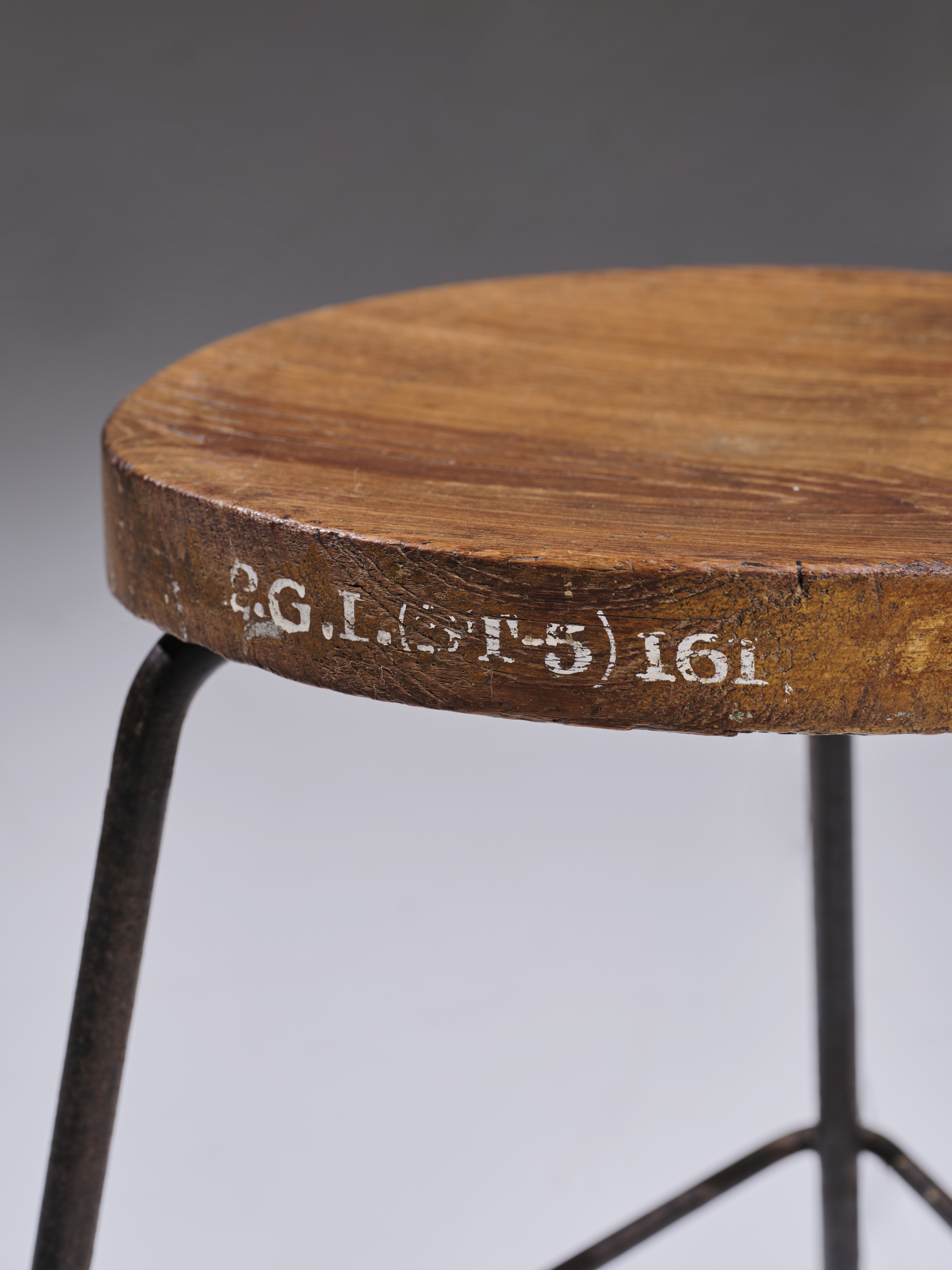
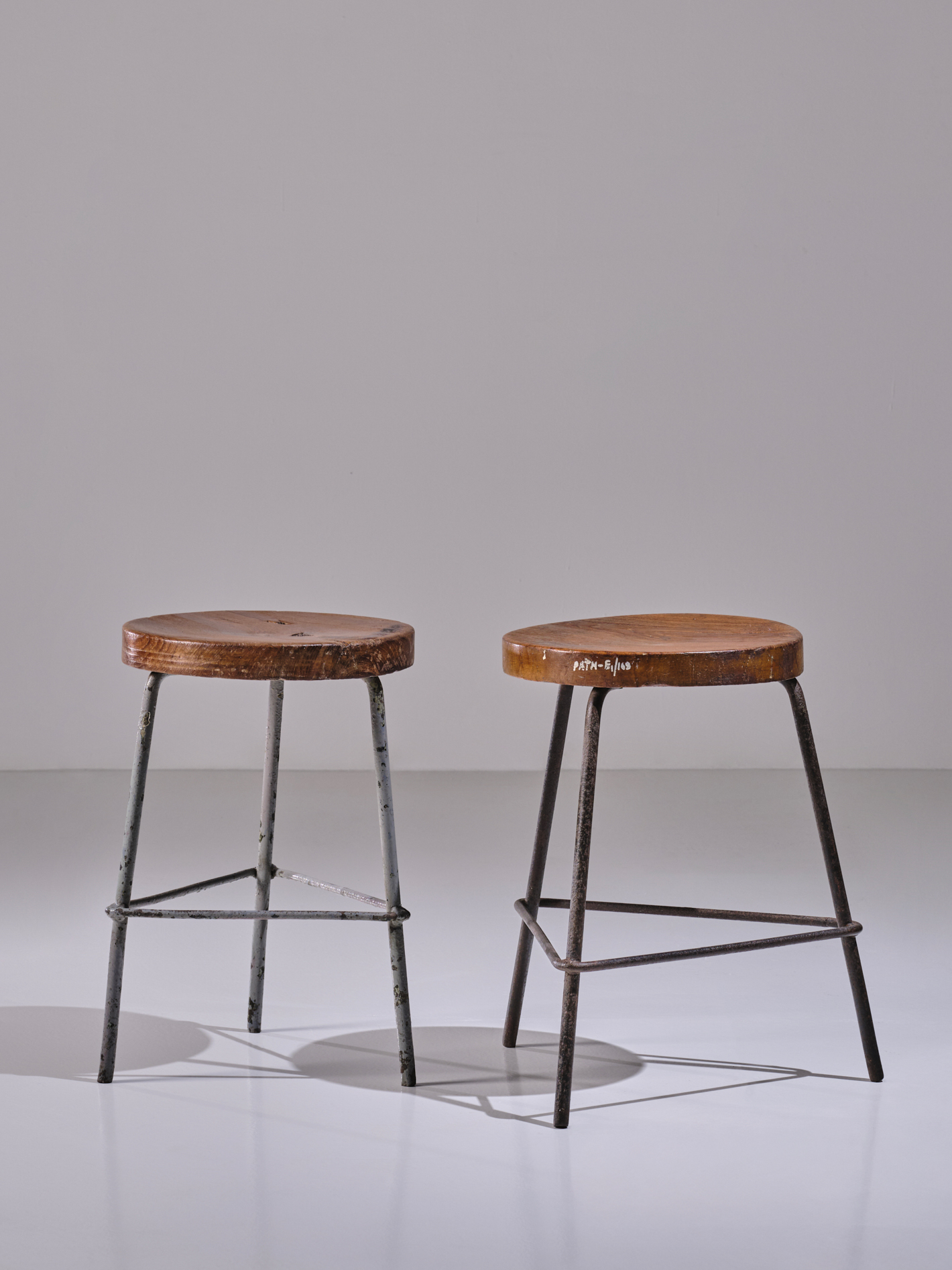
Pierre Jeanneret (1896-1967)
Stool
Ca. 1960
Raw iron rod, concave seat in solid teak.
Provenance: College of Architecture (1961 – 1965)
H. 48 x L. 33 x D. 33 cm | H. 18.9 x L. 13 x D. 13 in
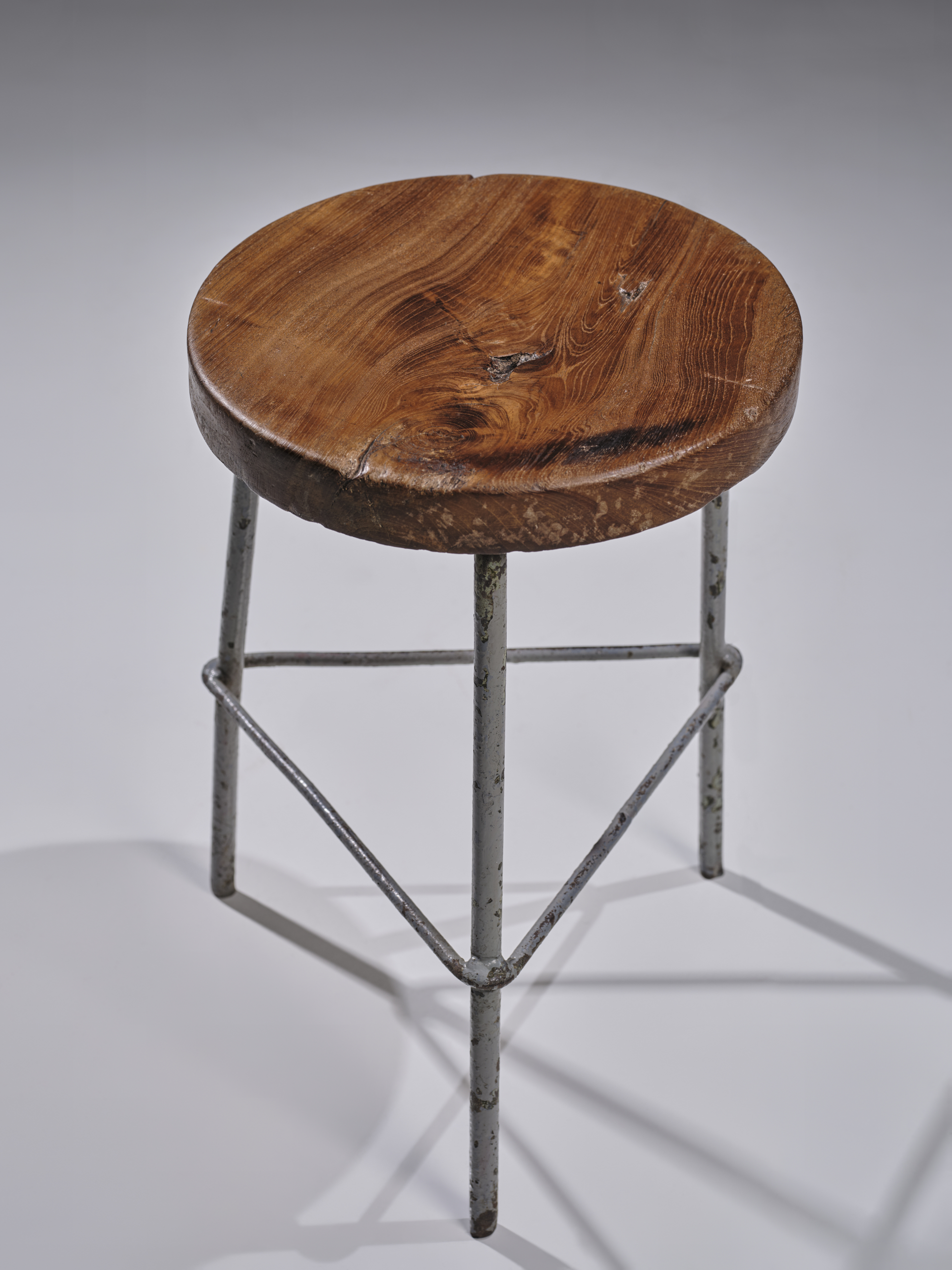
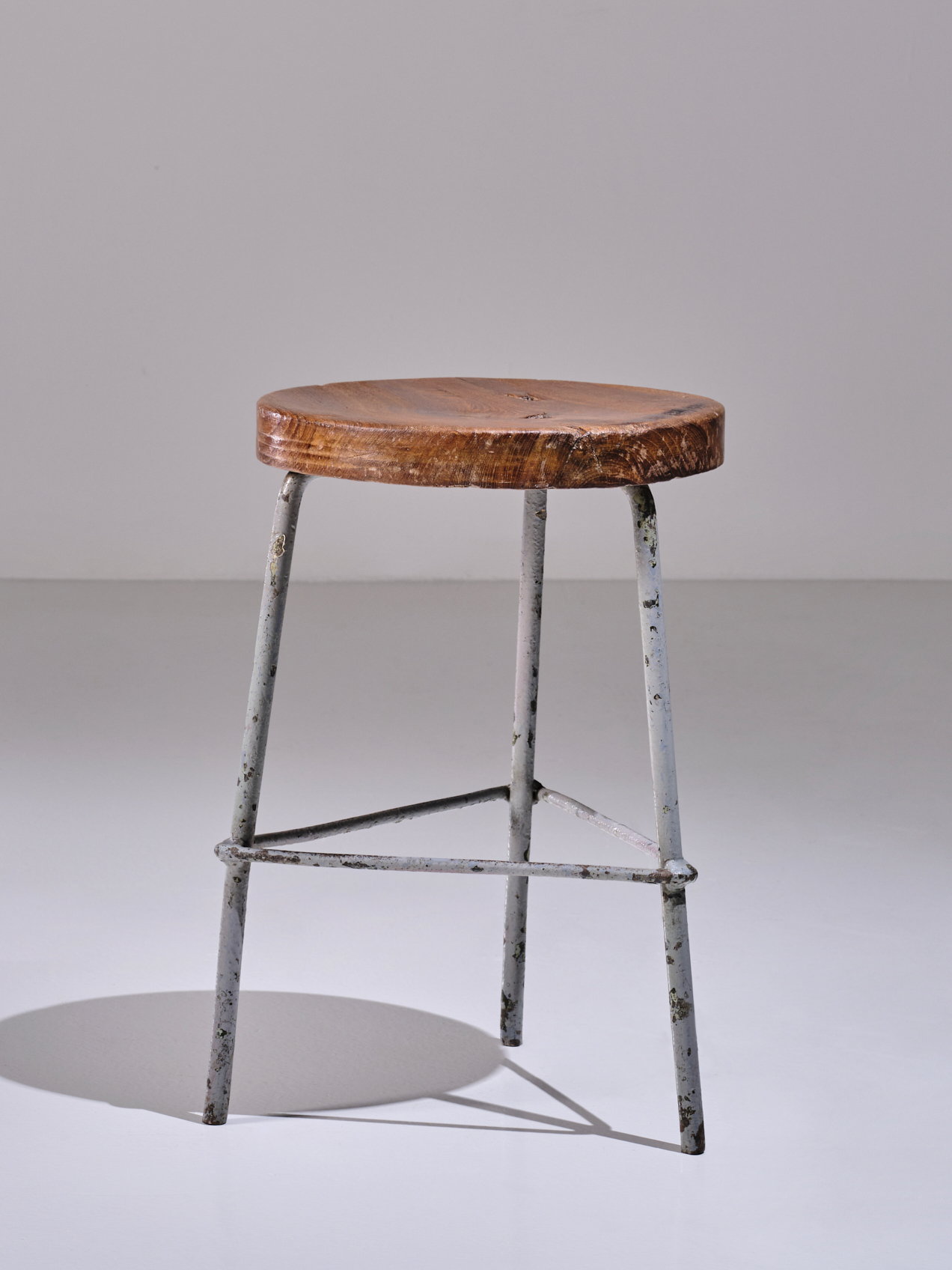
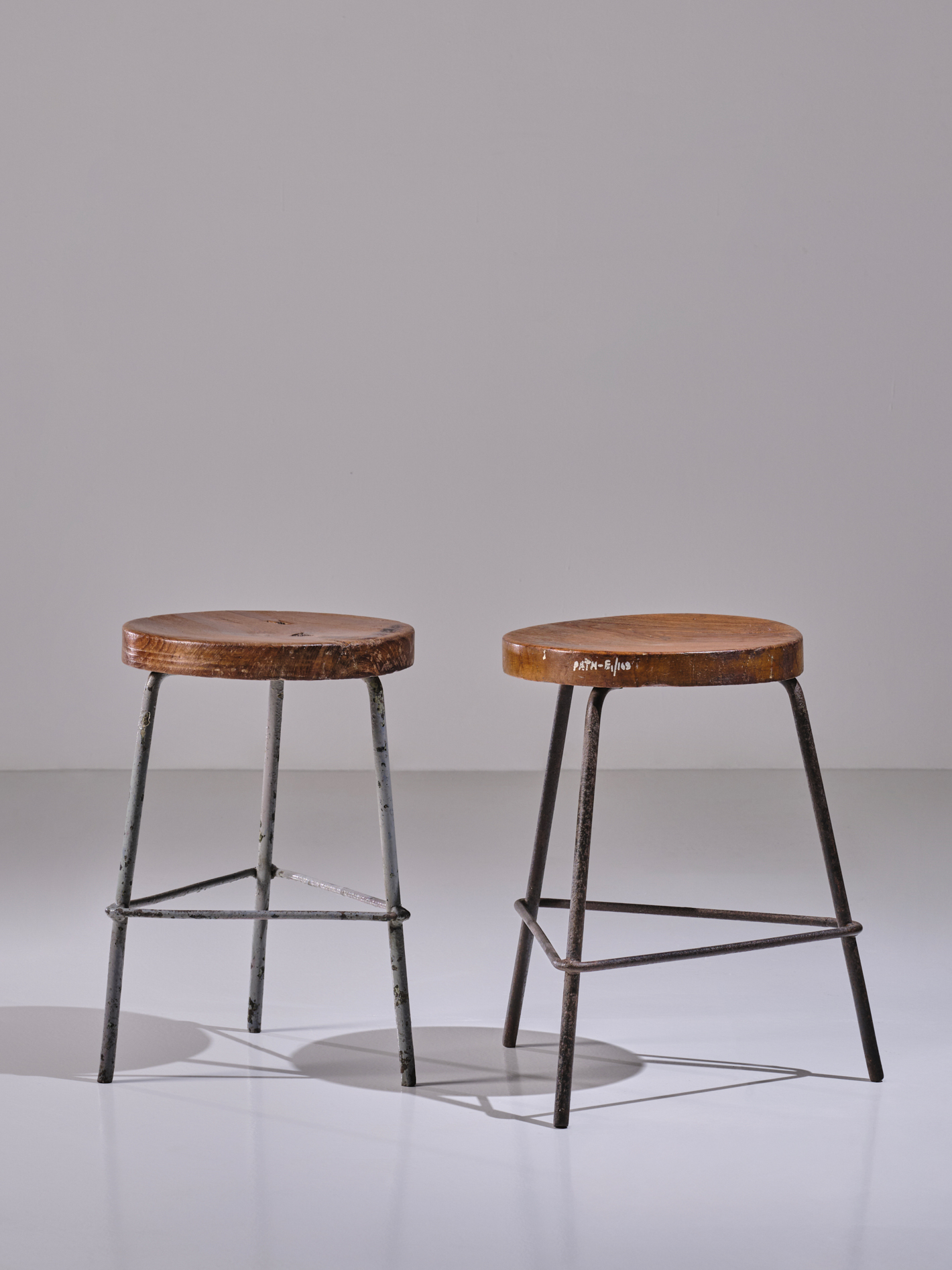
Pierre Jeanneret (1896-1967)
Stool
Ca. 1960
Raw gray iron rod, concave seat in solid teak.
Provenance: College of Architecture (1961 – 1965)
H. 48 x L. 33 x D. 33 cm | H. 18.9 x L. 13 x D. 13 in
Chandigarh, conceived as a new city and symbol of India’s independence — “the expression of national hope for the future,” as Nehru put it — has become an enduring icon of 20th-century architecture and design. Established from scratch after the 1947 partition of Punjab to replace Lahore as the Indian capital, Chandigarh was envisioned as a modern, functional city reflecting the aspirations of a newly independent nation. Le Corbusier, appointed chief architect, was joined by Pierre Jeanneret, E. Maxwell Fry, and Jane B. Drew to bring this ambitious vision to life.
From 1951 to 1967, Jeanneret dedicated nearly fifteen years on-site, overseeing the construction of hundreds of public buildings and private residences. Beyond architecture, he designed custom furniture for these spaces, combining teak, cane, and geometric forms to create pieces that were both functional and poetic, perfectly adapted to the local climate, daily life, and cultural practices. Each piece exemplified a dialogue between modernist principles and Indian craftsmanship, blending innovation with tradition.
In Chandigarh, Jeanneret’s work reflects a deep respect for the local context: he carefully observed climate, materials, and the customs of residents, using locally sourced teak and traditional techniques to craft furniture that was both durable and elegant. While often overshadowed by his famous cousin, Jeanneret played a decisive role in shaping Chandigarh’s built environment and interiors. As Walter Gropius noted, “I have always considered him one of the most reliable guides of contemporary architecture, full of talent and ideas of his own.” Today, his furniture and architectural legacy remain timeless icons of modern design, celebrated worldwide.
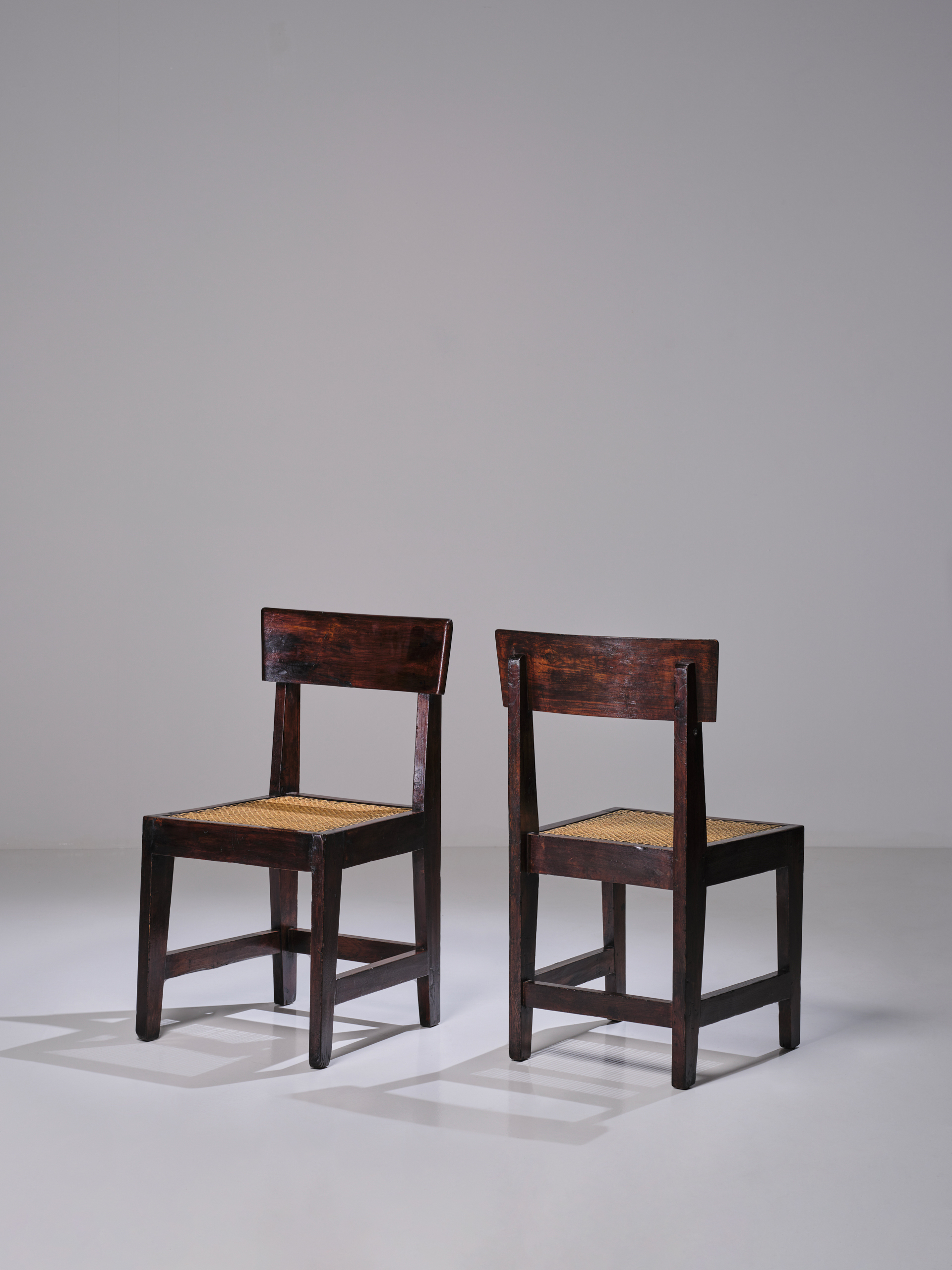
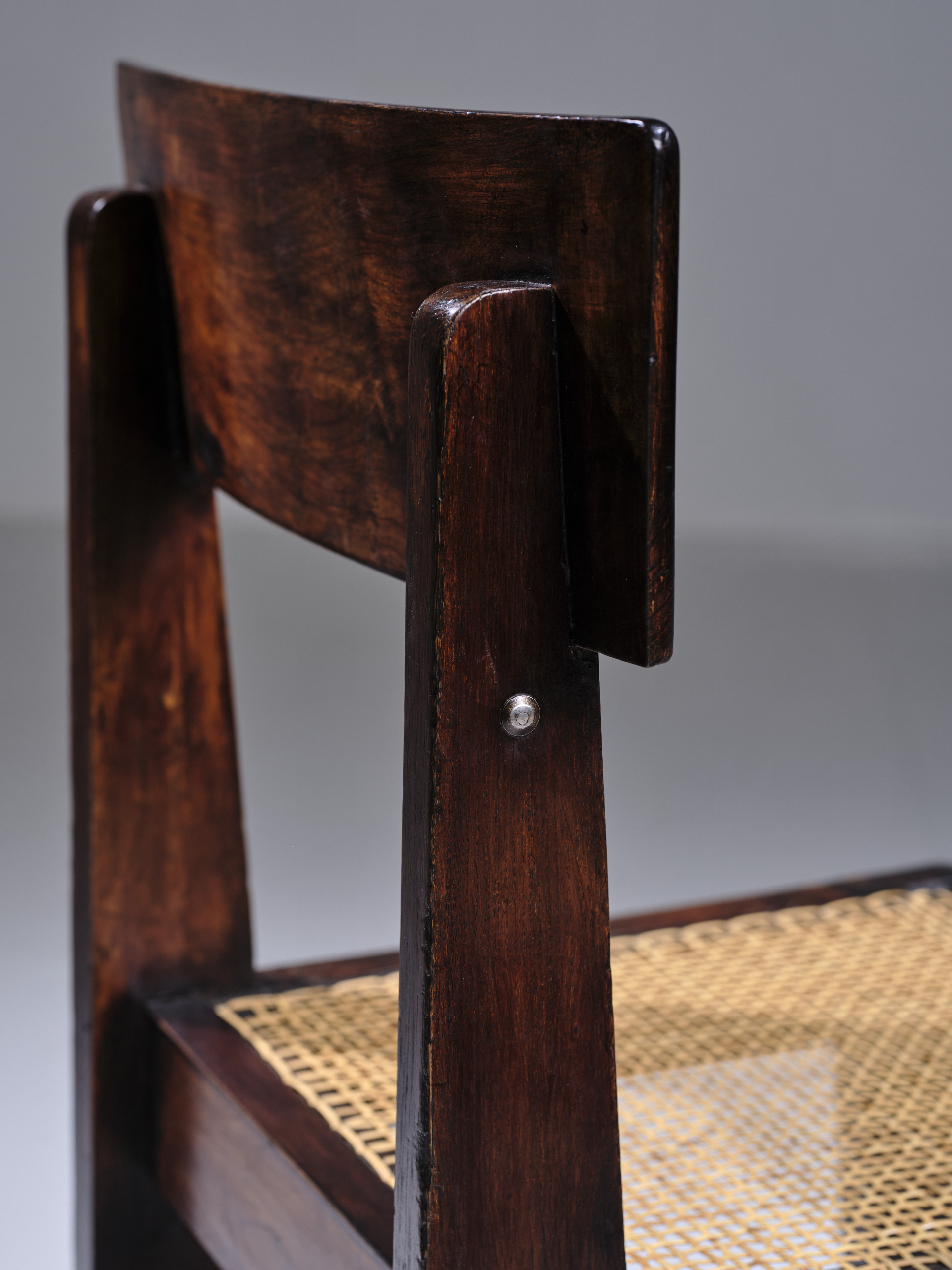
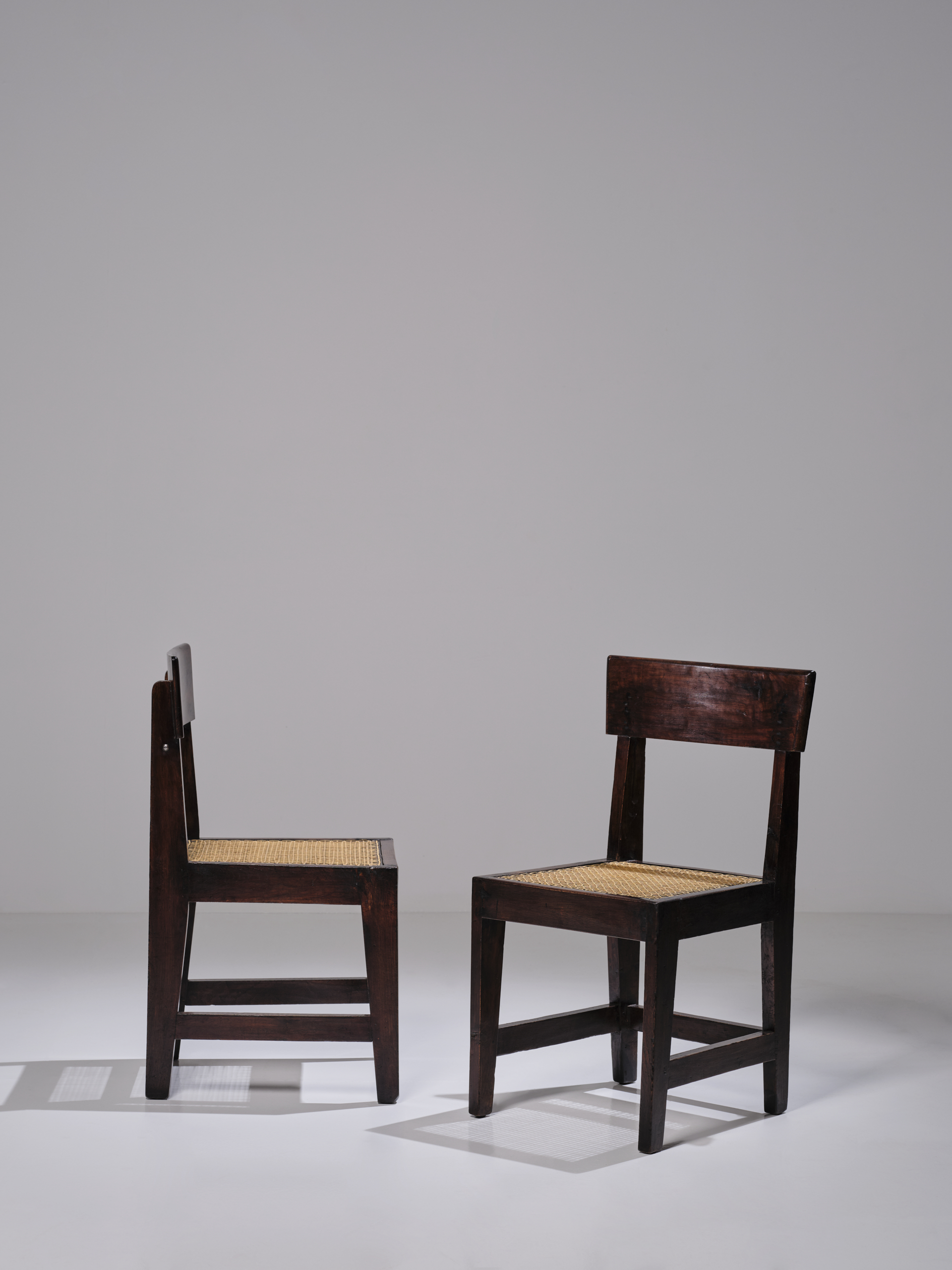
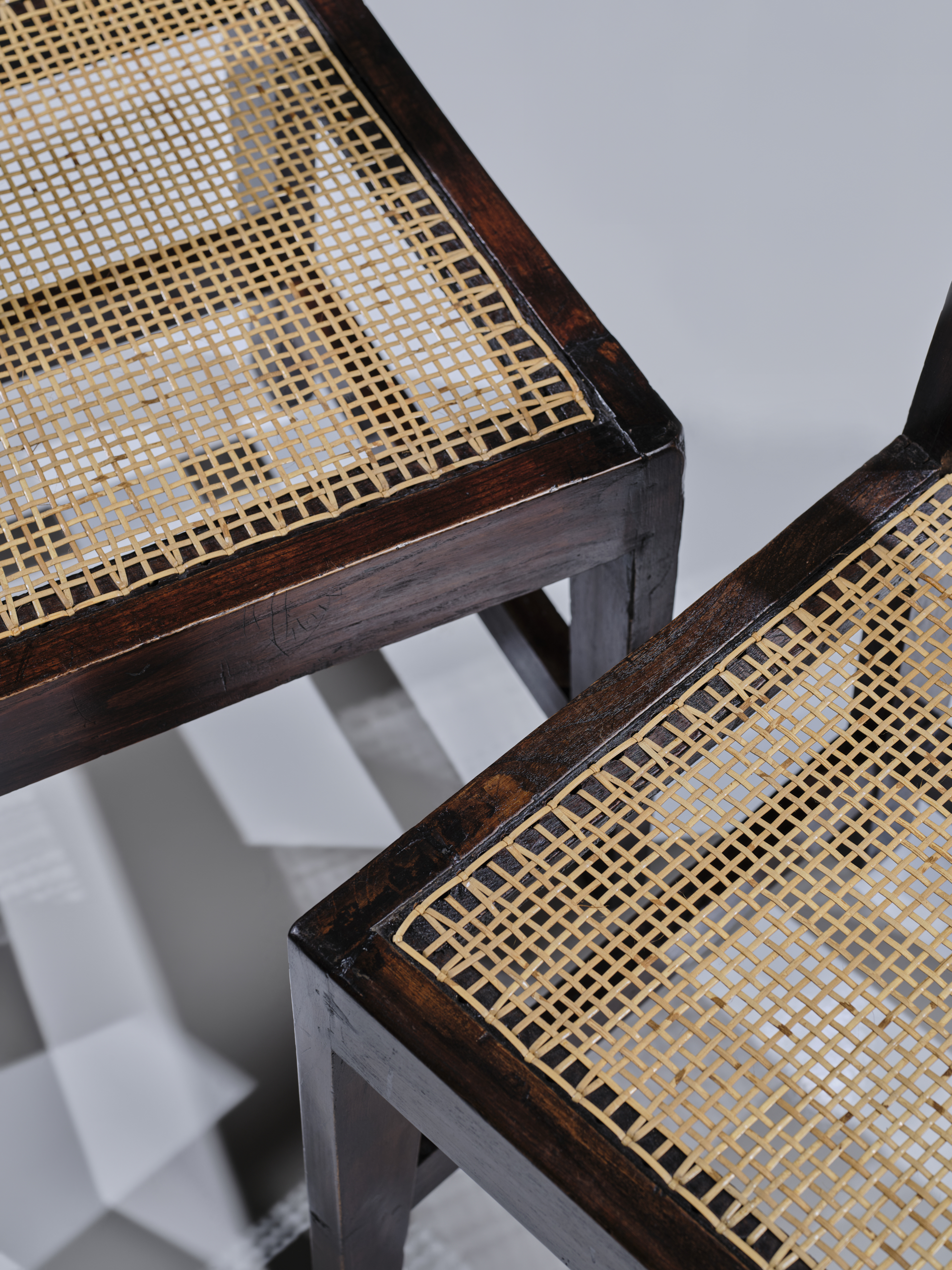
Pierre Jeanneret (1896-1967)
Pair of chairs
Ca. 1955
Solid teak, cane.
Provenance: Higher Secondary School 1
H. 85 x L. 55,5 x D. 55,5 cm | H. 33.5 x L. 21.9 x D. 21.9 in
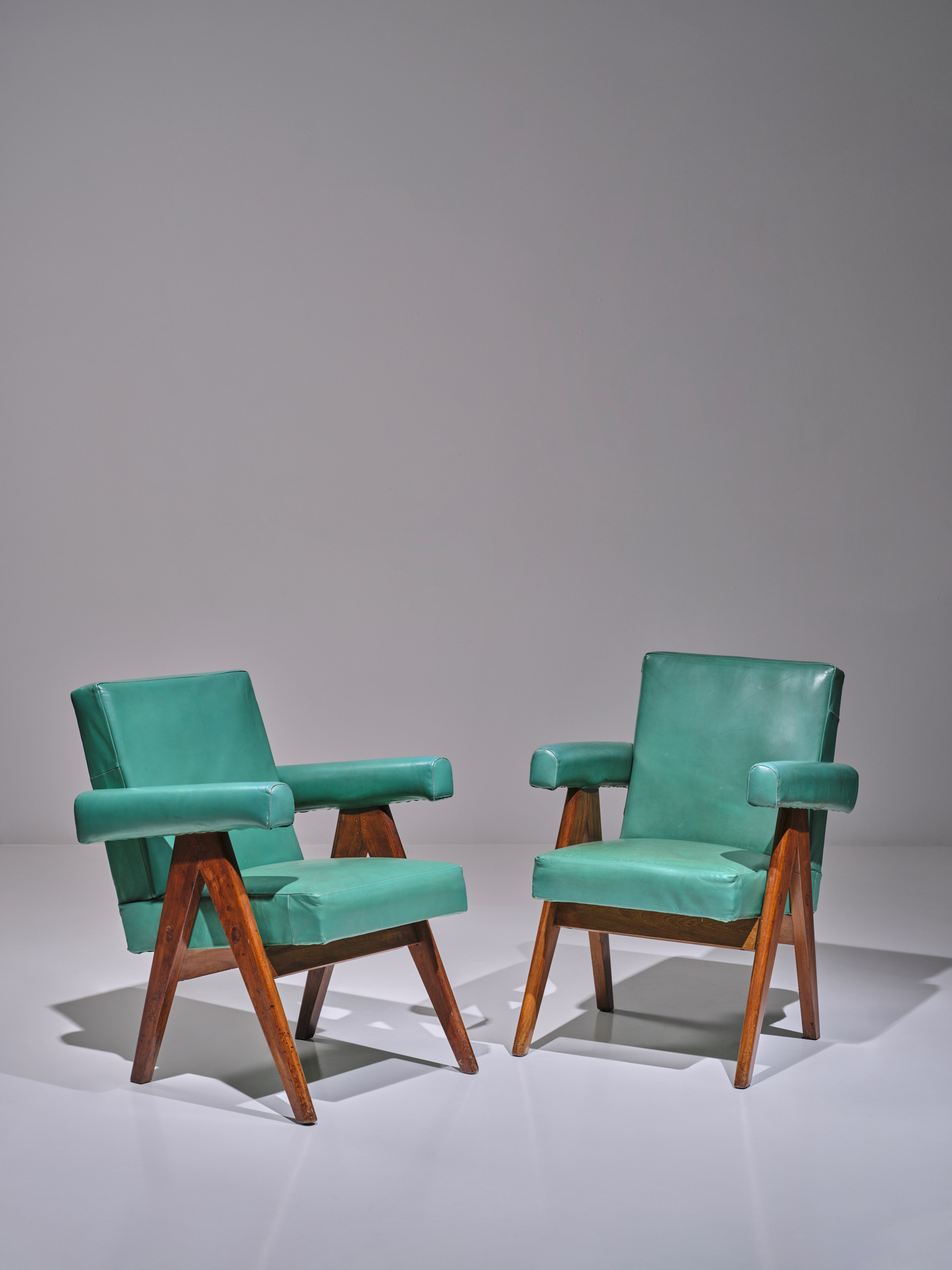
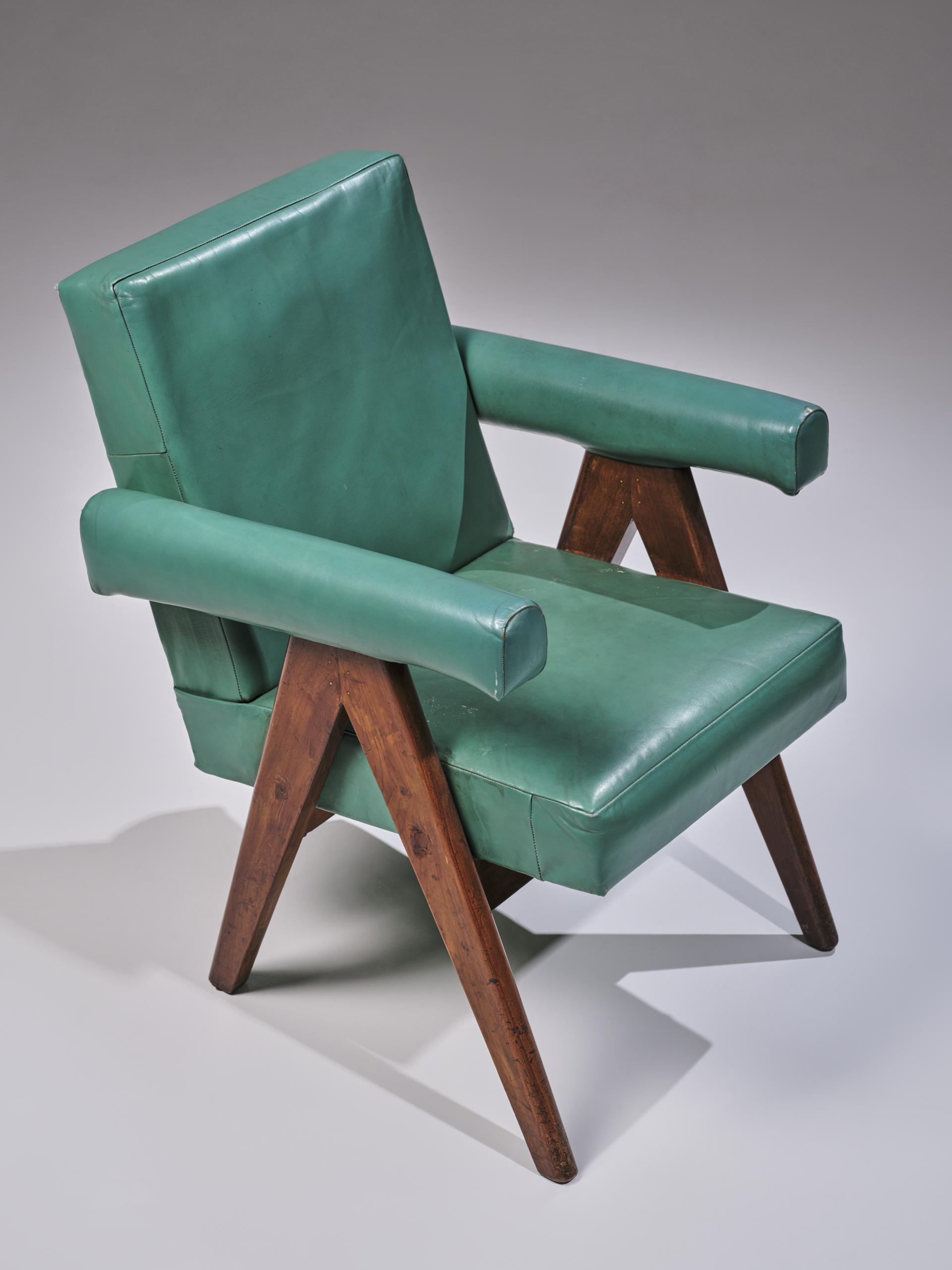
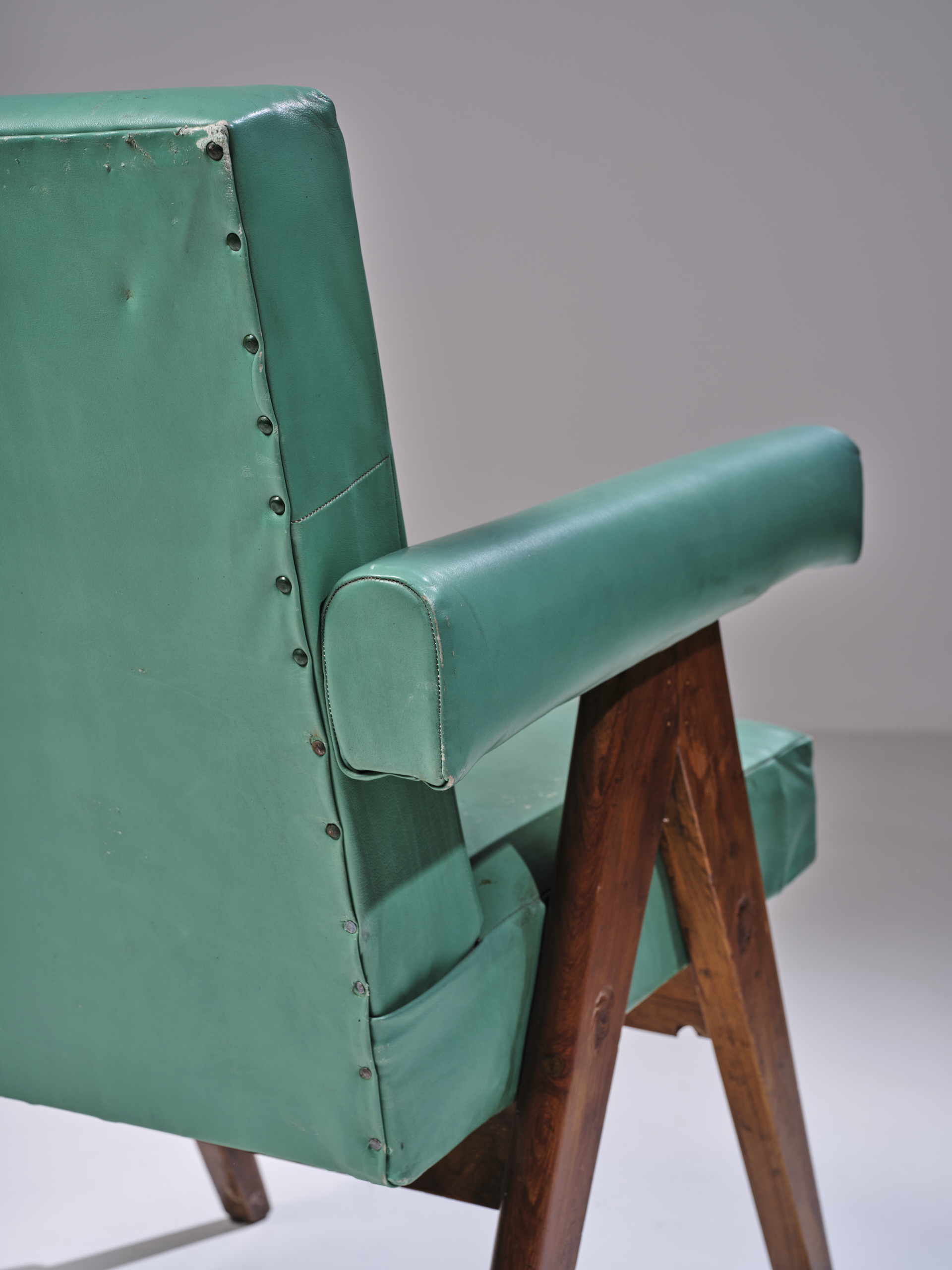


Pierre Jeanneret (1896-1967)
‘Committee’ armchairs
Ca. 1960
Structure in solid teak, seat and back covered with original green skai.
Provenance: Special commission for various administrative buildings
H. 80 x L. 61 x D. 70 cm | H. 31.5 x L. 24 x D. 27.5 in.
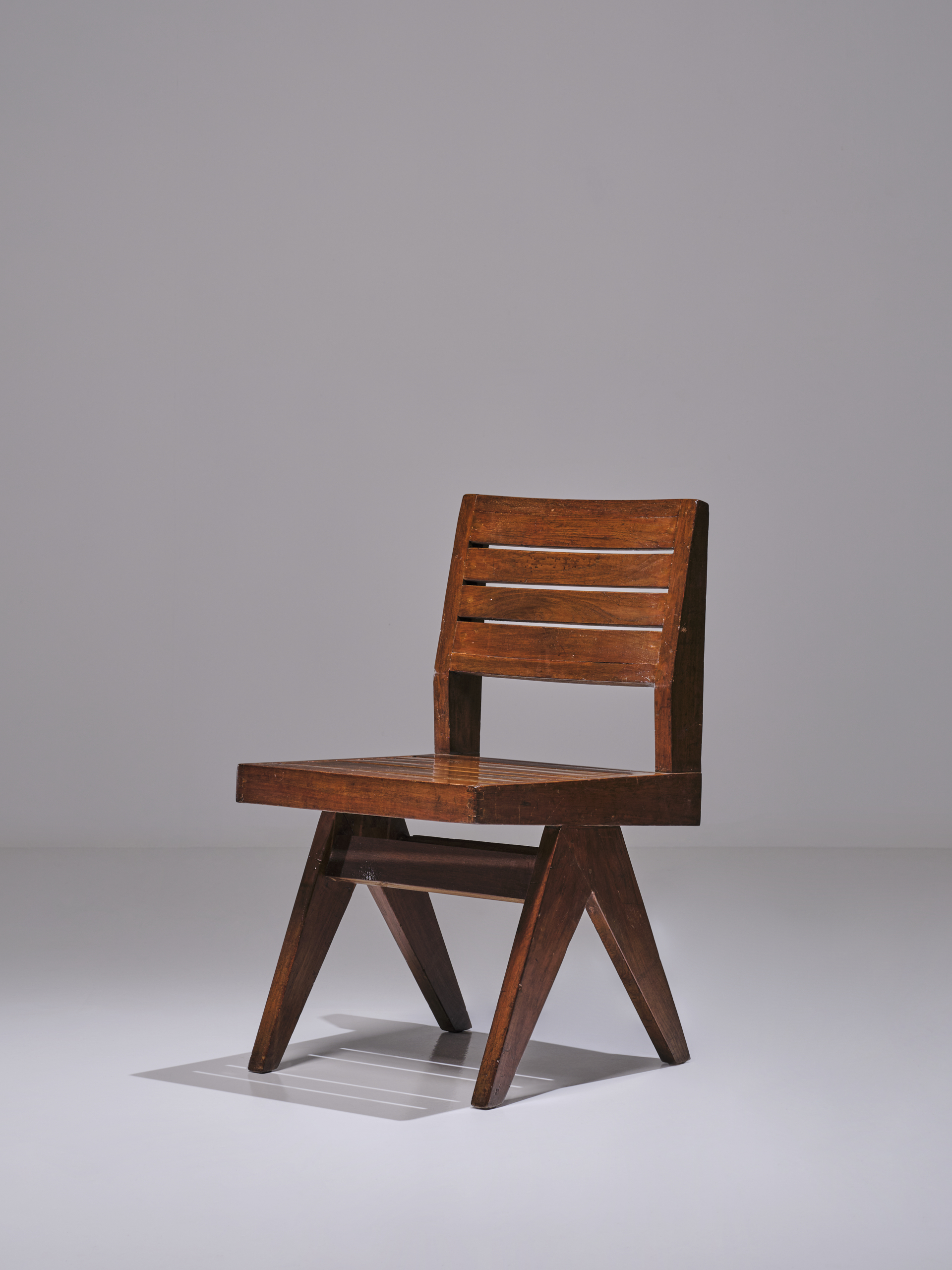
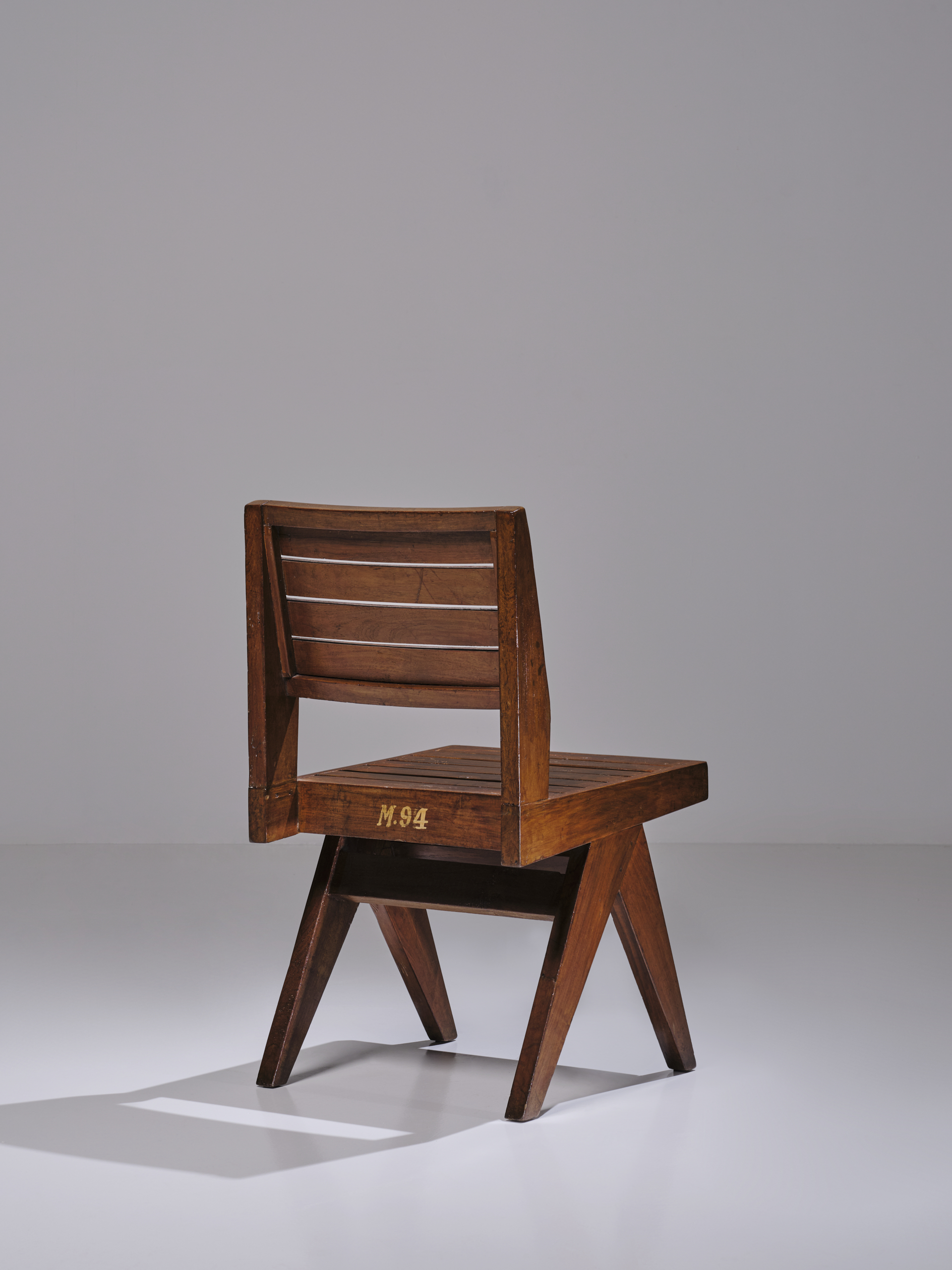
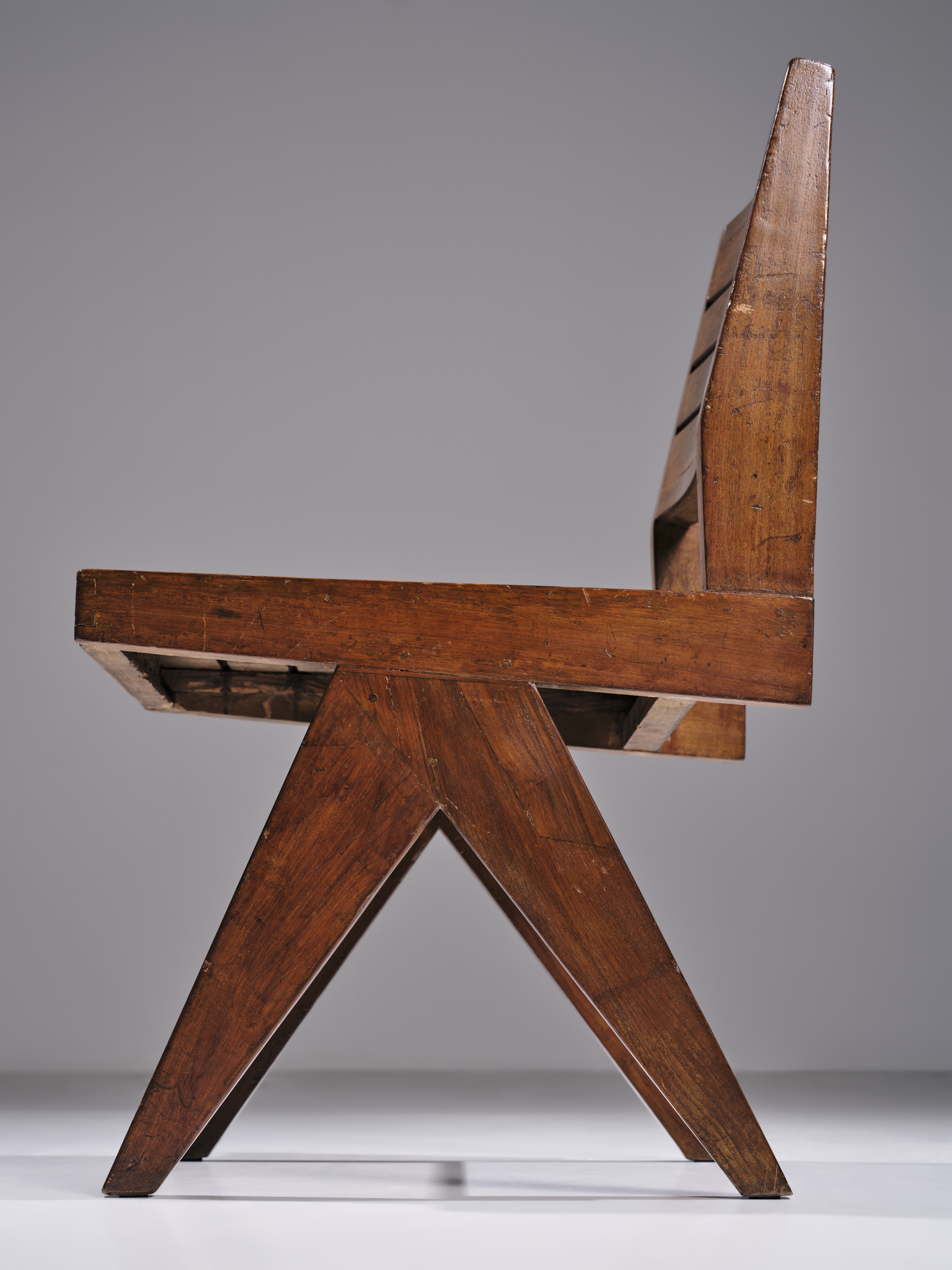
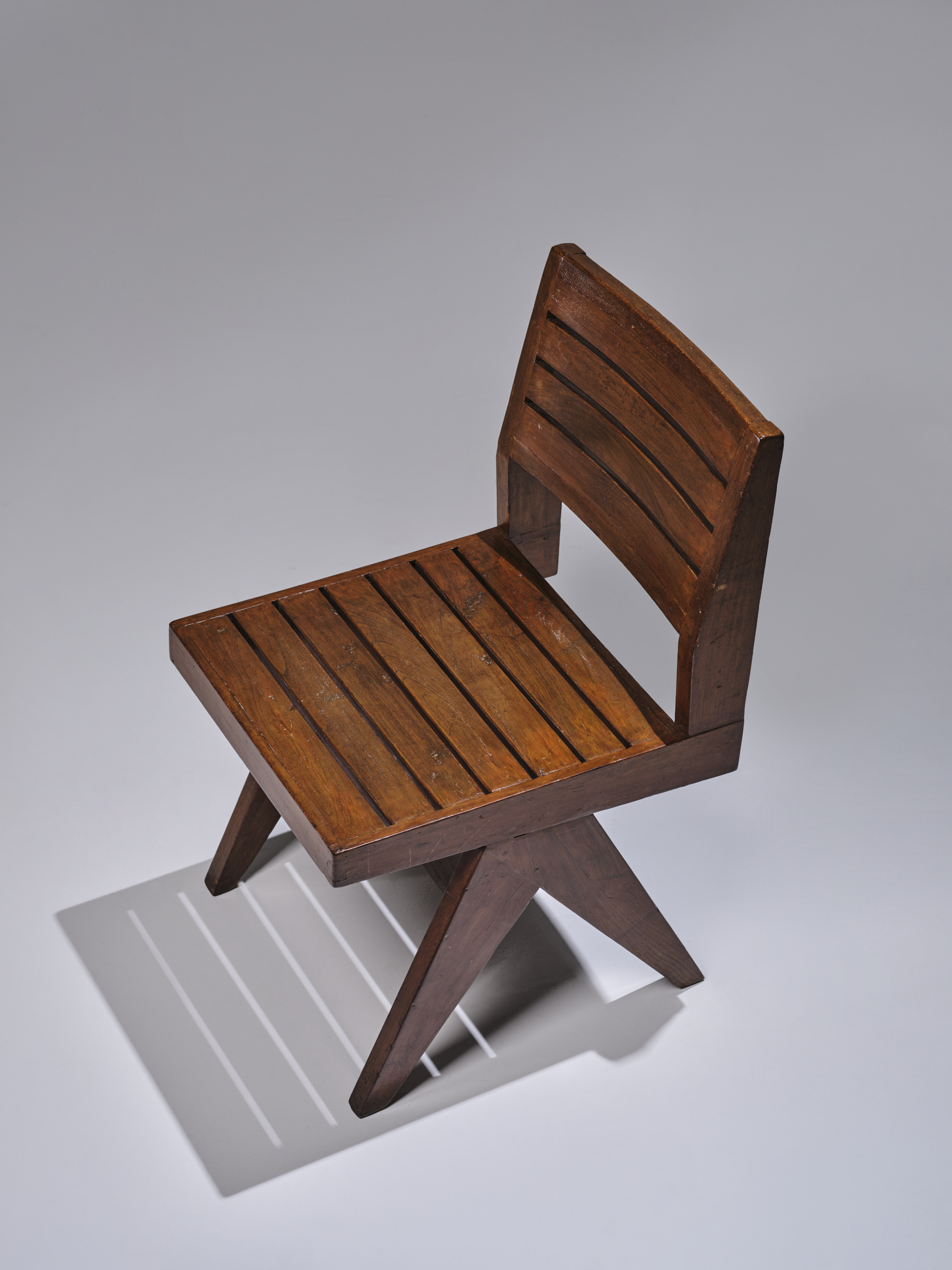
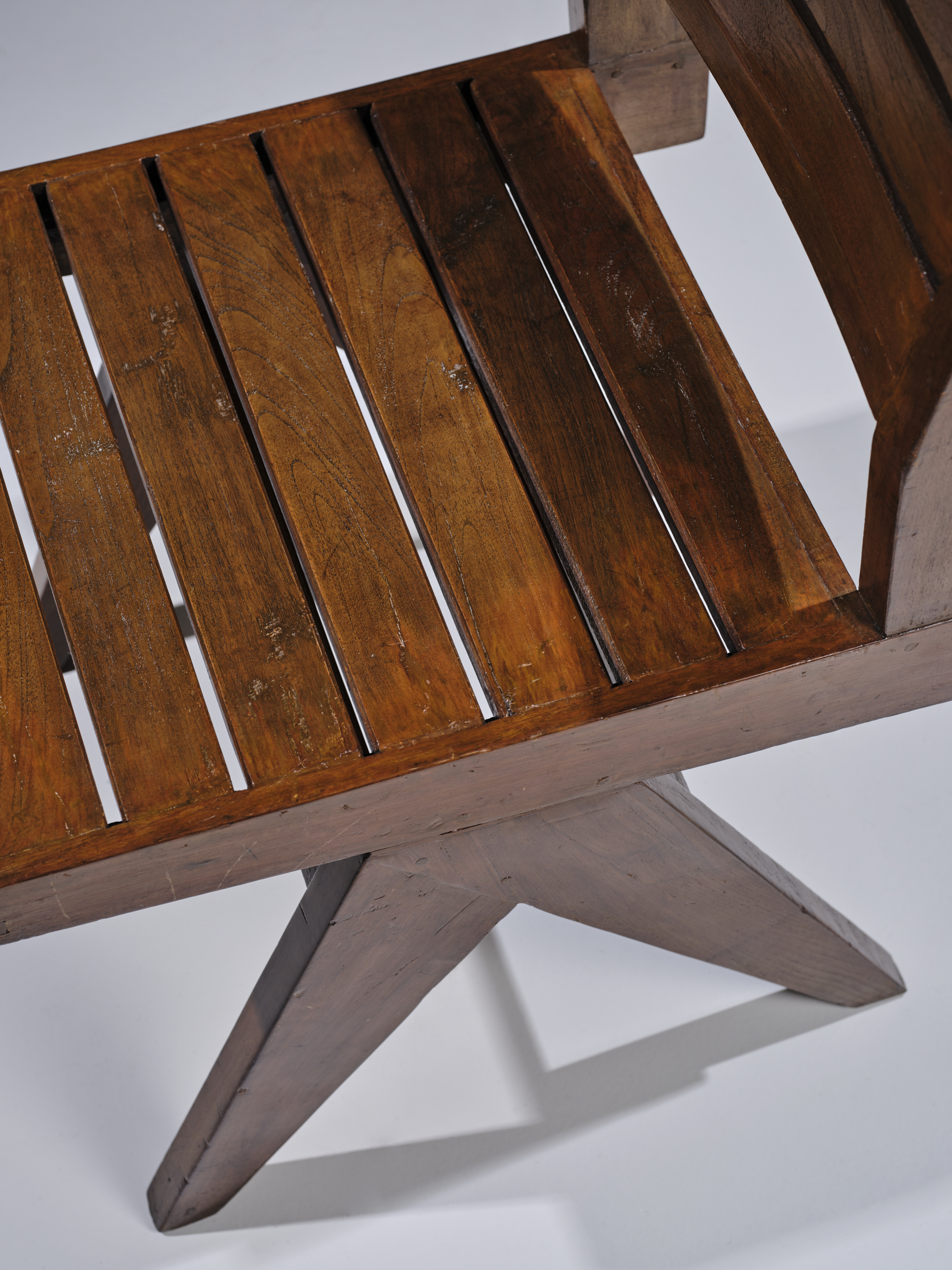
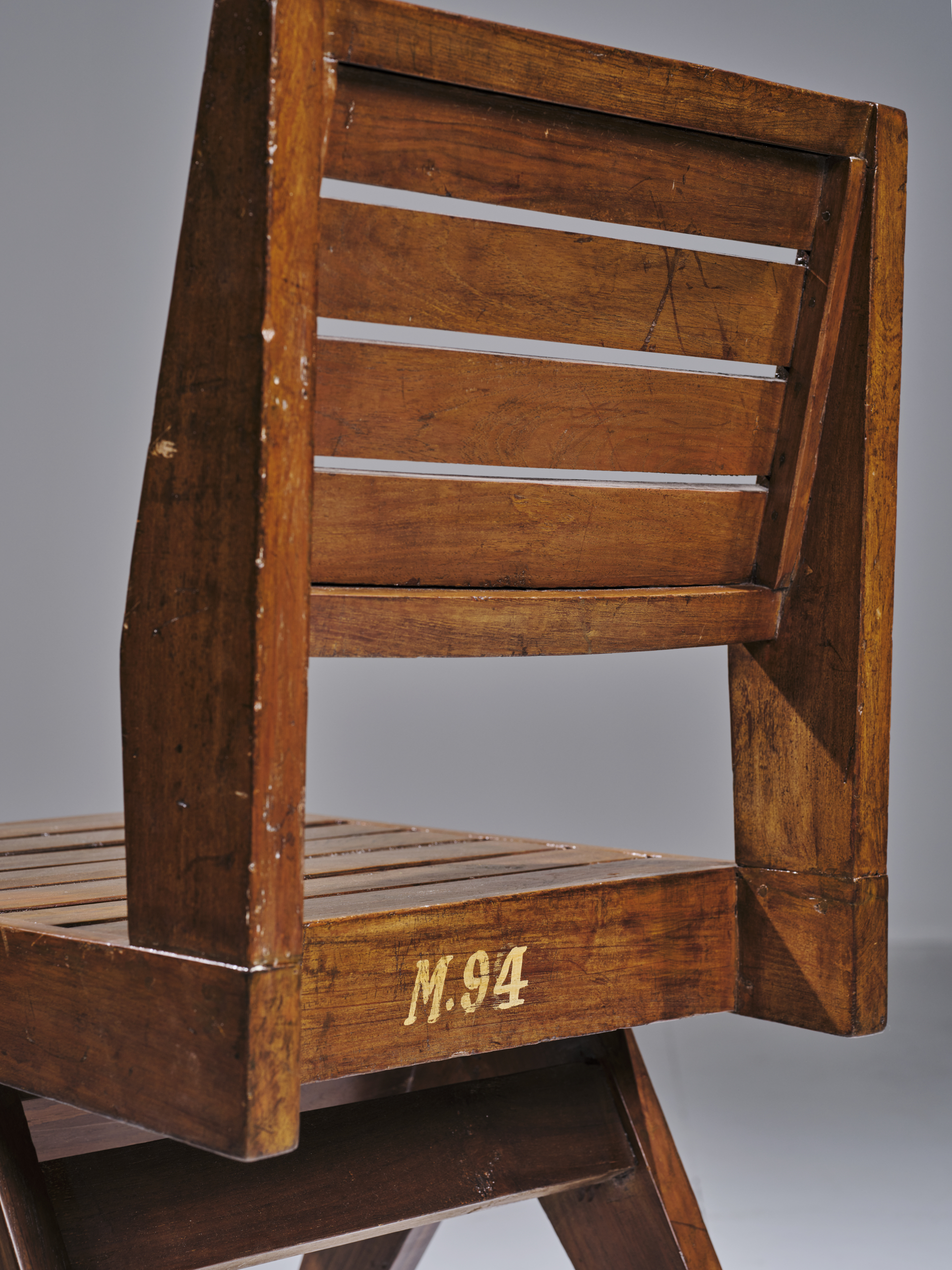
Pierre Jeanneret (1896-1967)
Chair
Ca. 1960
Solid teak. Version with slats.
H. 81 x L. 44,5 x D. 52,5 cm | H. 31.9 x L. 17.5 x D. 20.7 in

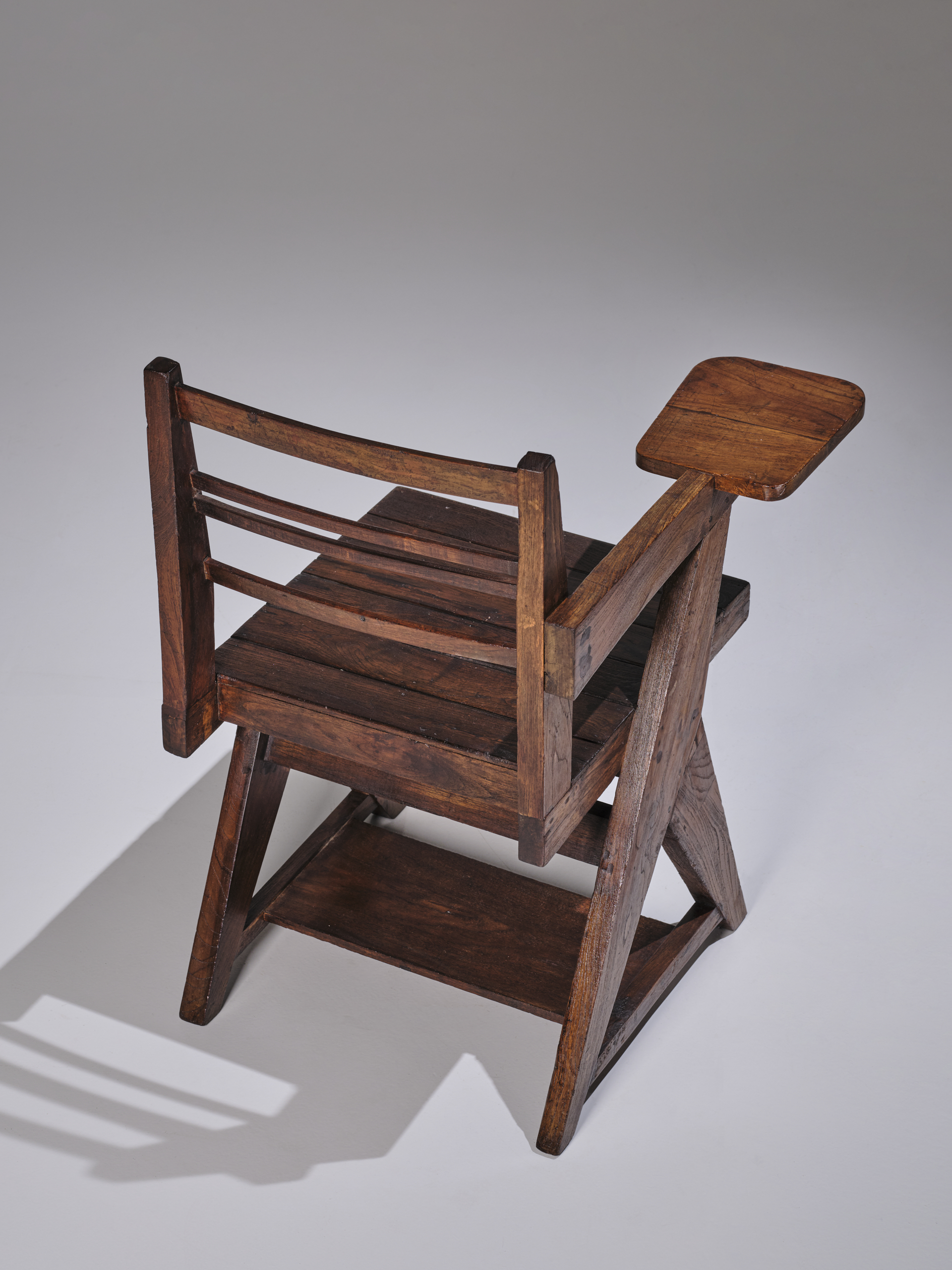
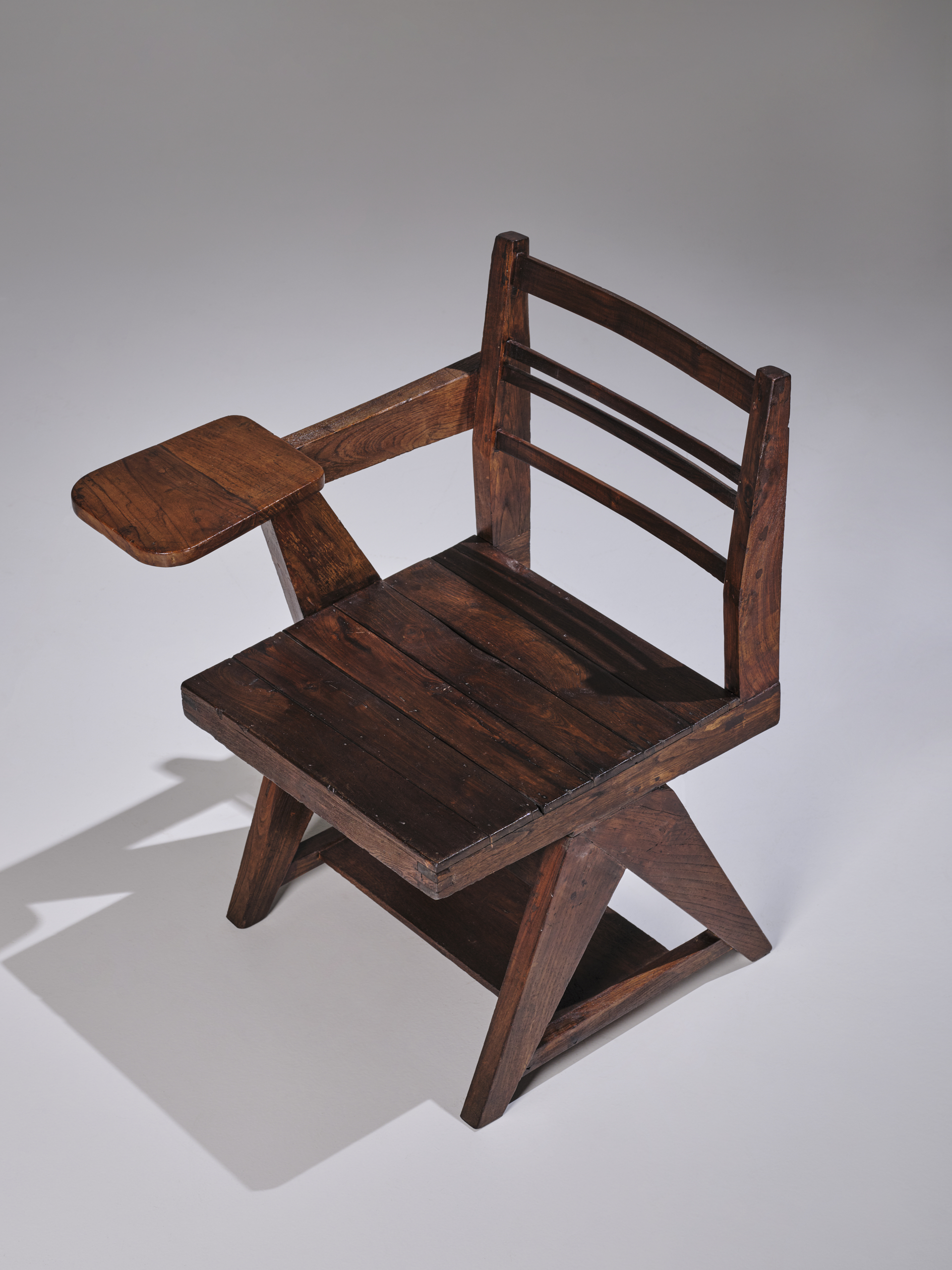
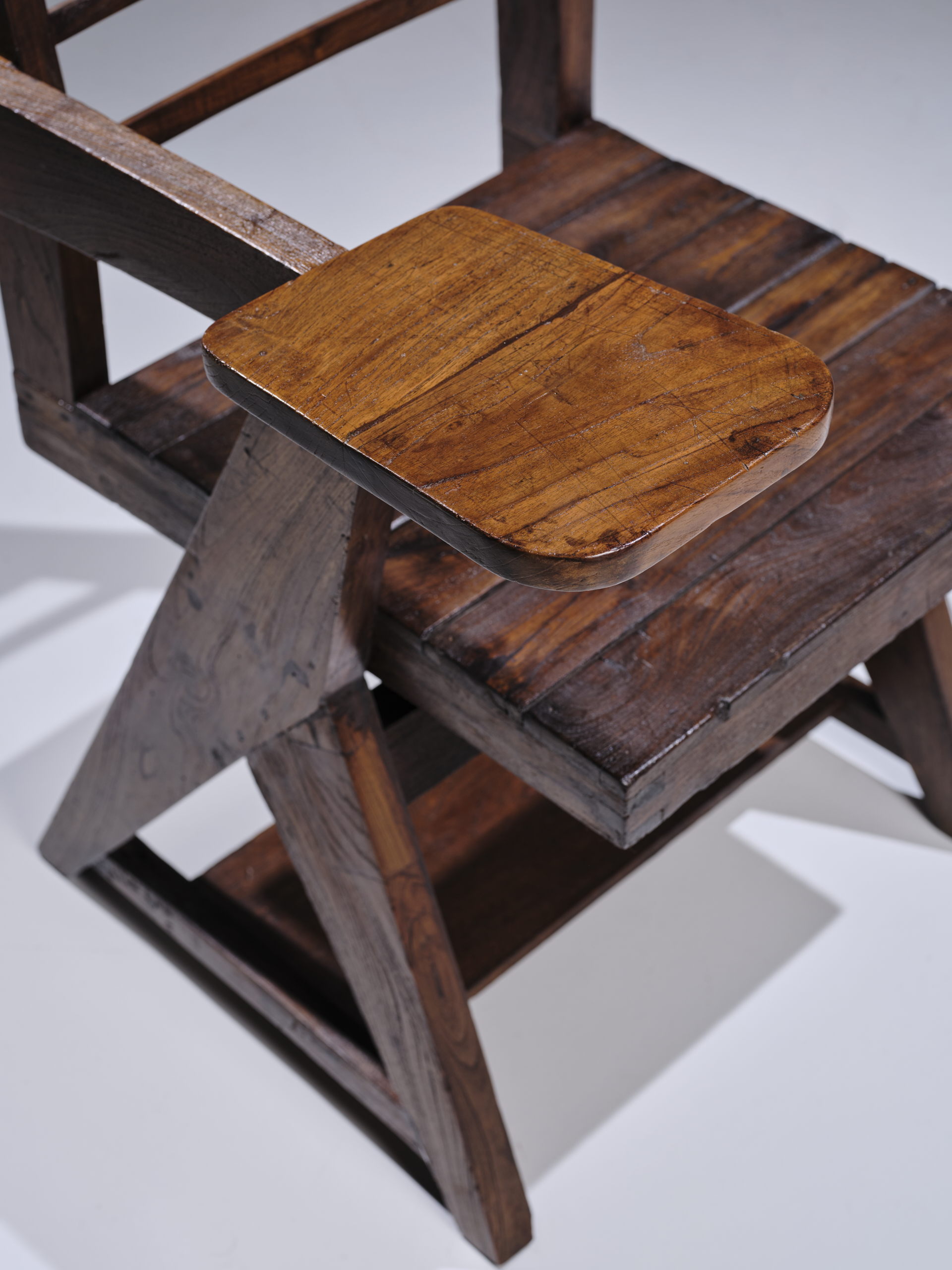
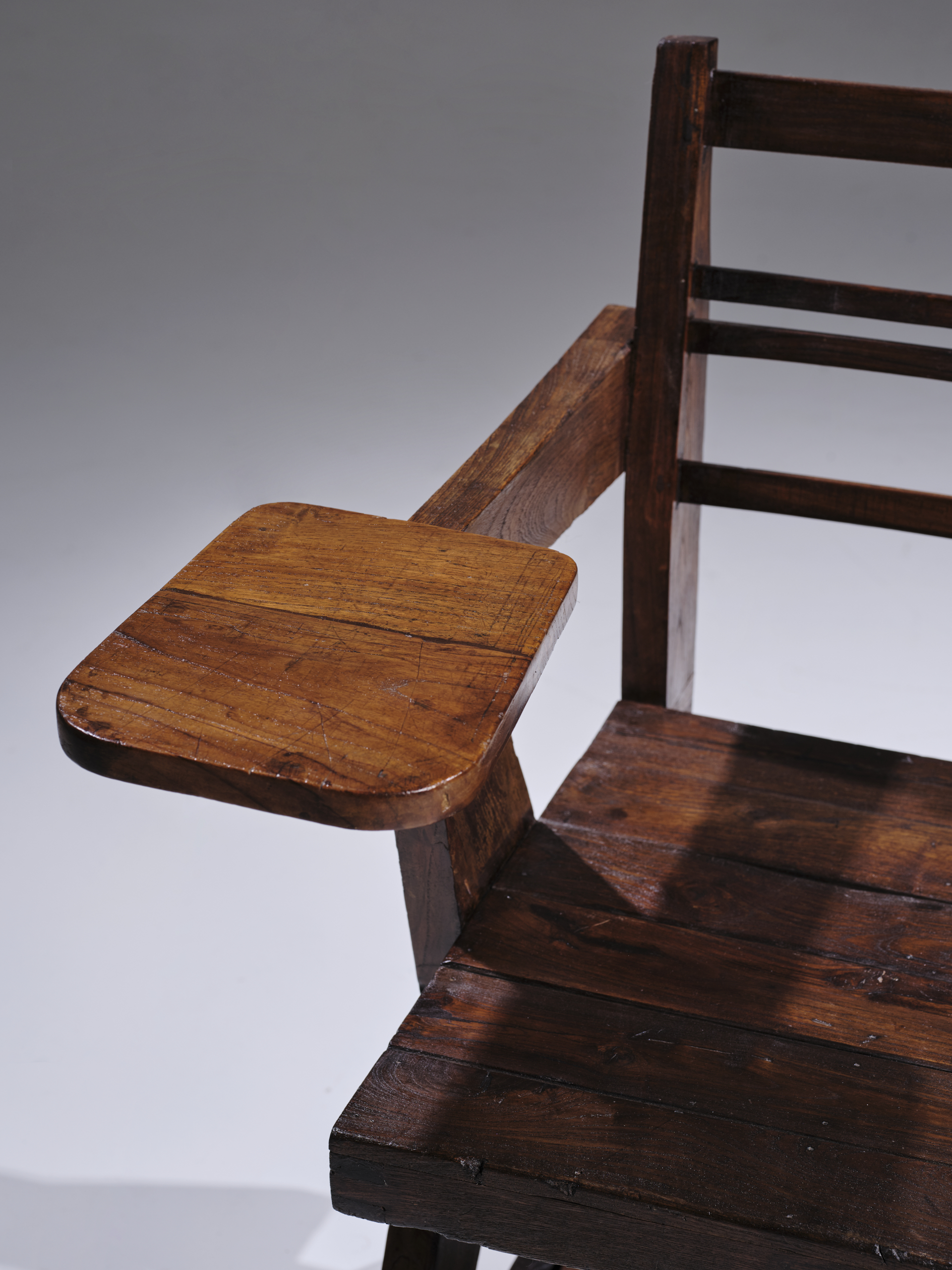
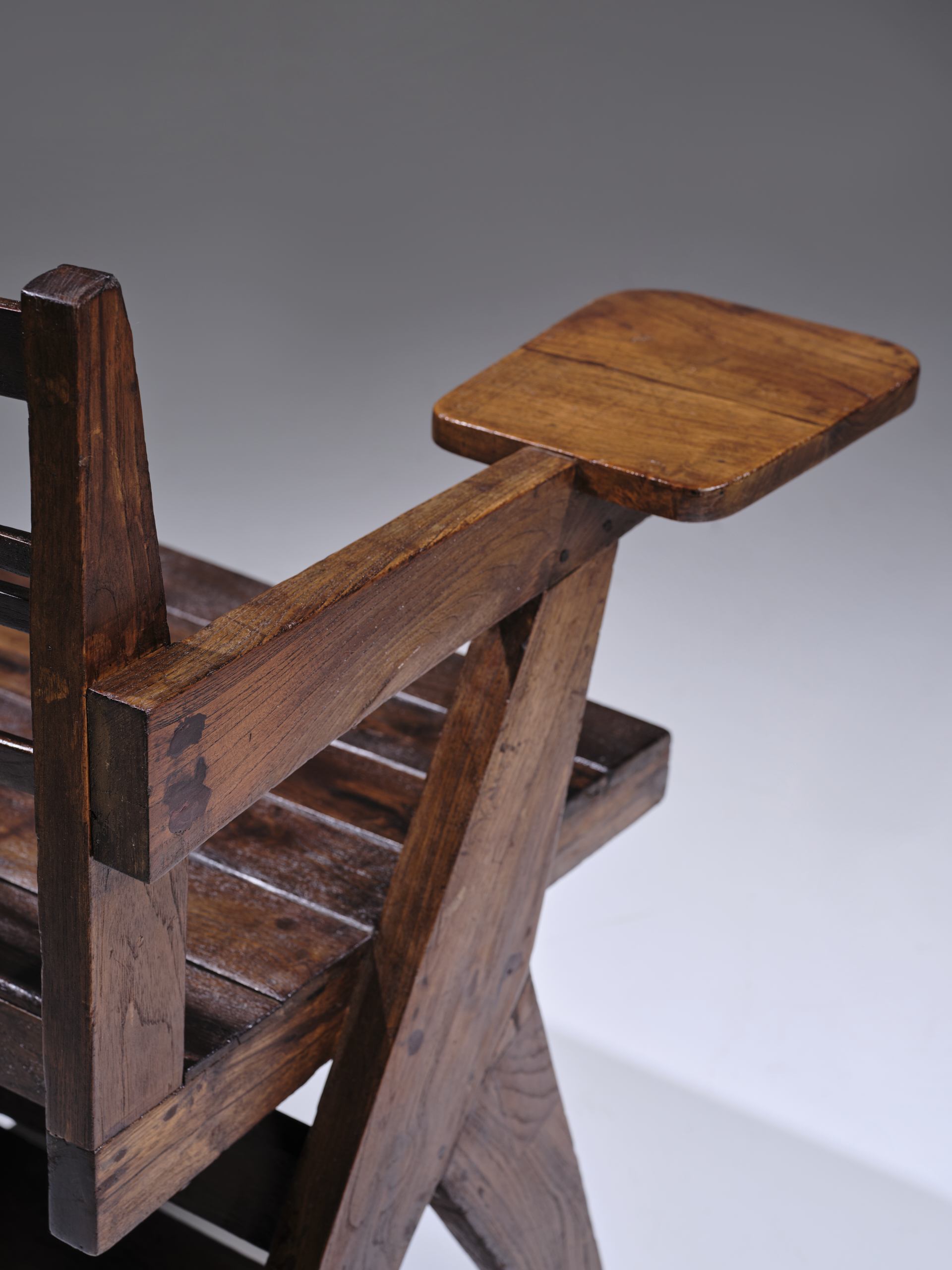
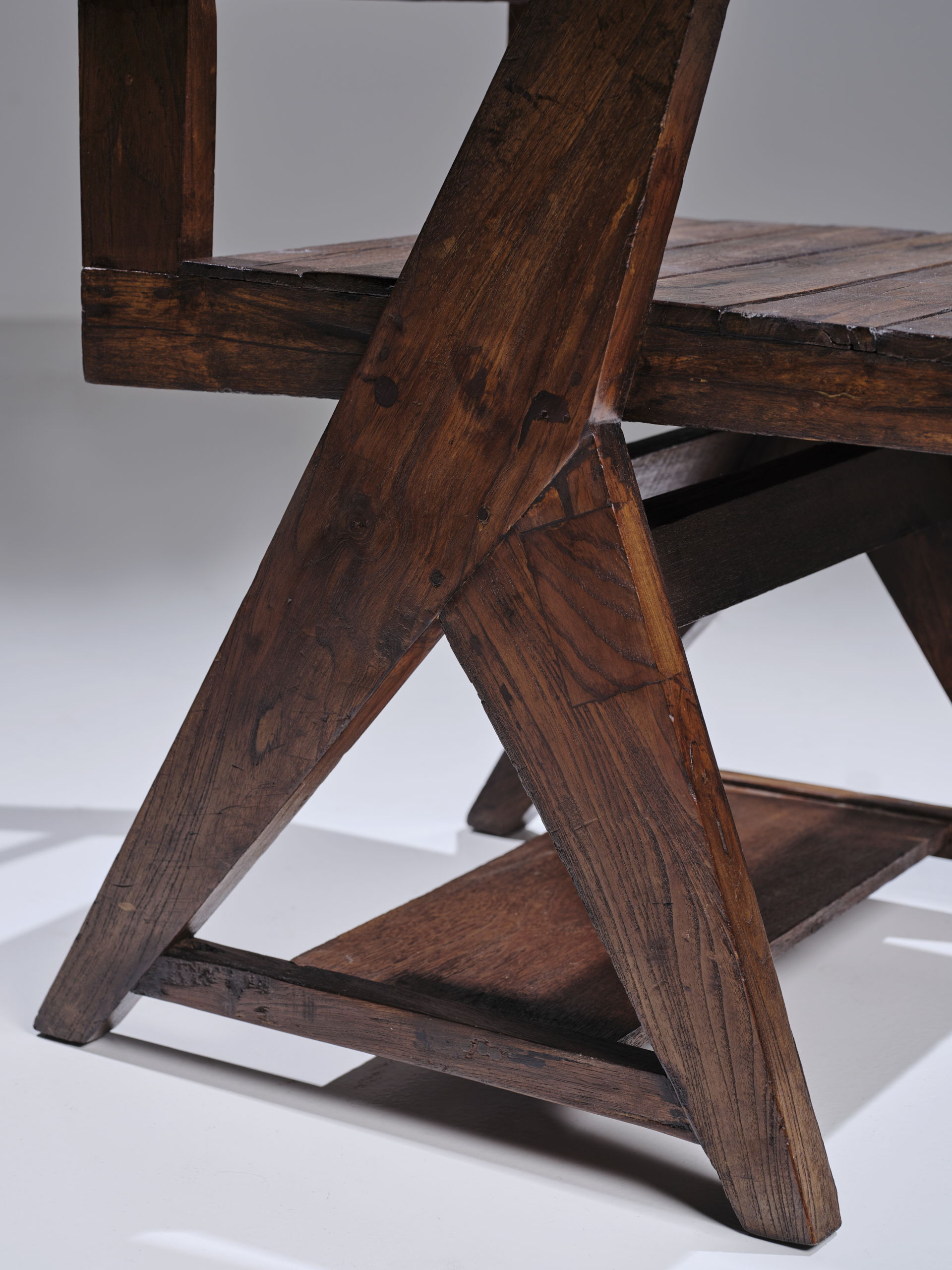
Pierre Jeanneret (1896-1967)
Writting chair
Ca. 1960
Solid teak. Version with seat and back with slats.
H. 81 x L. 56 x D. 63 cm | H. 31.9 x L. 22 x D. 24.8 in
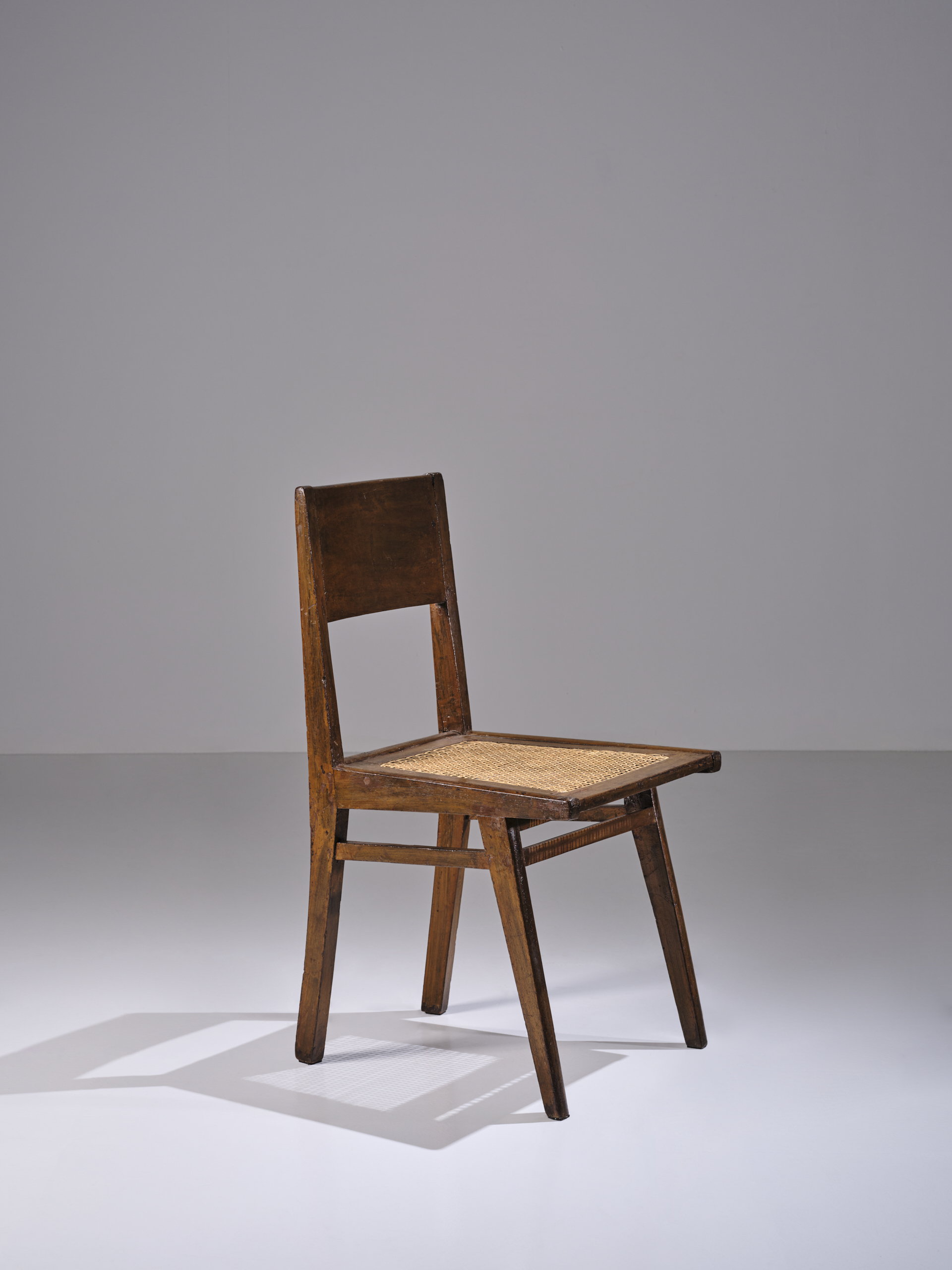

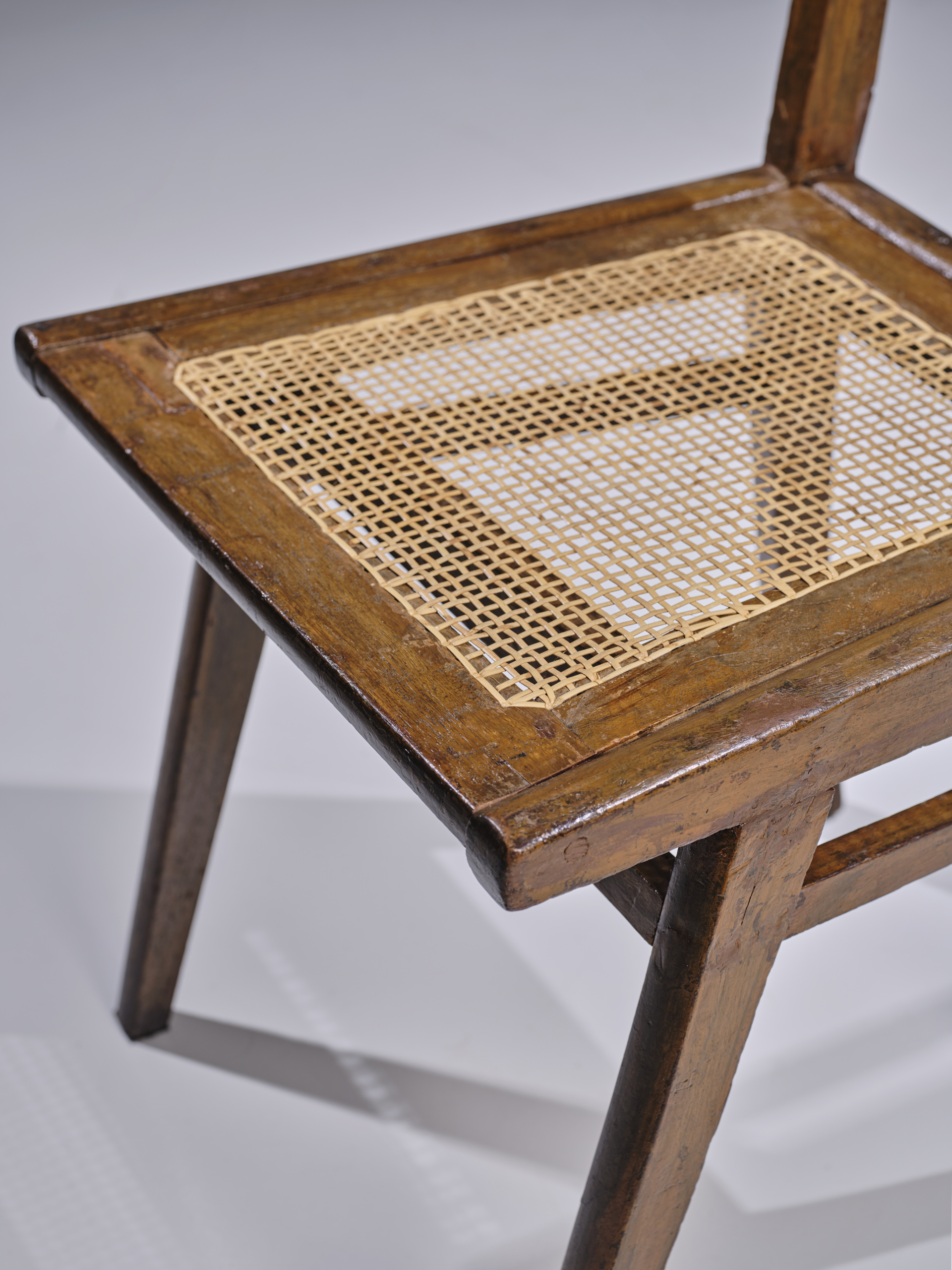
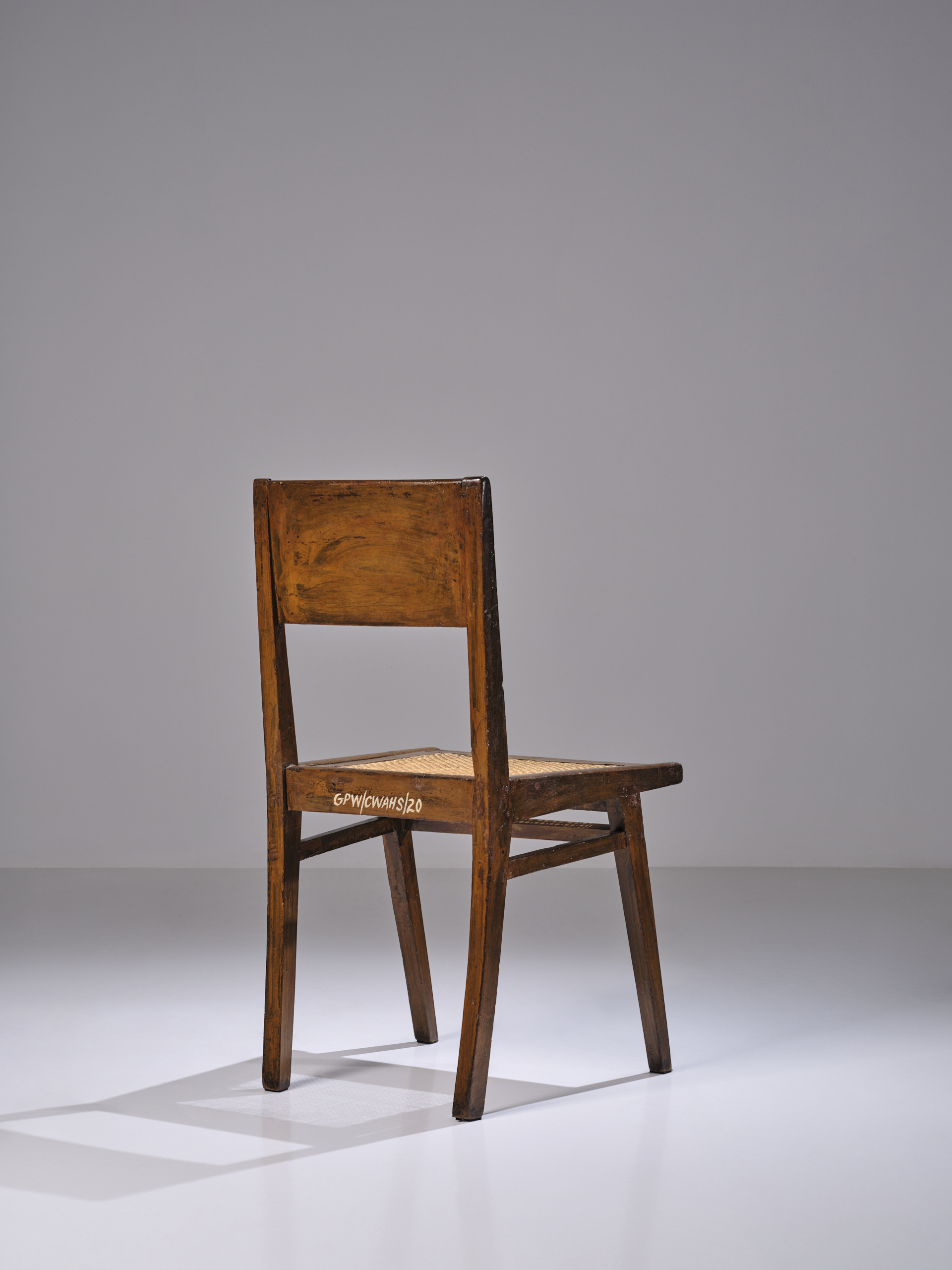
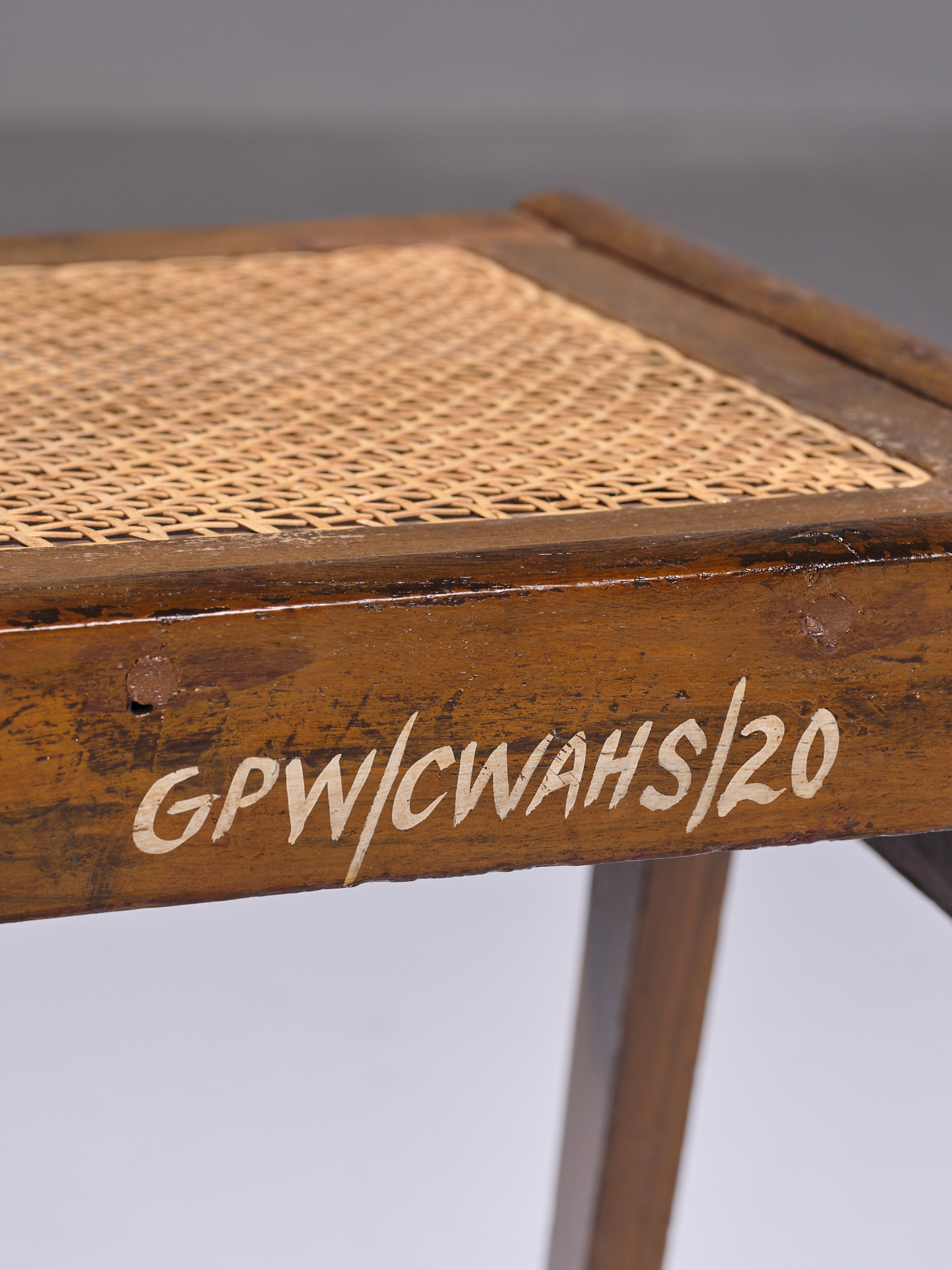
Pierre Jeanneret (1896-1967)
Chair
Ca. 1955-60
Solid teak, cane. Version with side supports.
Provenance: “Himalayan Hostel” student residence cafeteria
H. 85 x L. 45,5 x D. 51 cm | H. 33.5 x L. 17.9 x D. 20.1 in
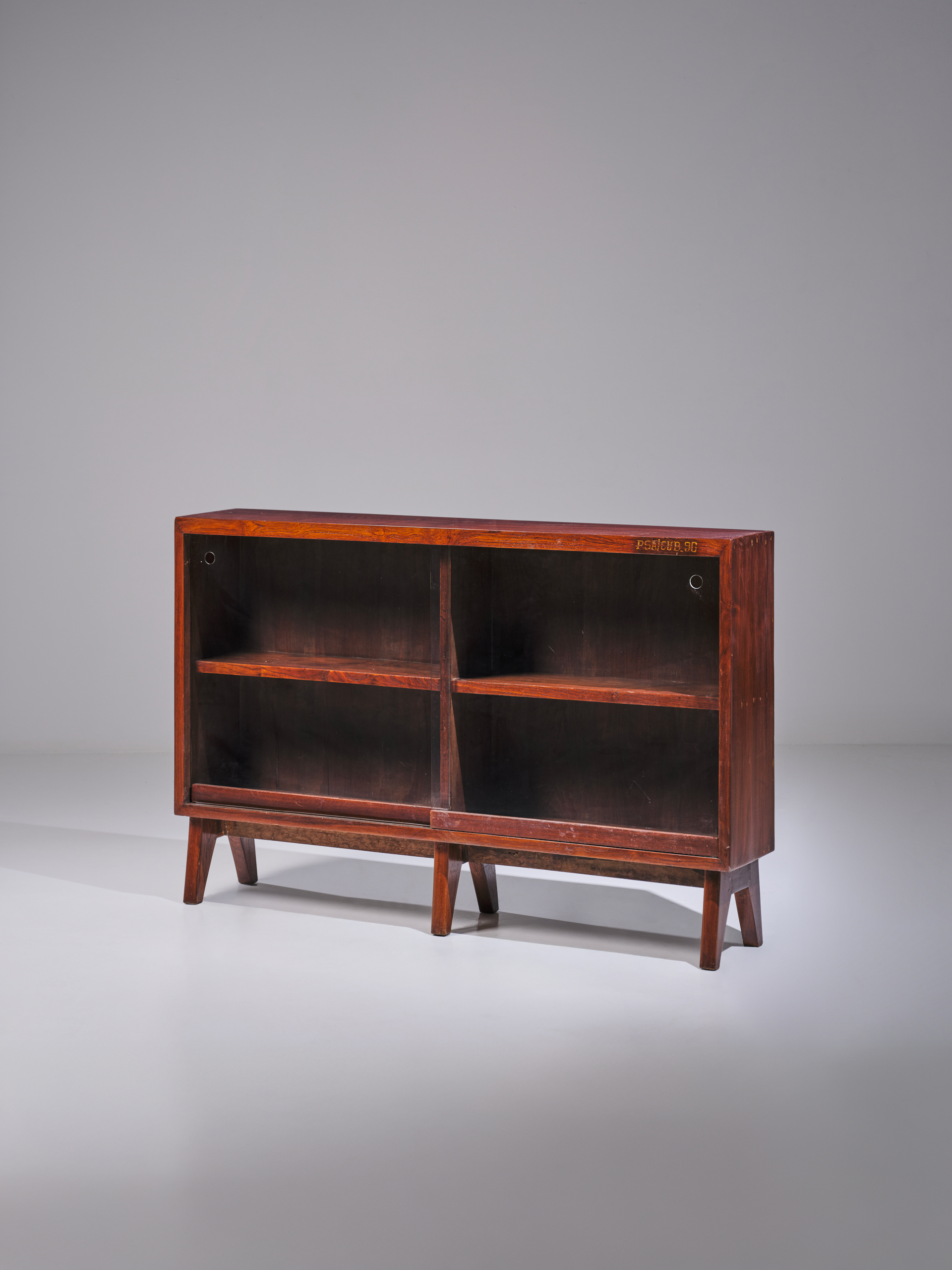
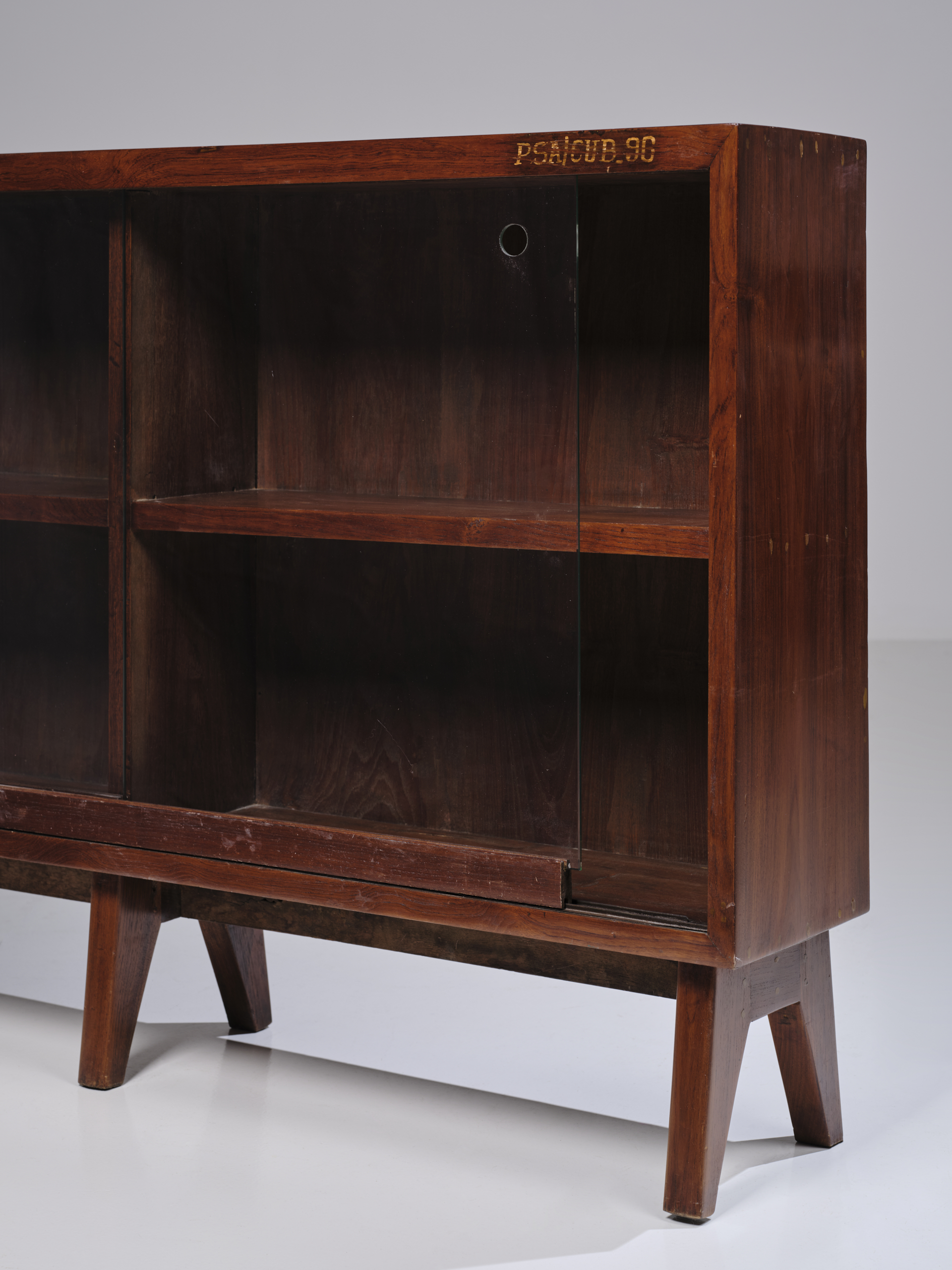
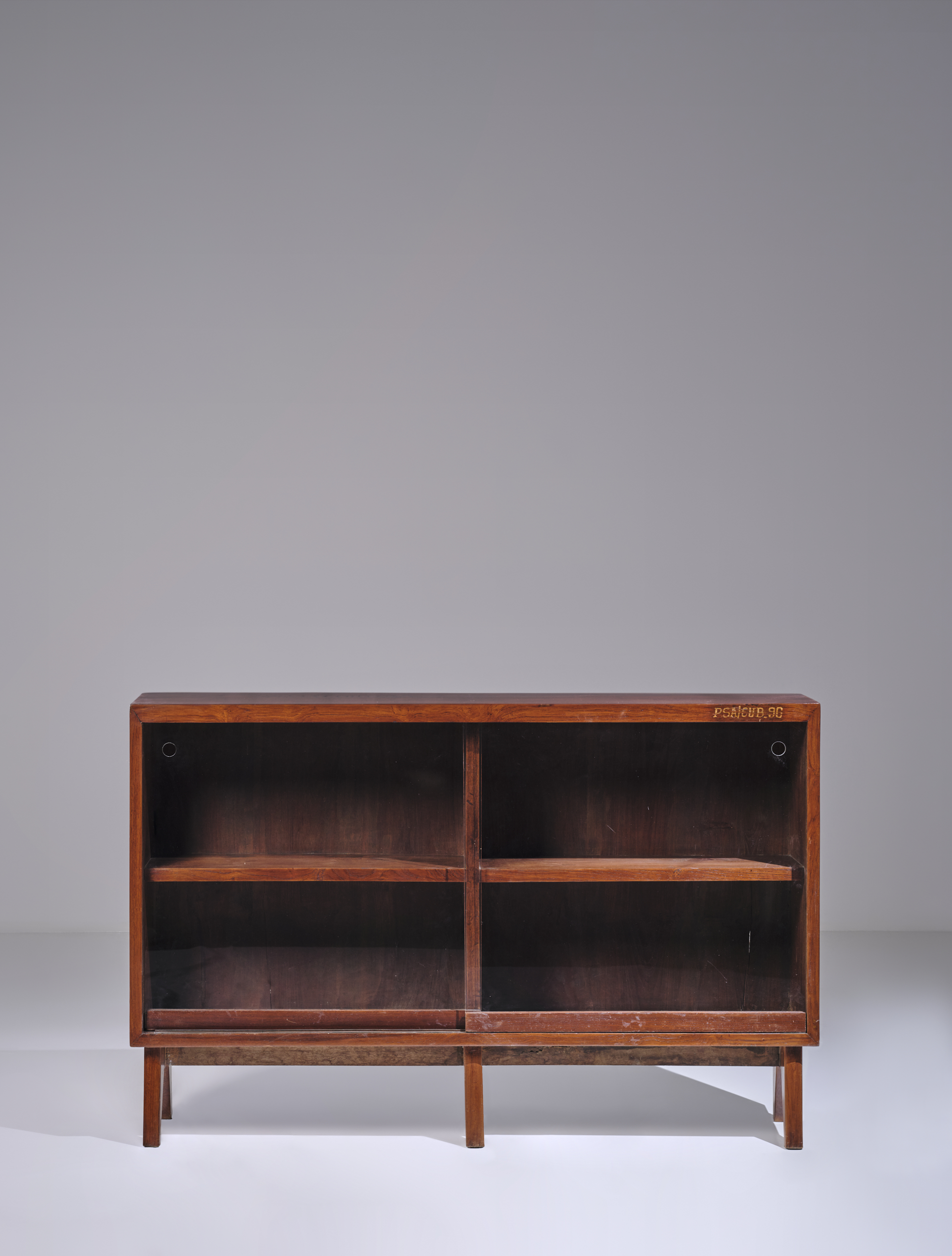
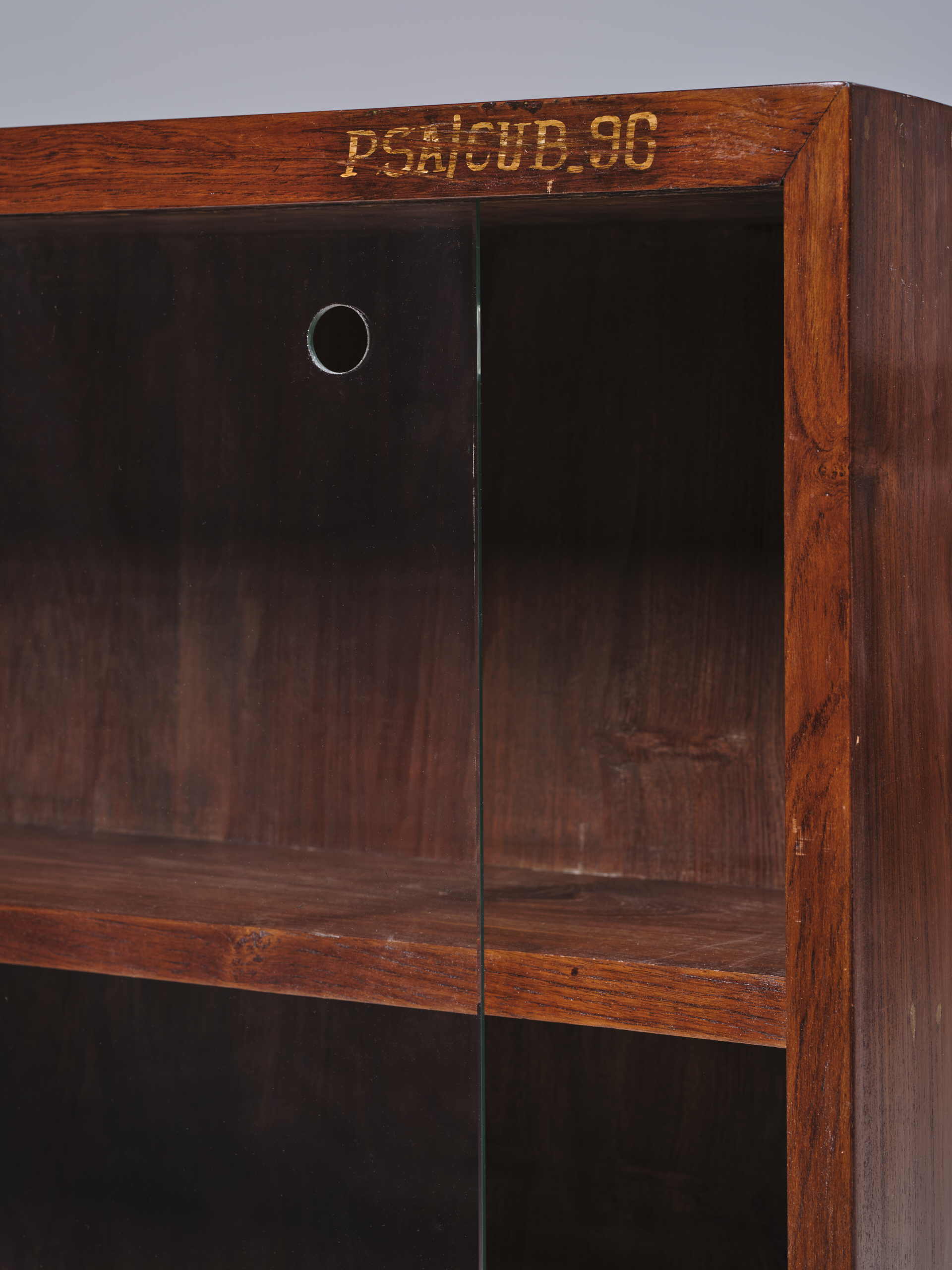
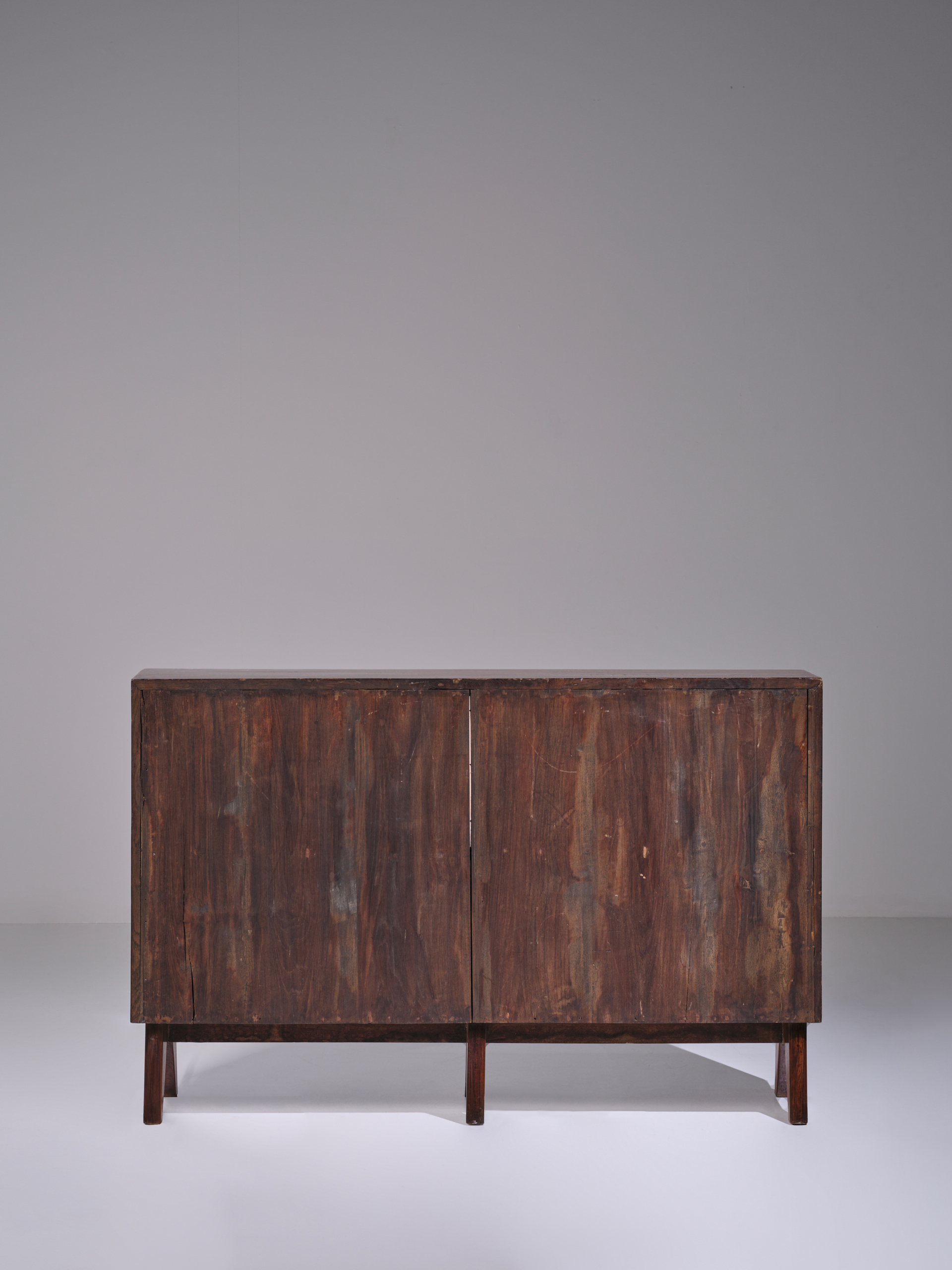
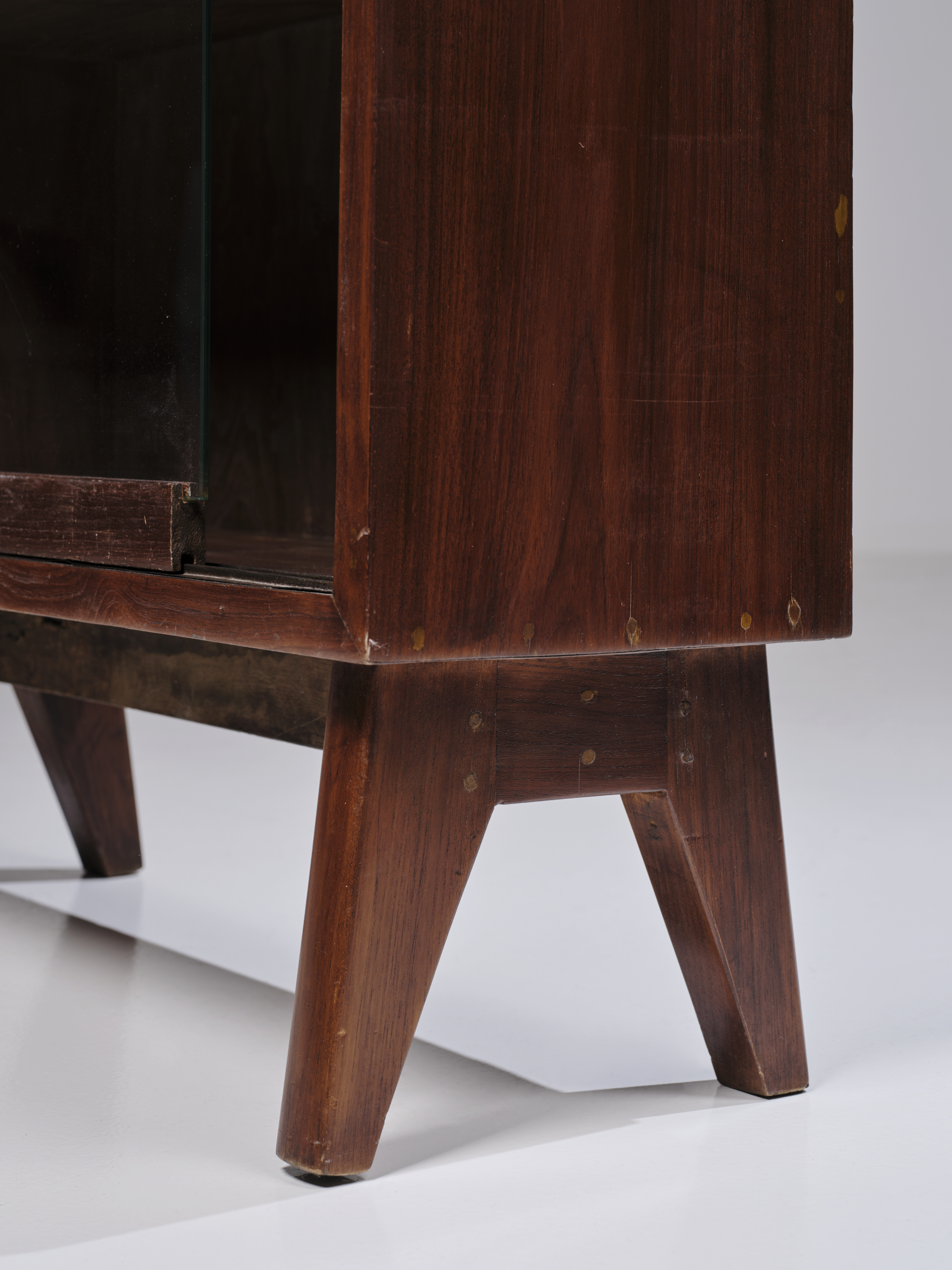
Pierre Jeanneret (1896-1967)
Glass bookcase
Ca. 1960
Solid teak. Three short V-shaped legs under a frame with two sliding glass doors. Double version.
Provenance: College of Art, dpt. Design and Handycraft (1959-65)
H. 90 x L. 138 x D. 26,5 cm | H. 35.4 x L. 54.3 x D. 10.4 in
About Pierre Jeanneret
Pierre Jeanneret (1896–1967), a graduate of the École des Beaux-Arts in Geneva, arrived in Paris in 1921 and soon became the closest collaborator of his cousin Le Corbusier.
Together they pioneered a radical modernist architecture, breaking with tradition through projects such as the Villa Roche (1923), Villa Savoye (1929), the Swiss Pavilion at the Cité Universitaire (1931), and the visionary Plan Voisin for Paris (1925). A member of the Union des Artistes Modernes (UAM) from 1930, Jeanneret upheld modernist ideals throughout his career — from prefabricated pavilions with Charlotte Perriand and Jean Prouvé in the 1930s.
From 1951 to 1967 in Chandigarh, India, Pierre Jeanneret worked alongside Le Corbusier to shape the new capital through hundreds of public buildings and private houses, while also designing the functional yet poetic furniture that furnished them — creations that have since become enduring icons of modern design.
Equally influential in furniture, Jeanneret co-signed with Le Corbusier and Perriand the groundbreaking “l’équipement de l’habitation” collection presented at the 1929 Salon d’Automne — icons such as the Basculant chair No. 301, chaise longue B306, and the Grand Confort LC2 armchair.
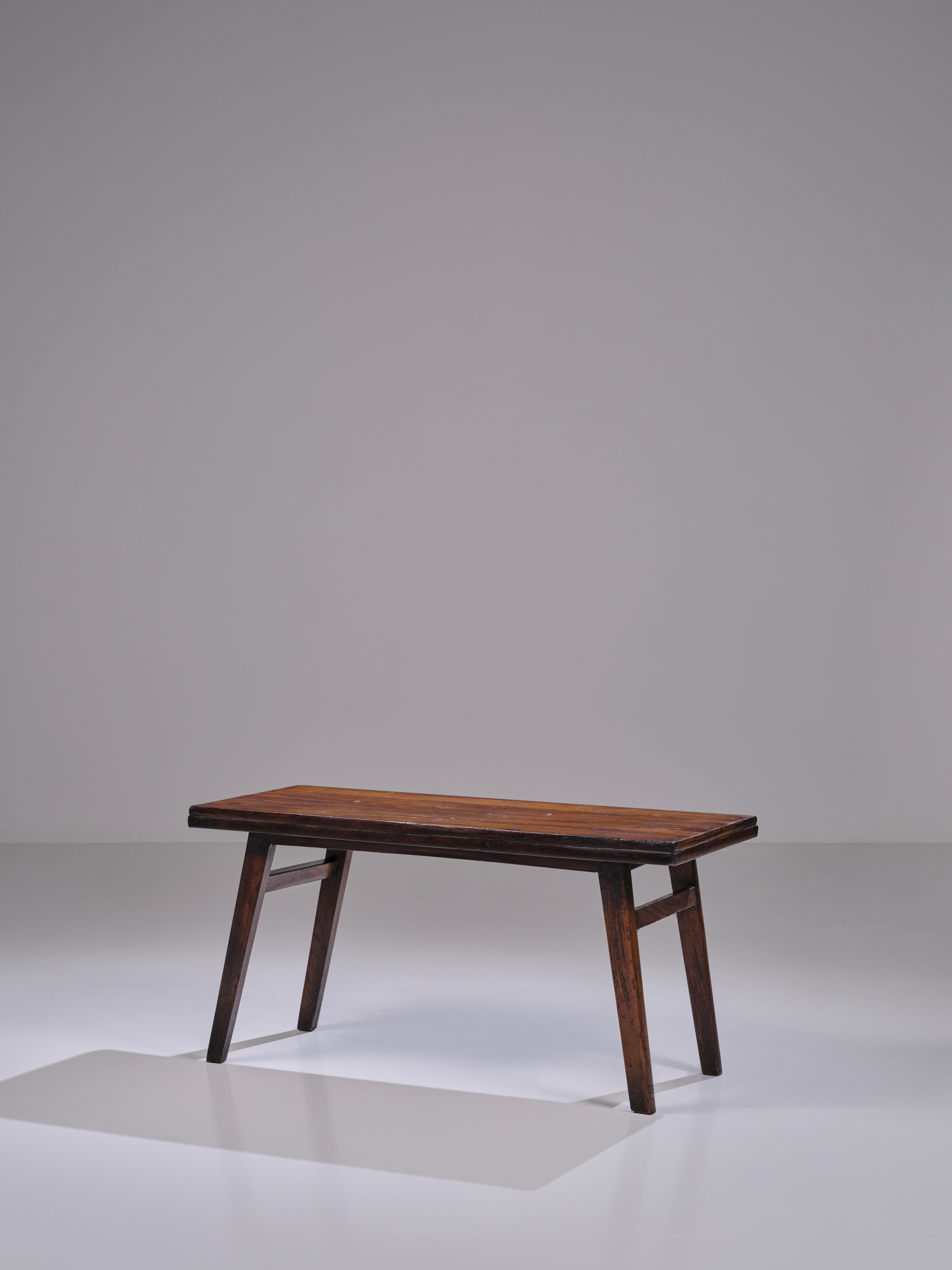
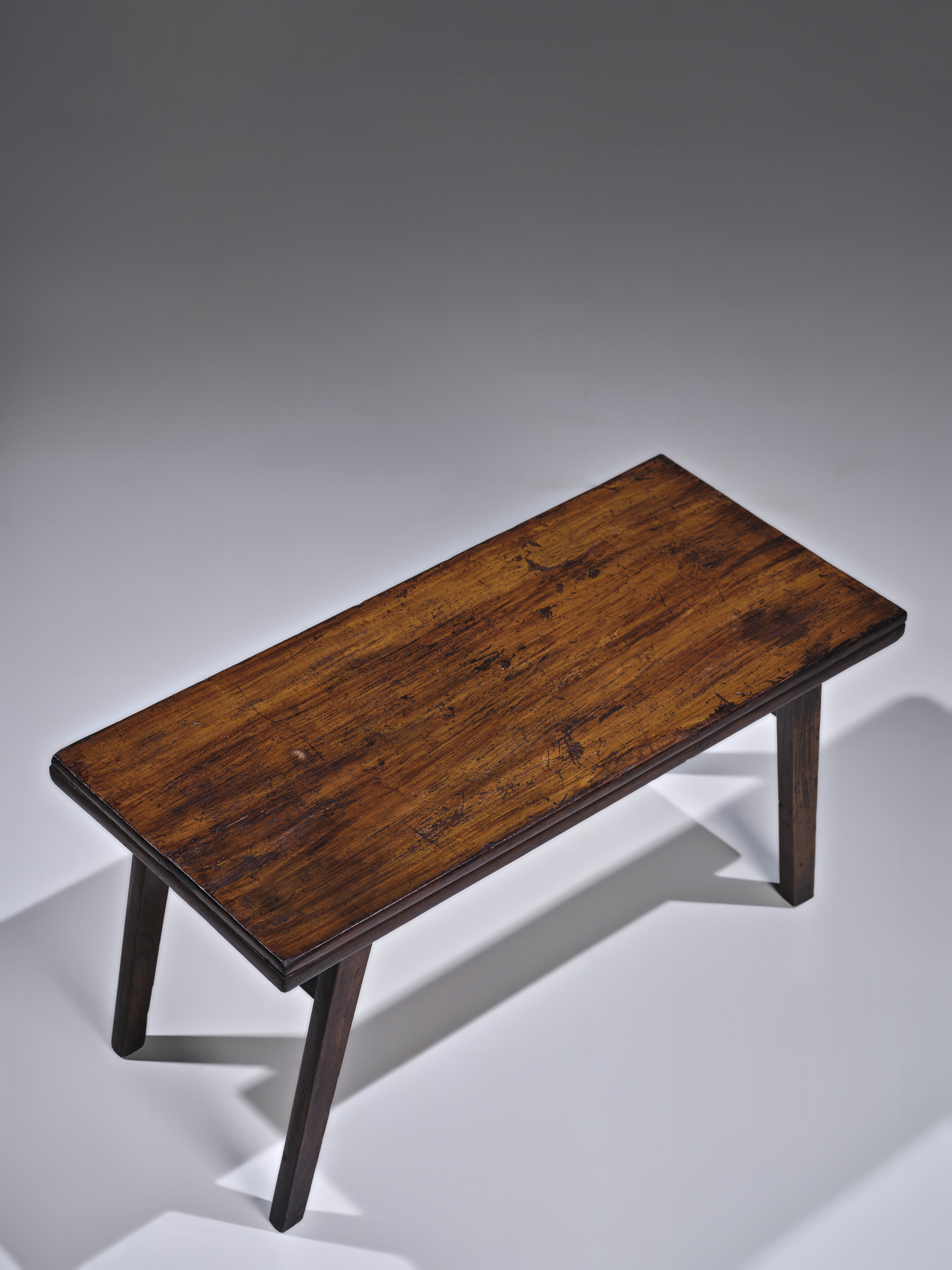

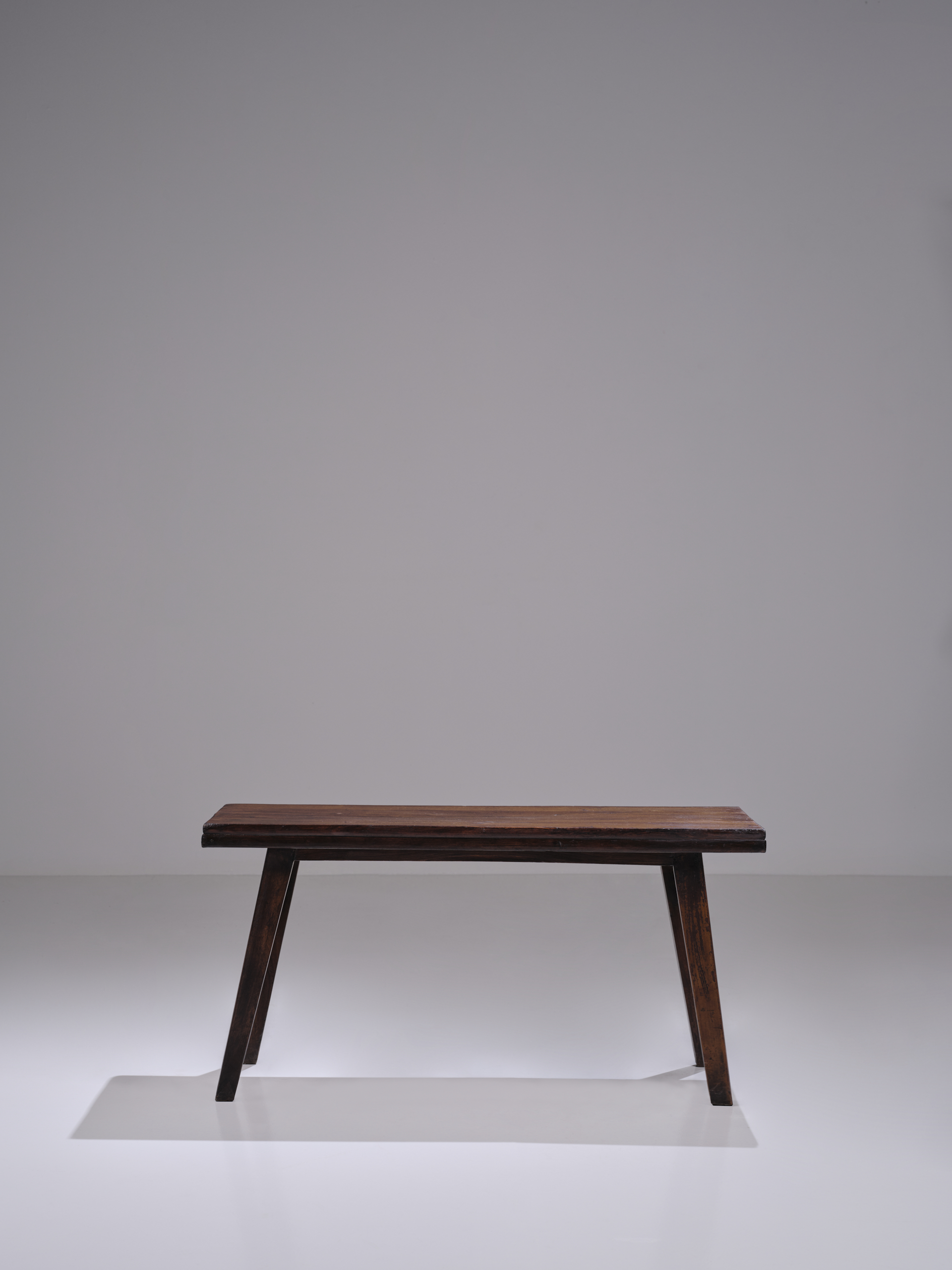

Pierre Jeanneret (1896-1967)
Coffee table
Ca. 1960
Solid teak. Version with spindle-type legs.
Provenance: “Himalayan Hostel” student residence cafeteria
H. 45 x L. 91 x D. 45 cm | H. 17.7 x L. 35.8 x D. 17.7 in
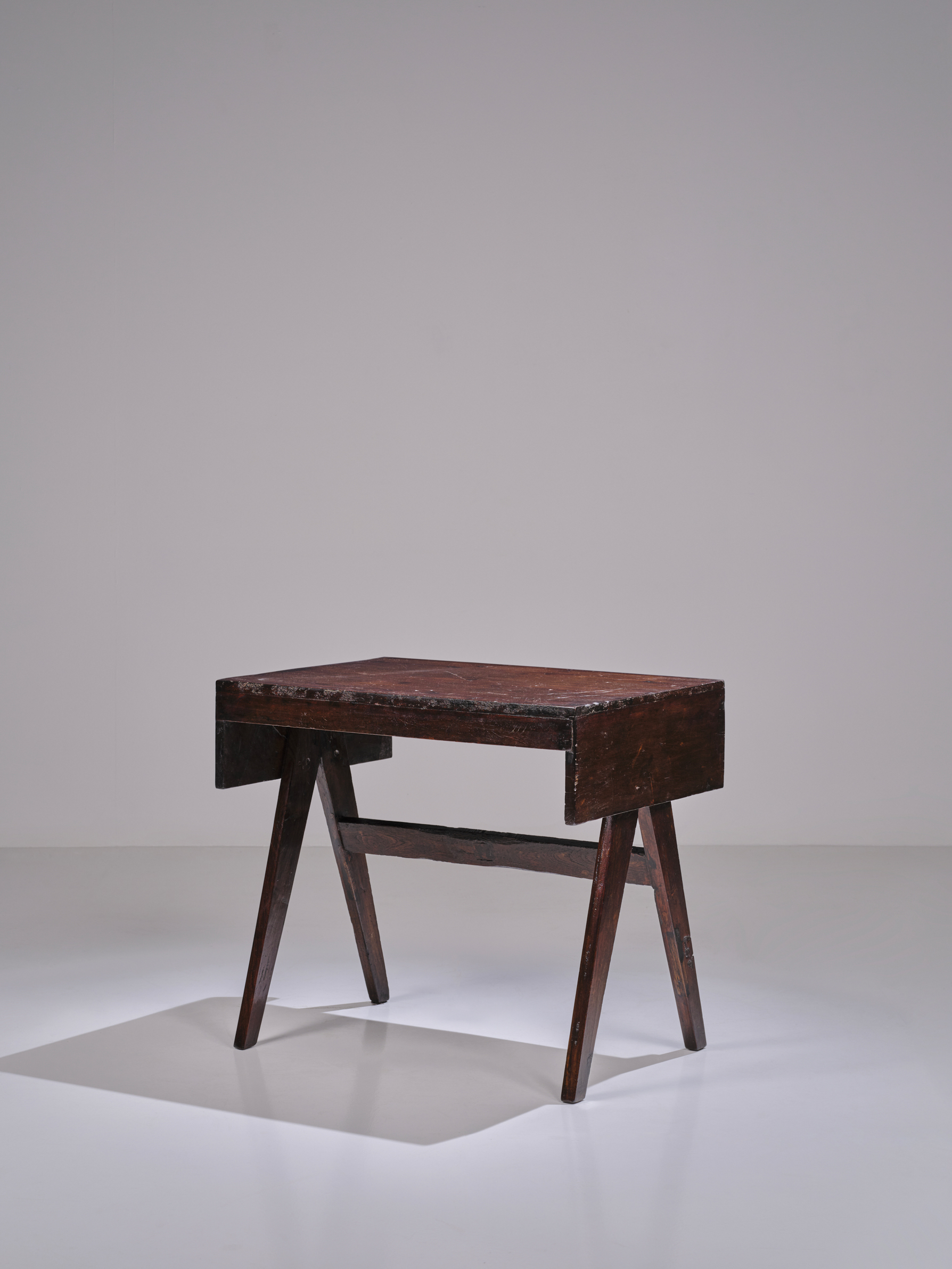
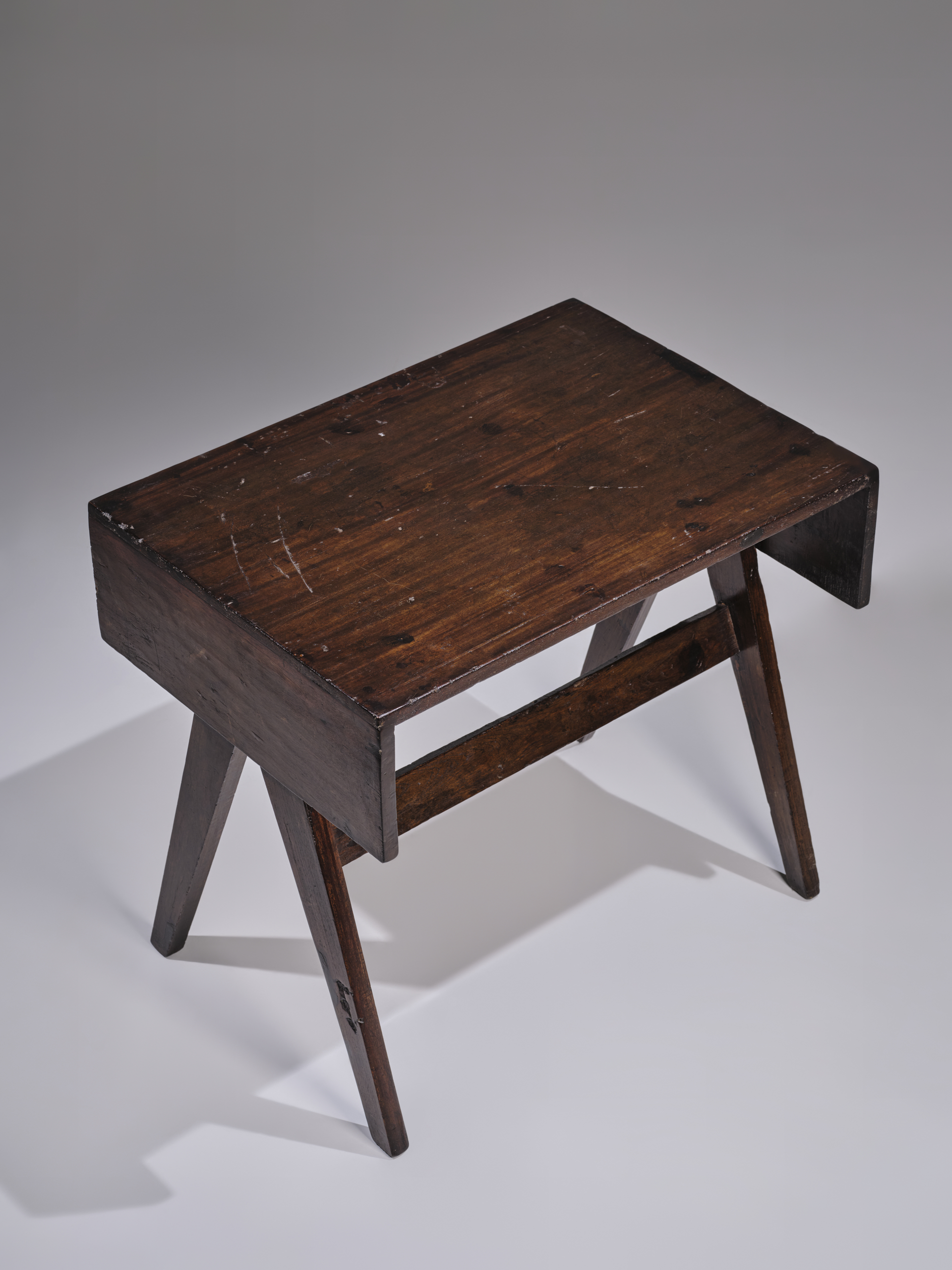
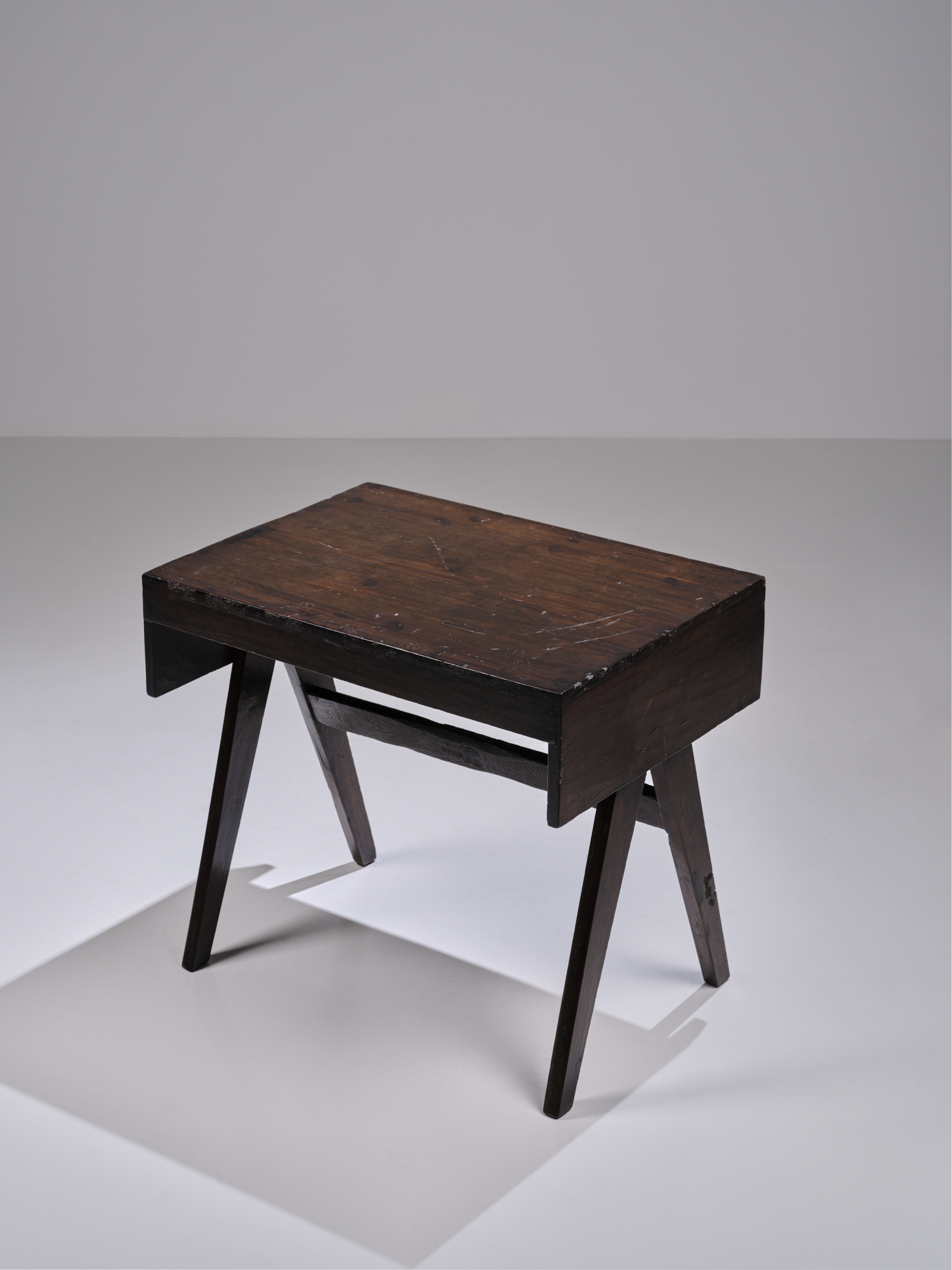
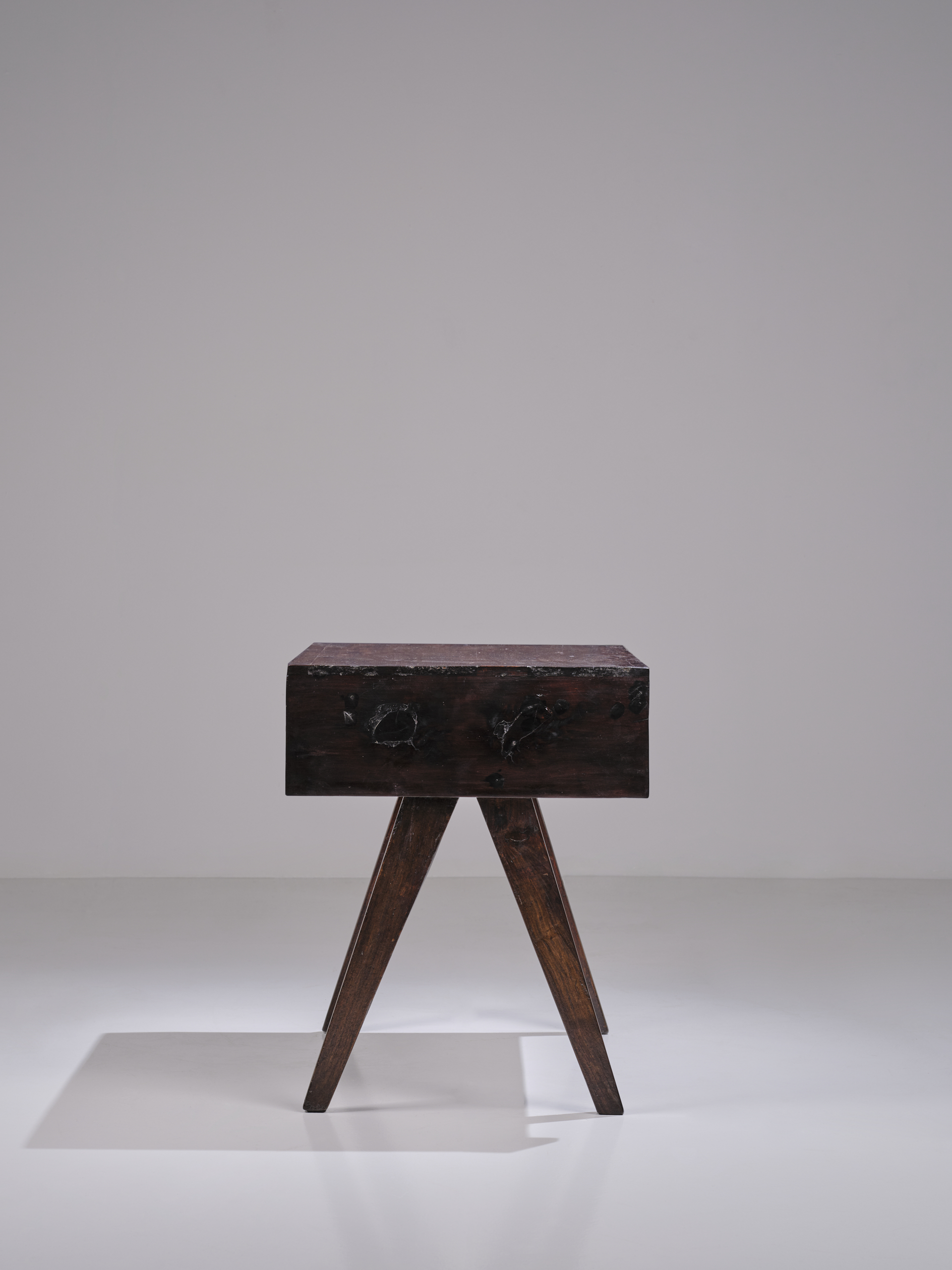
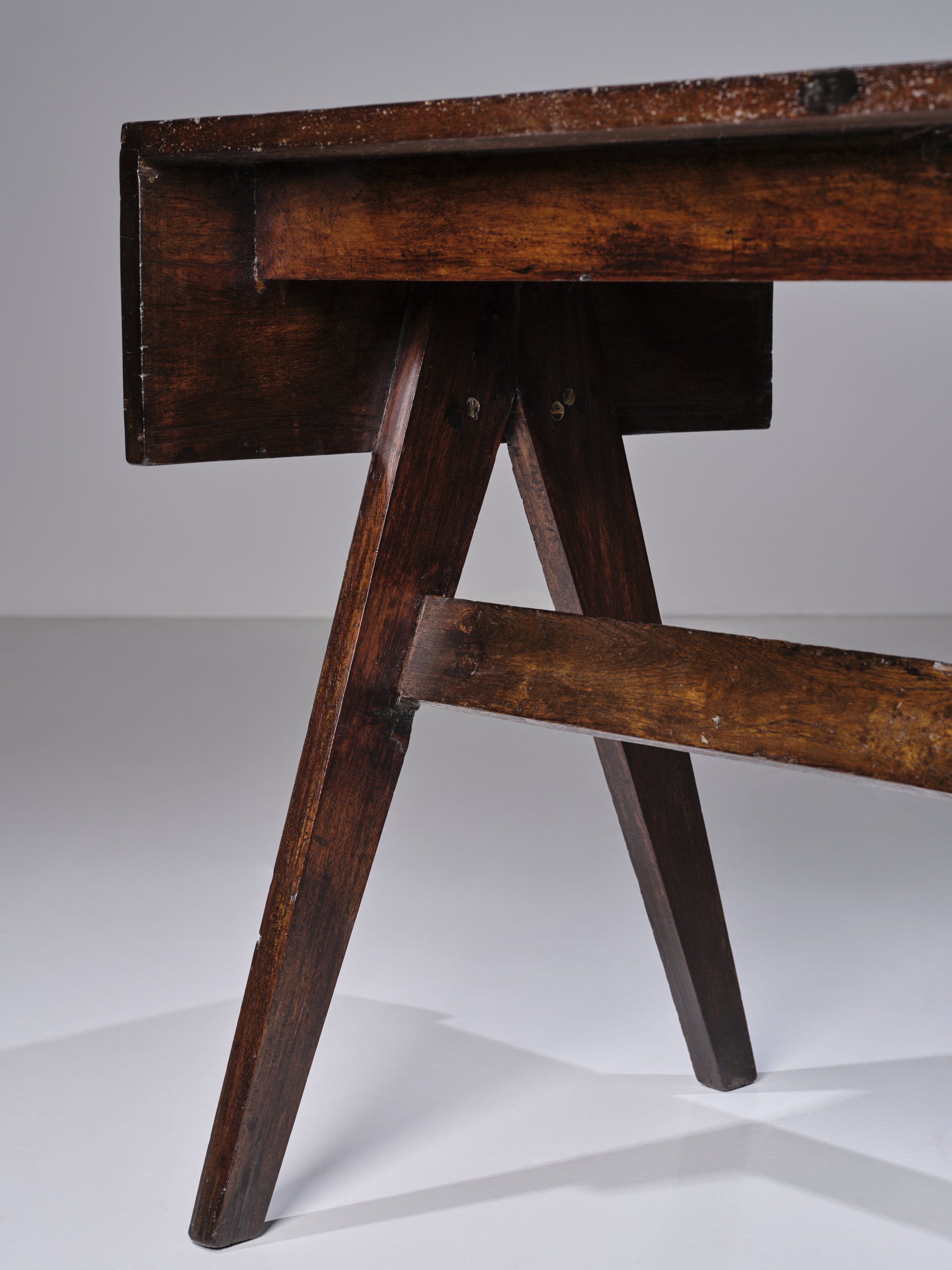
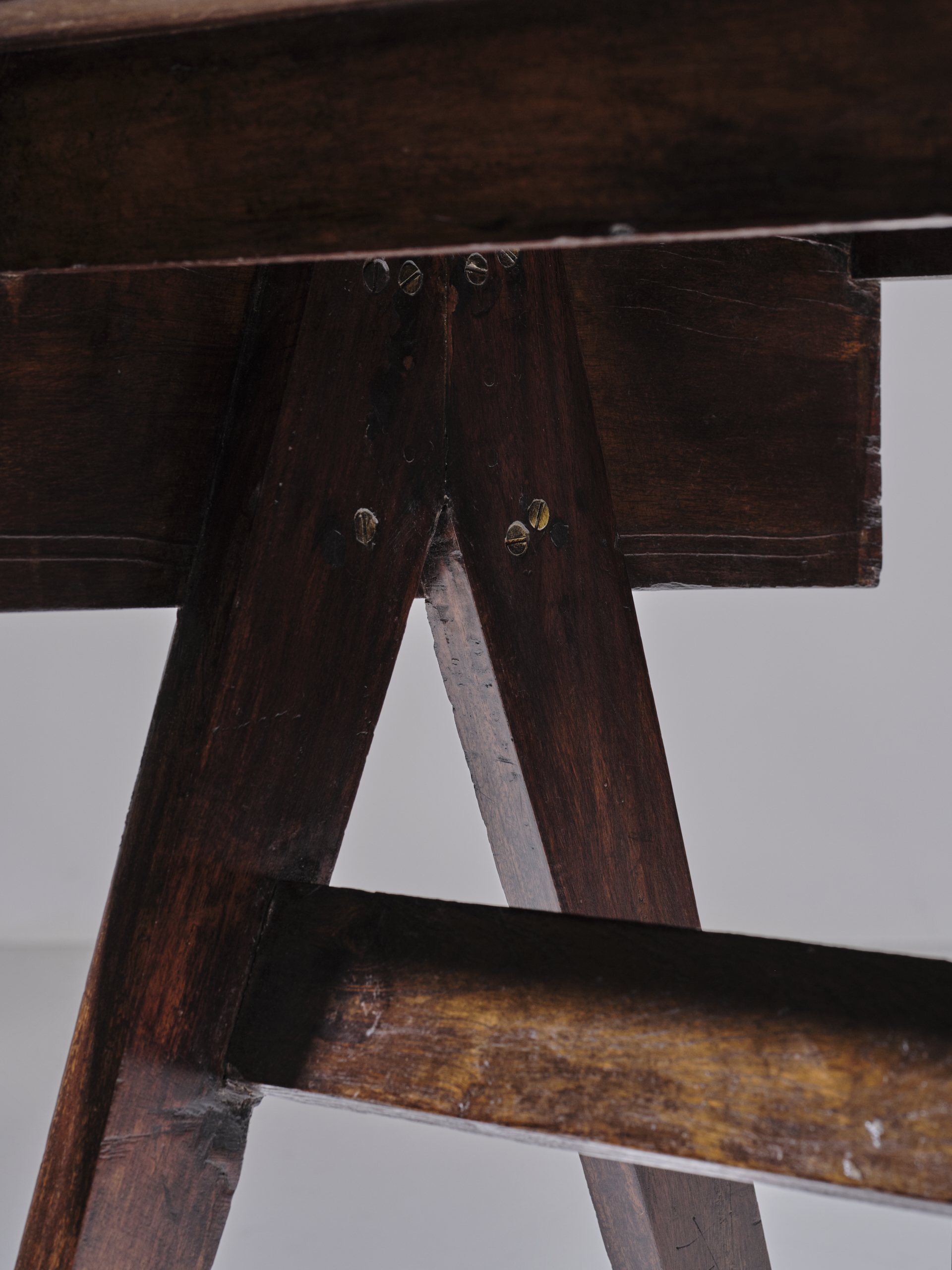
Pierre Jeanneret (1896-1967)
Student desk
Ca. 1960
Solid teak. Tabletop, V-shaped legs, small model without storage compartment.
Provenance: College of Architecture, P.U.
H. 72 x L. 81 x D. 58,5 cm | H. 28.3 x L. 31.9 x D. 23 in
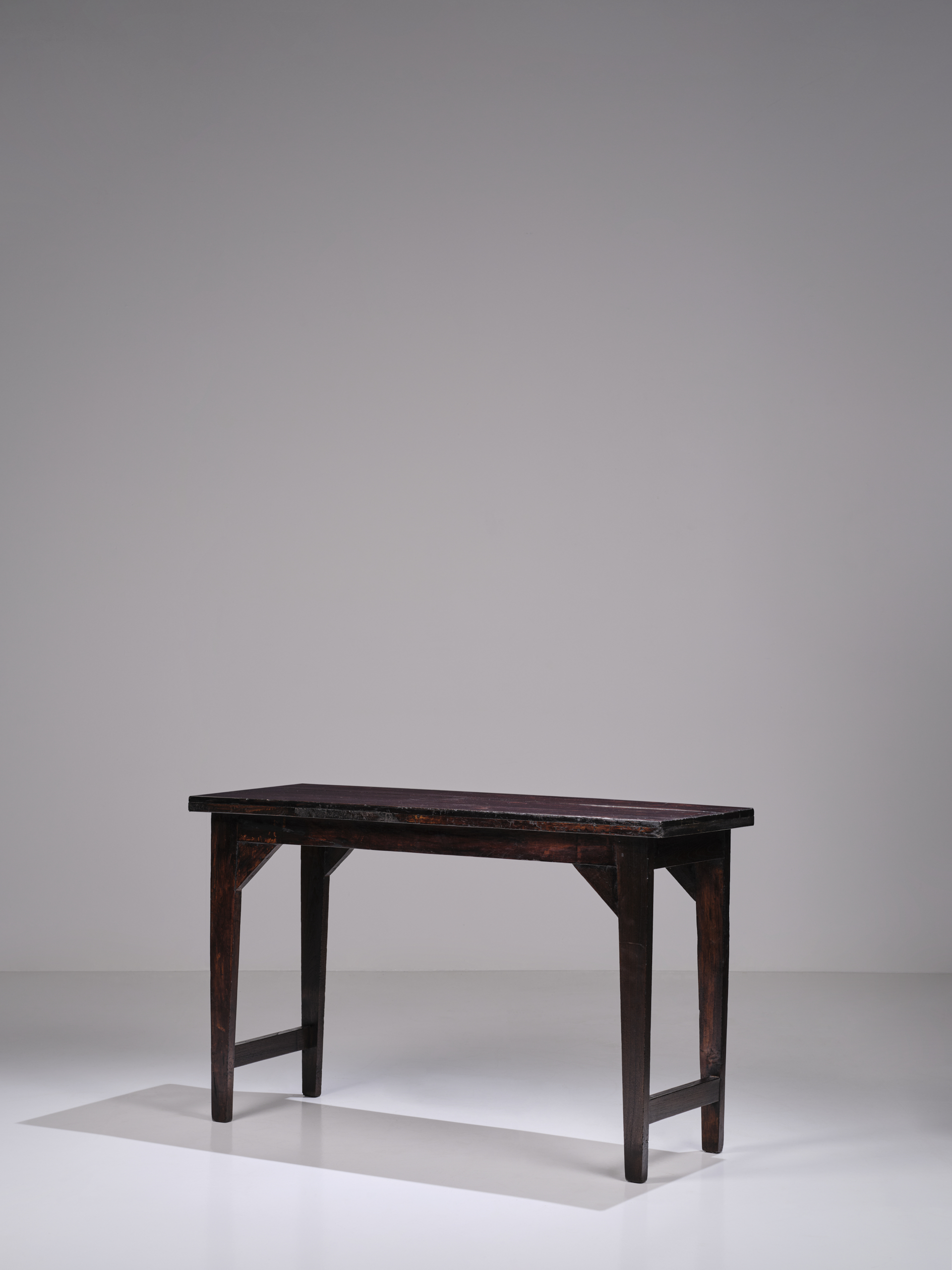
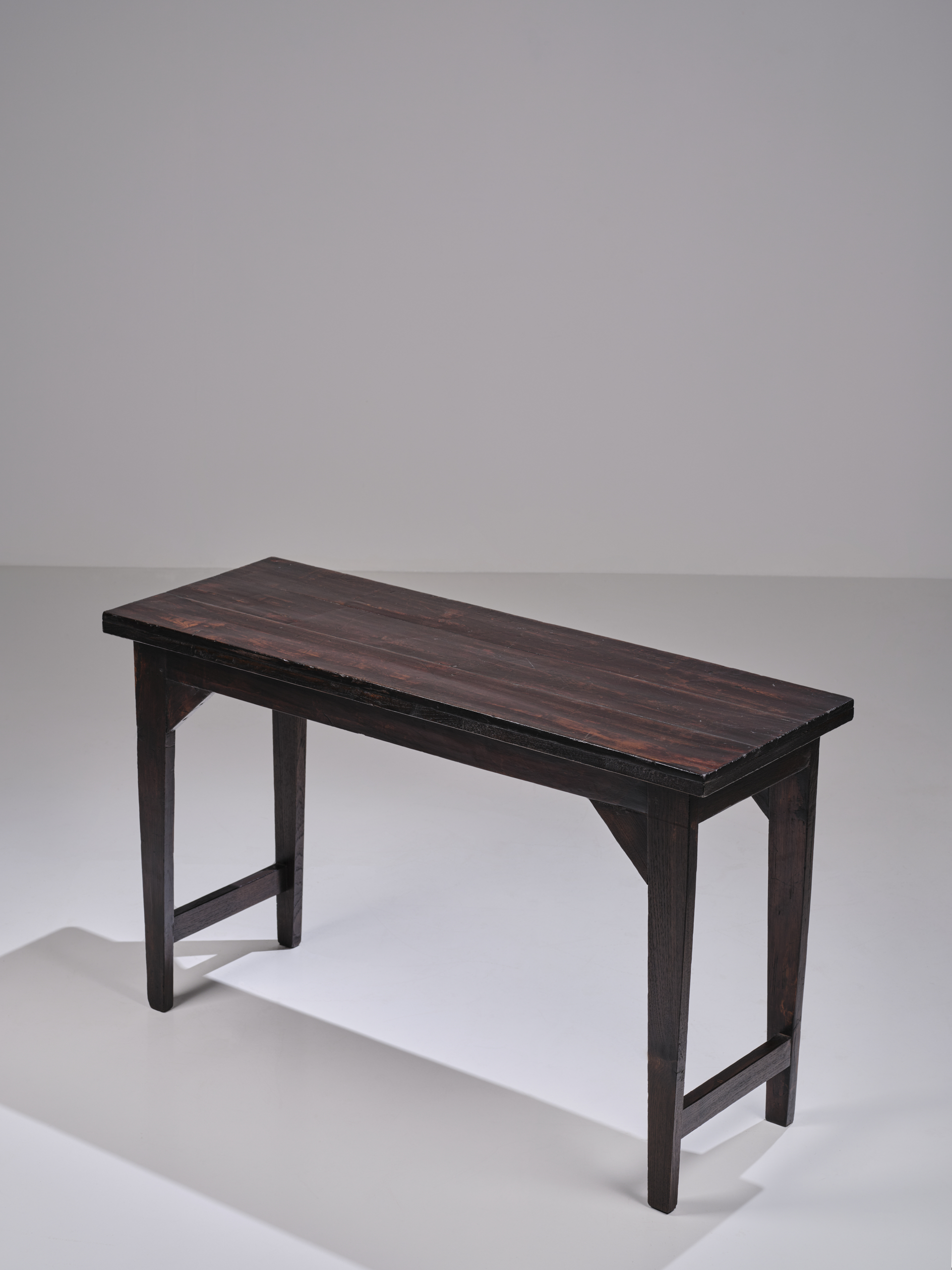
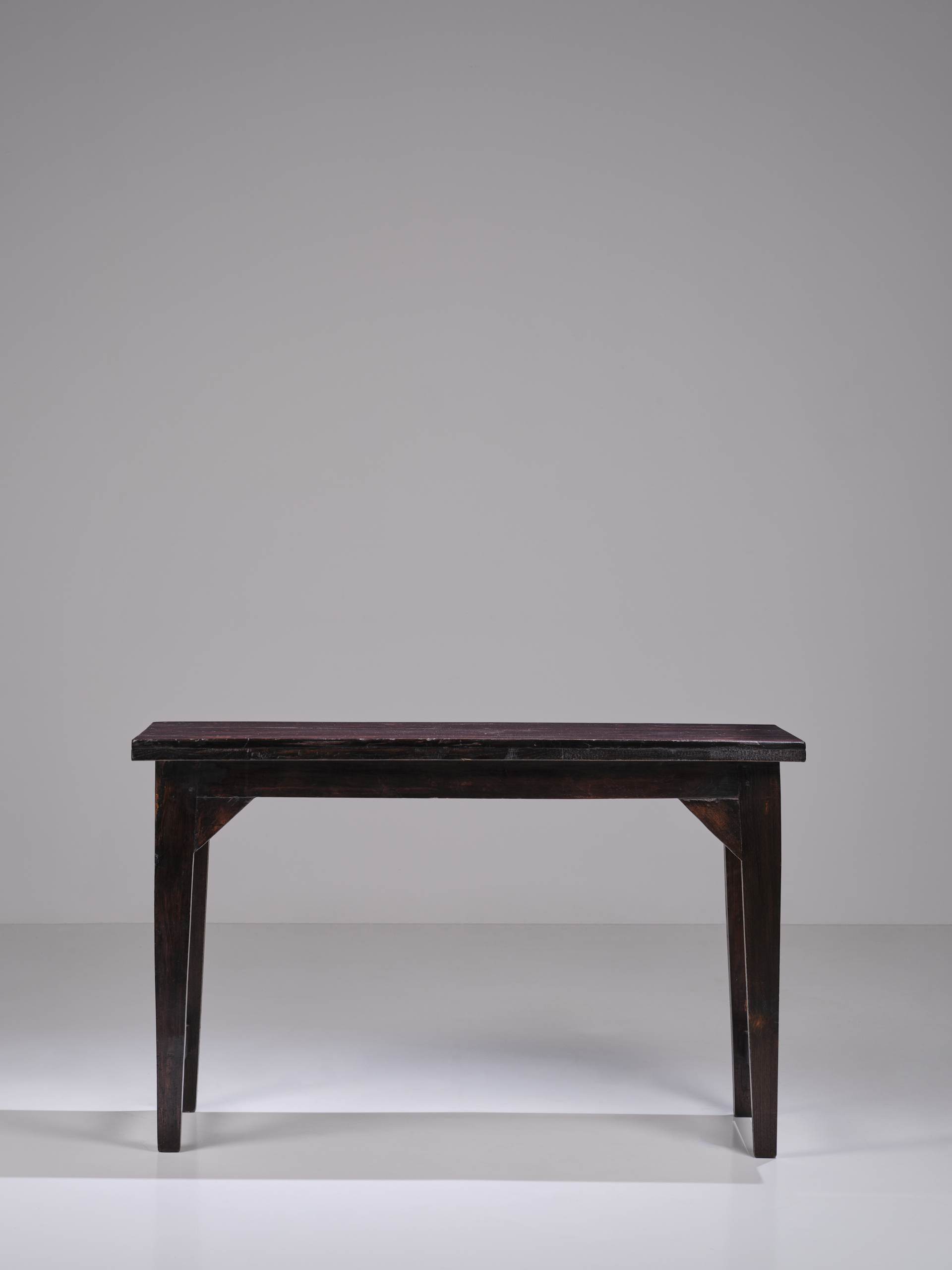
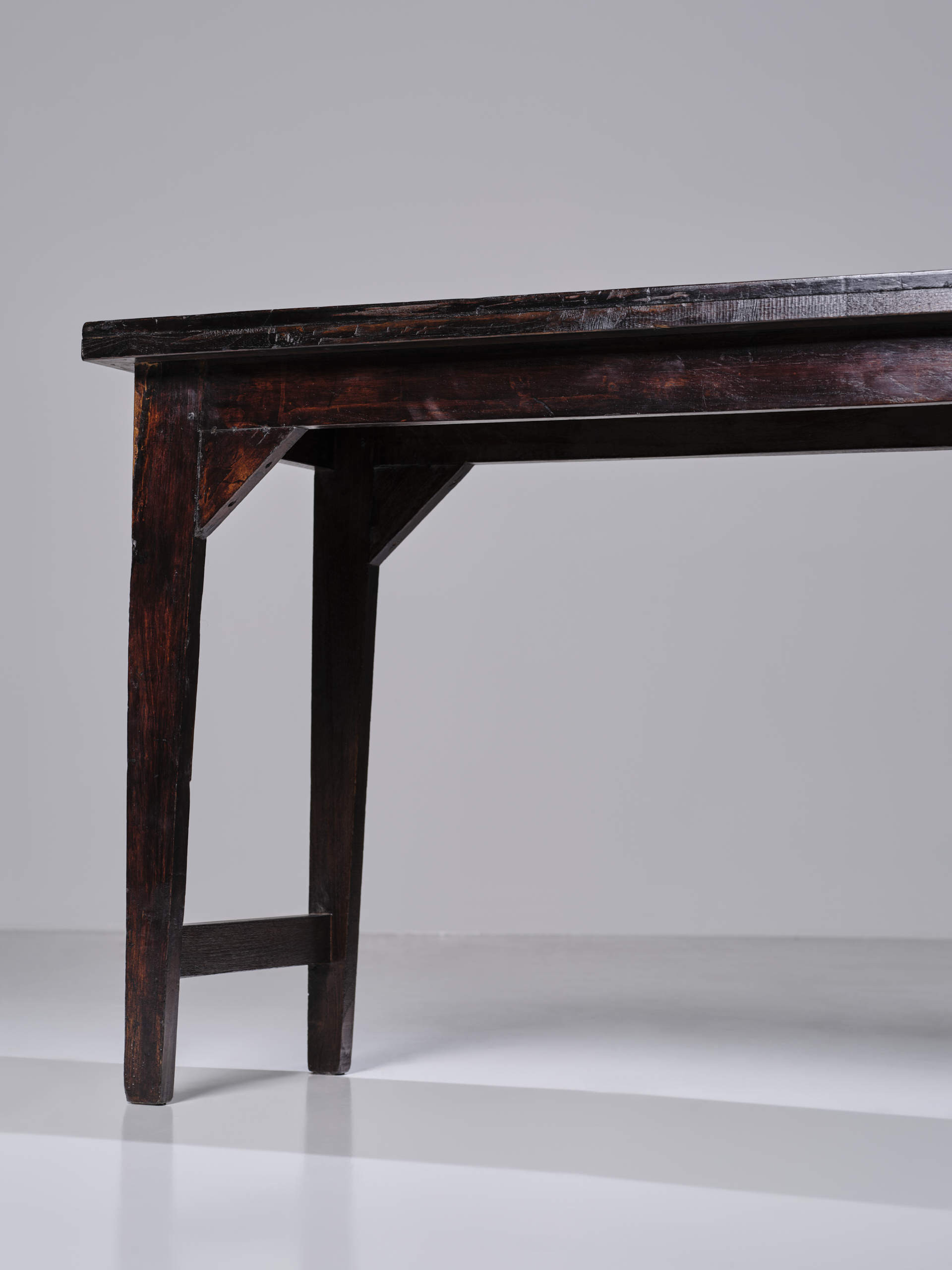
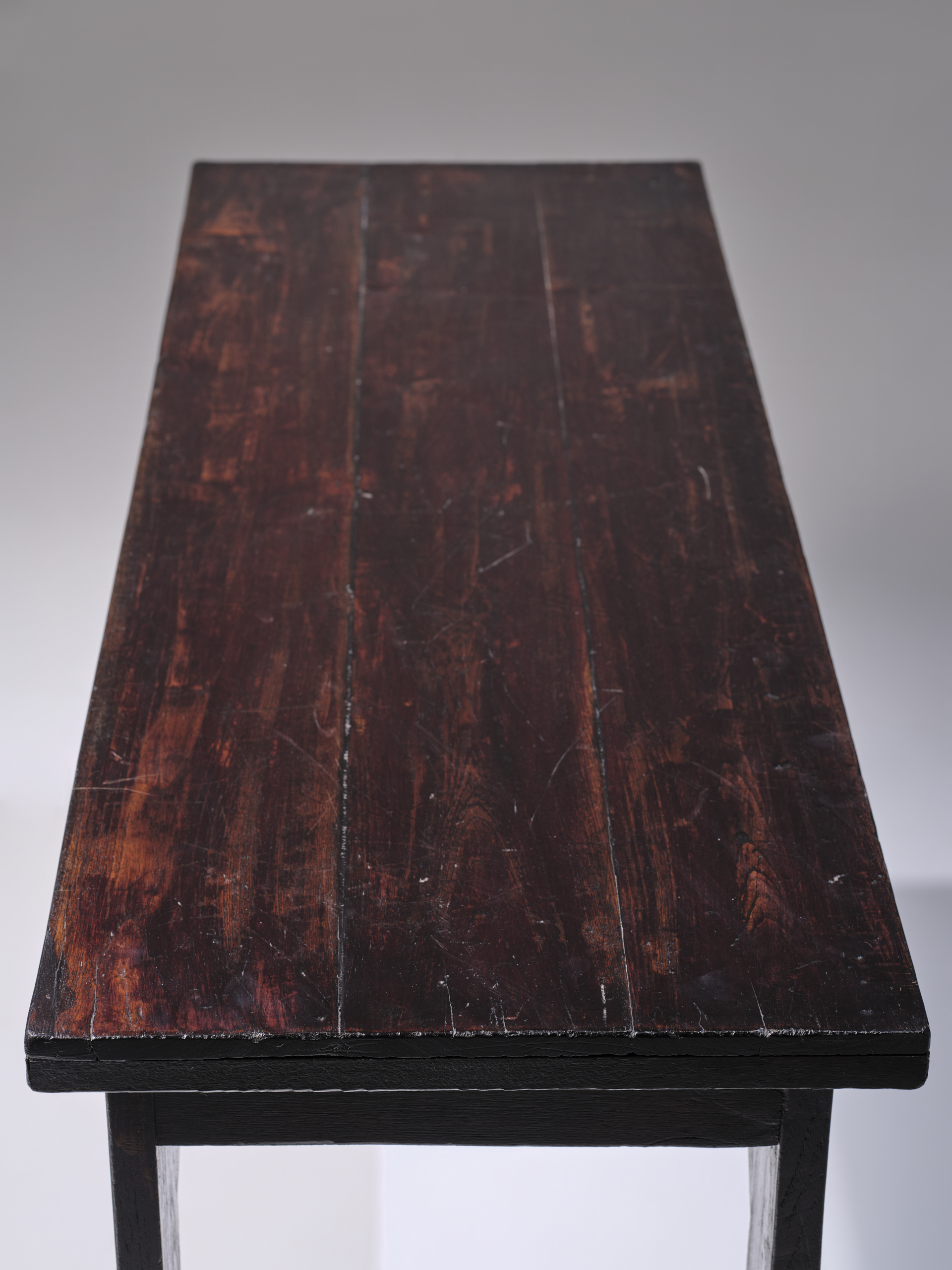
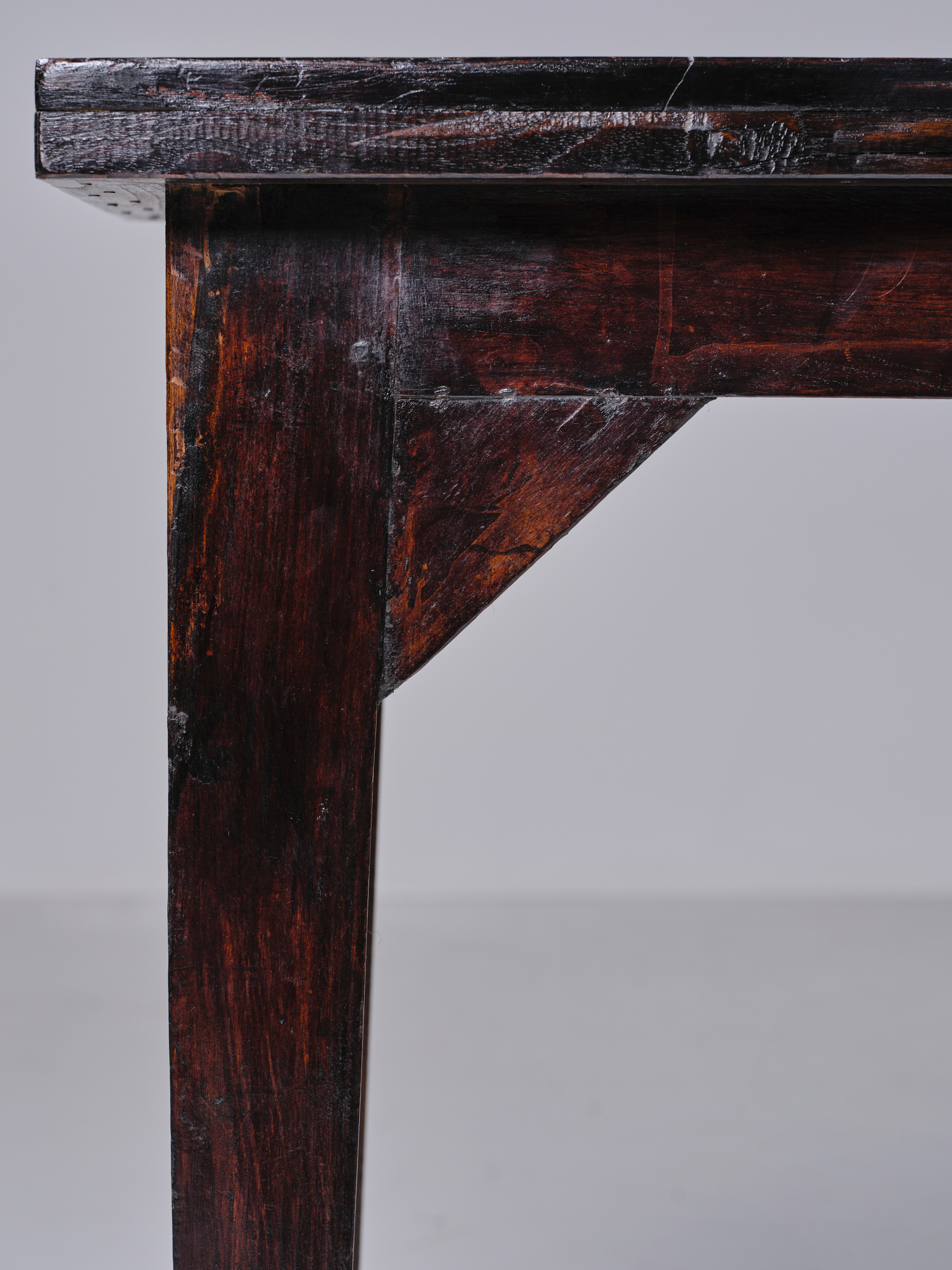
Pierre Jeanneret (1896-1967)
Console
Ca. 1955-56
Solid painted teak.
Provenance: Higher Secondary School 1
H. 74 x L. 120 x D. 44,5 cm | H. 29.1 x L. 47.2 x D. 17.5 in
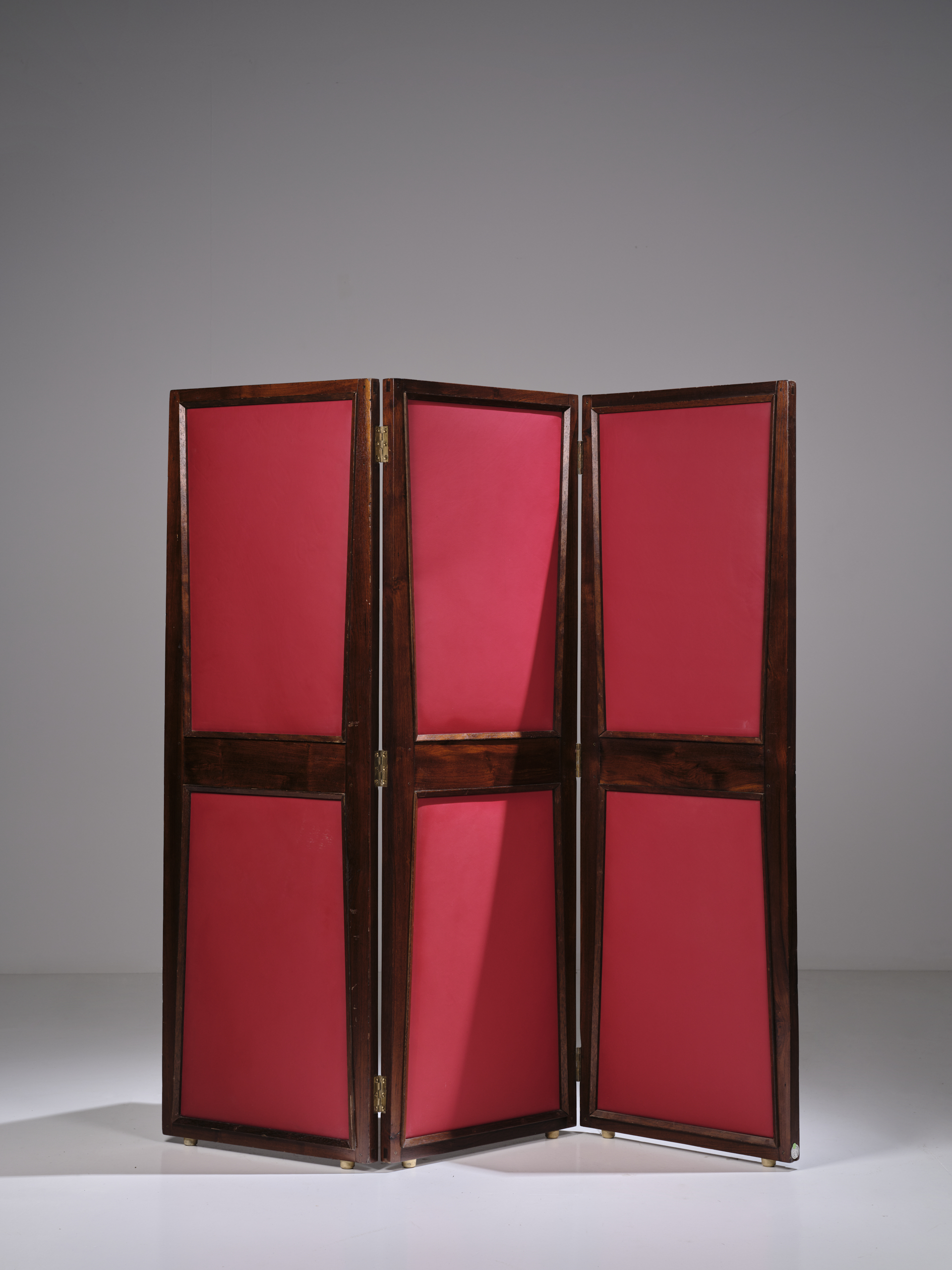

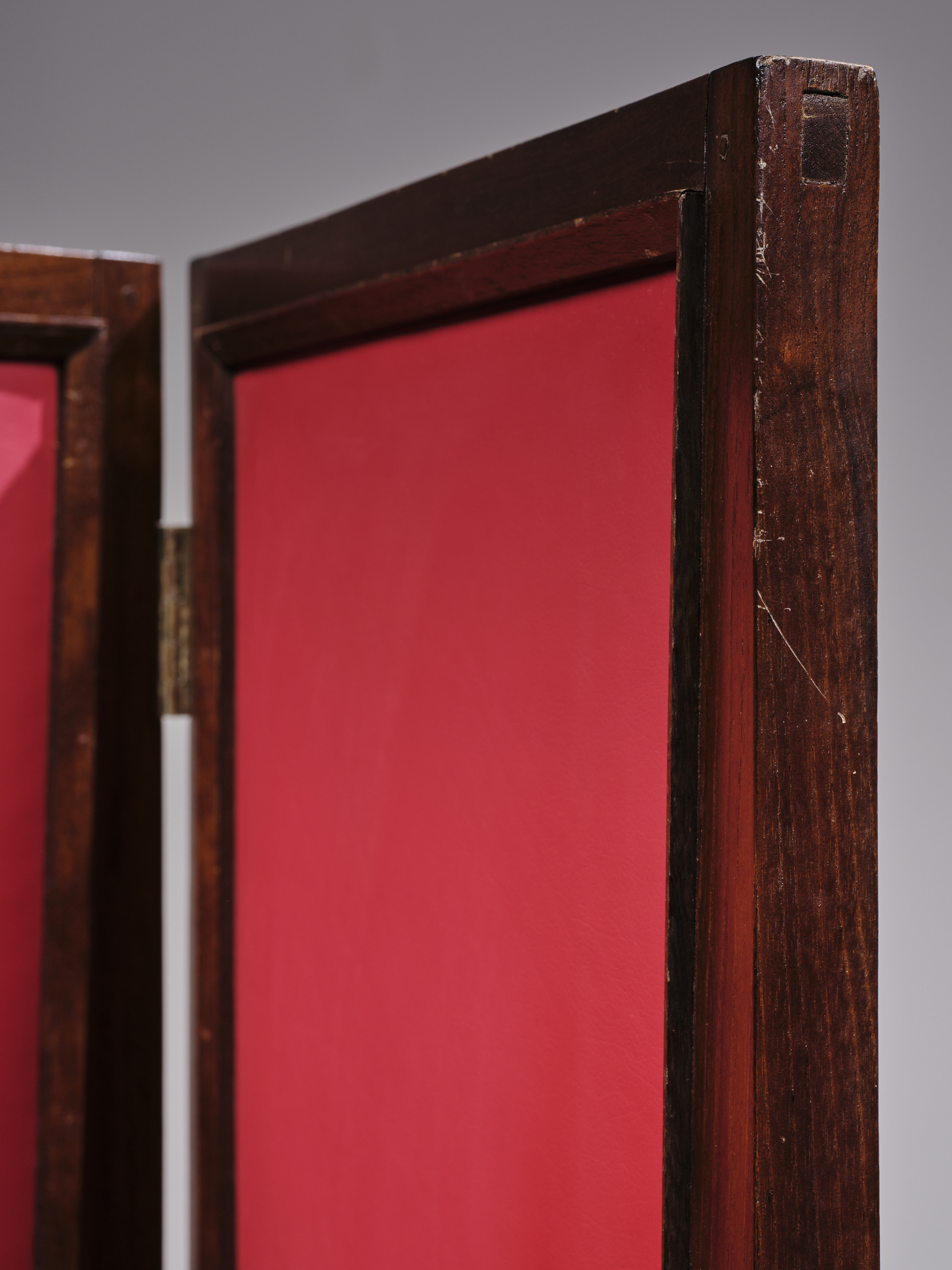
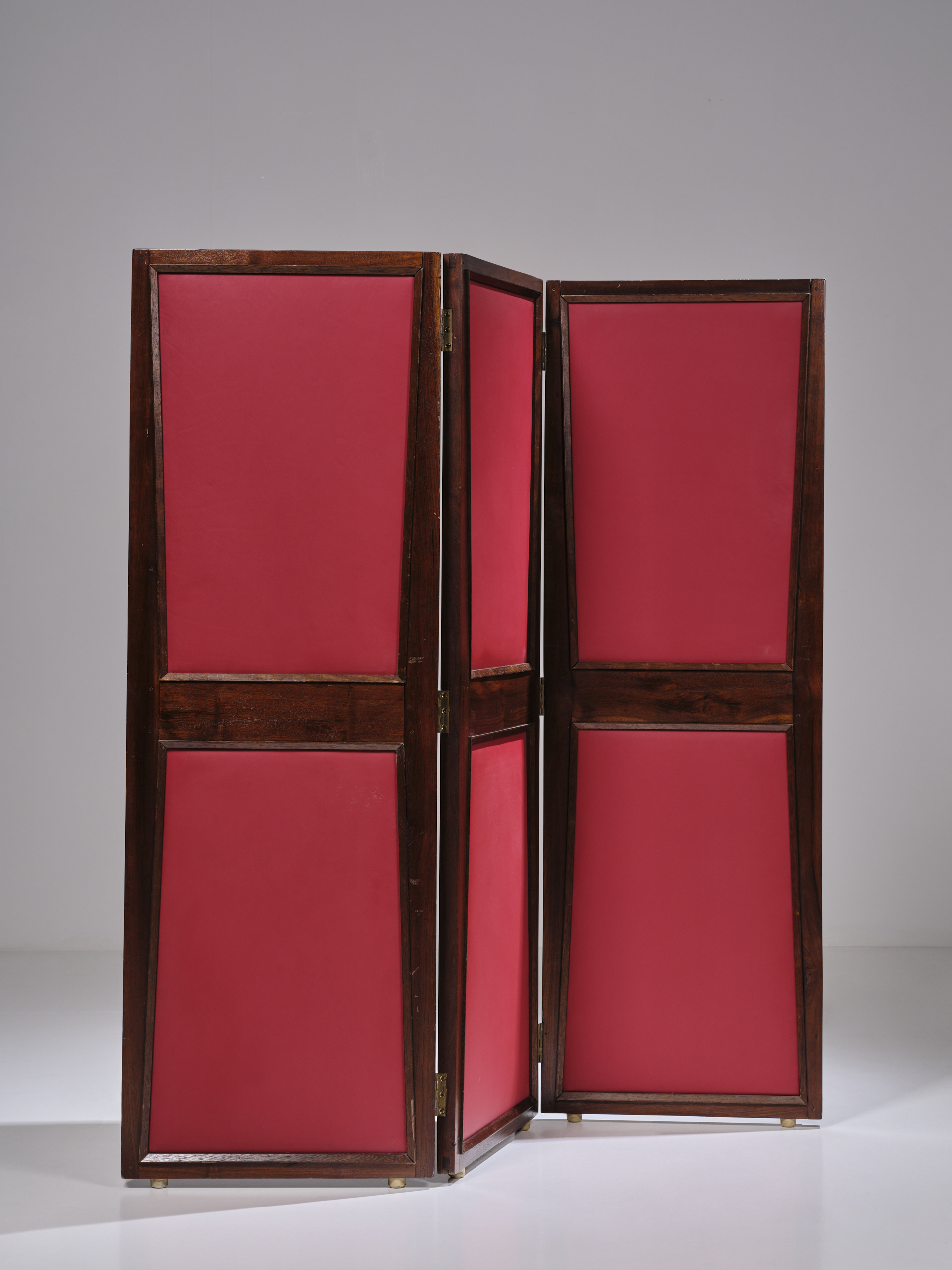
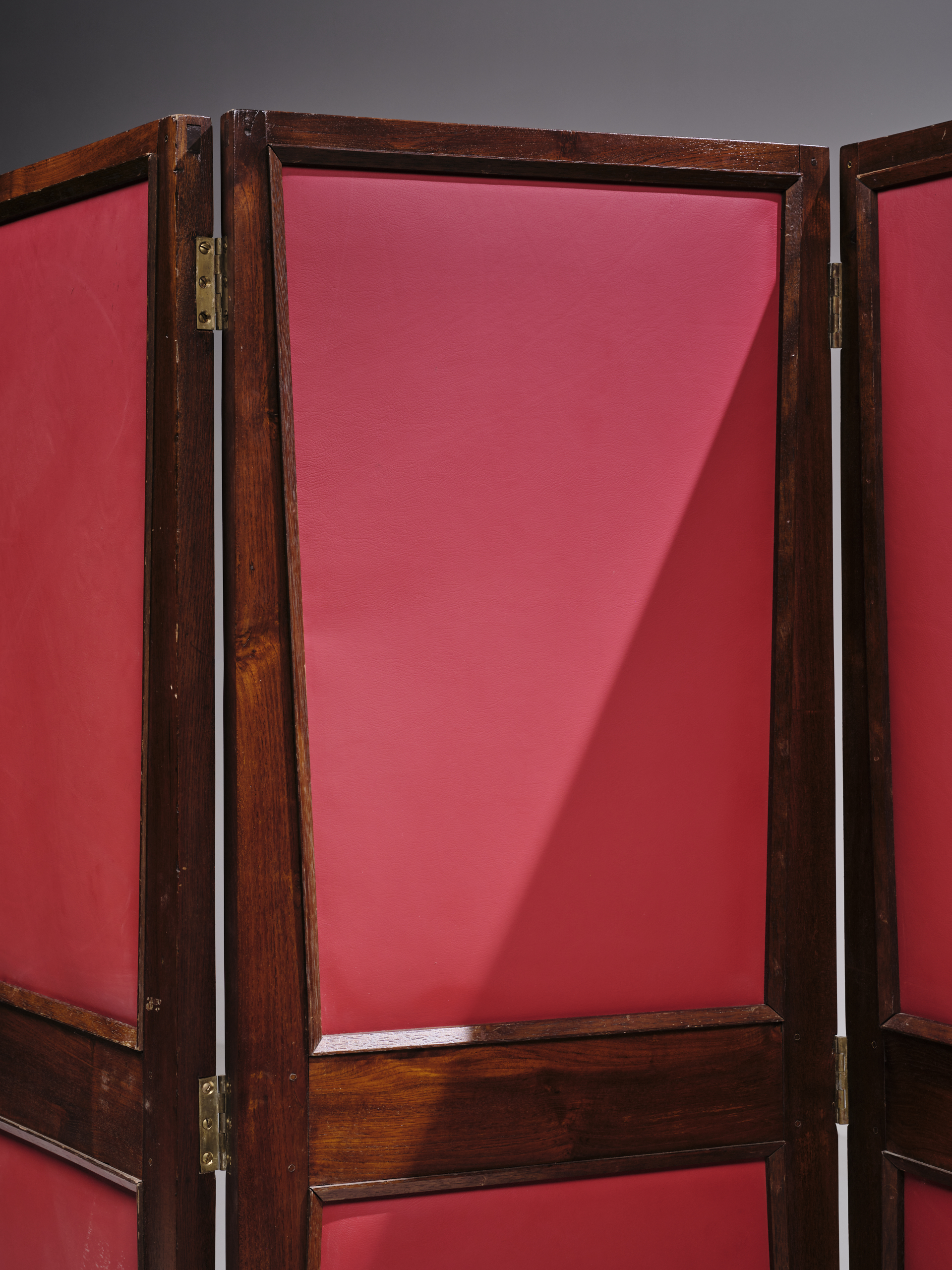
Pierre Jeanneret (1896-1967)
Folding screen
1958
Solid teak. Frame with profiled uprights, covered in red moleskin.
Provenance: Secretariat (1958), Assembly, P.U. administrative buildings
H. 169 x L. 55 cm | H. 66.5 x L. 21.7 in

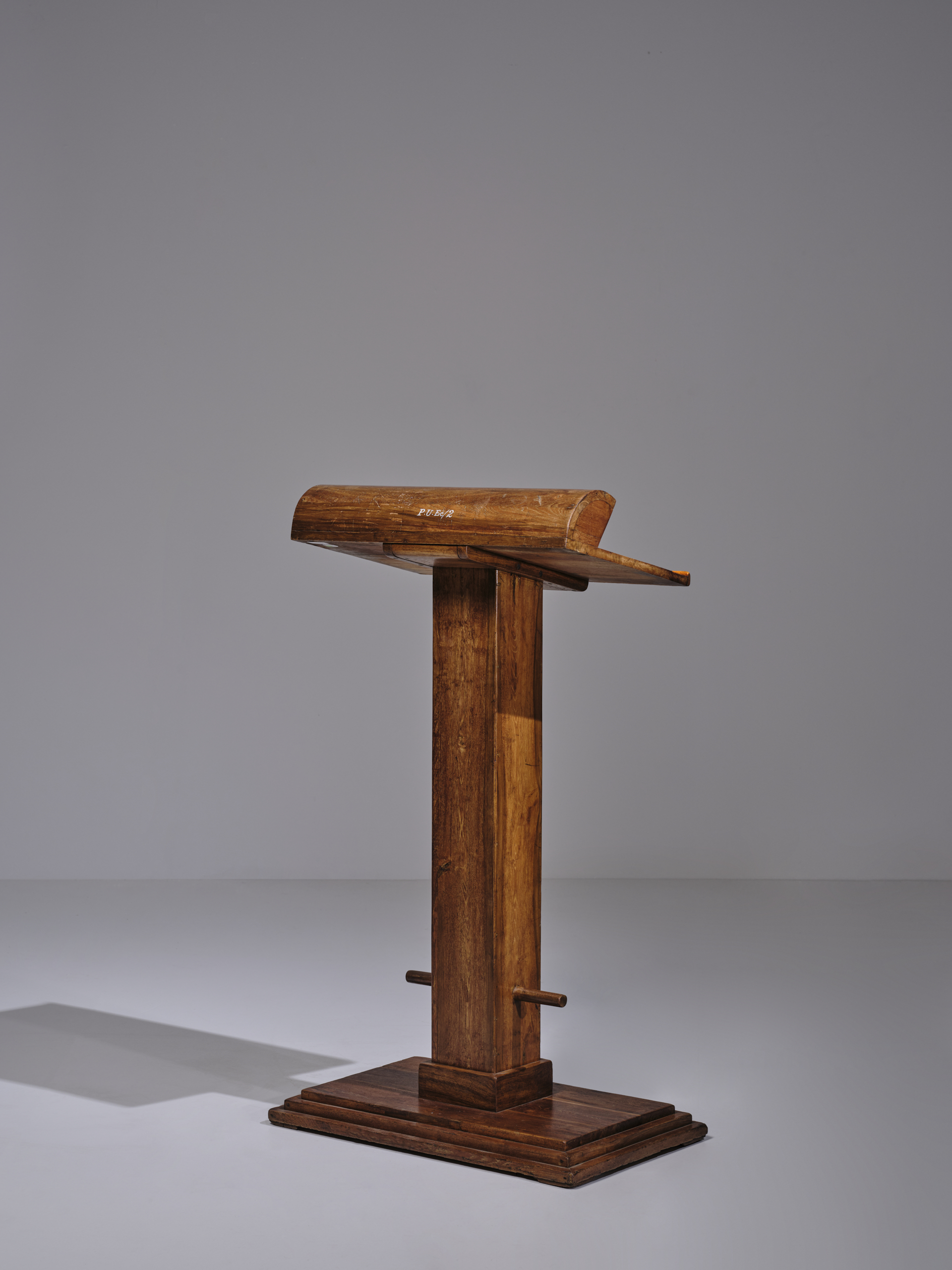


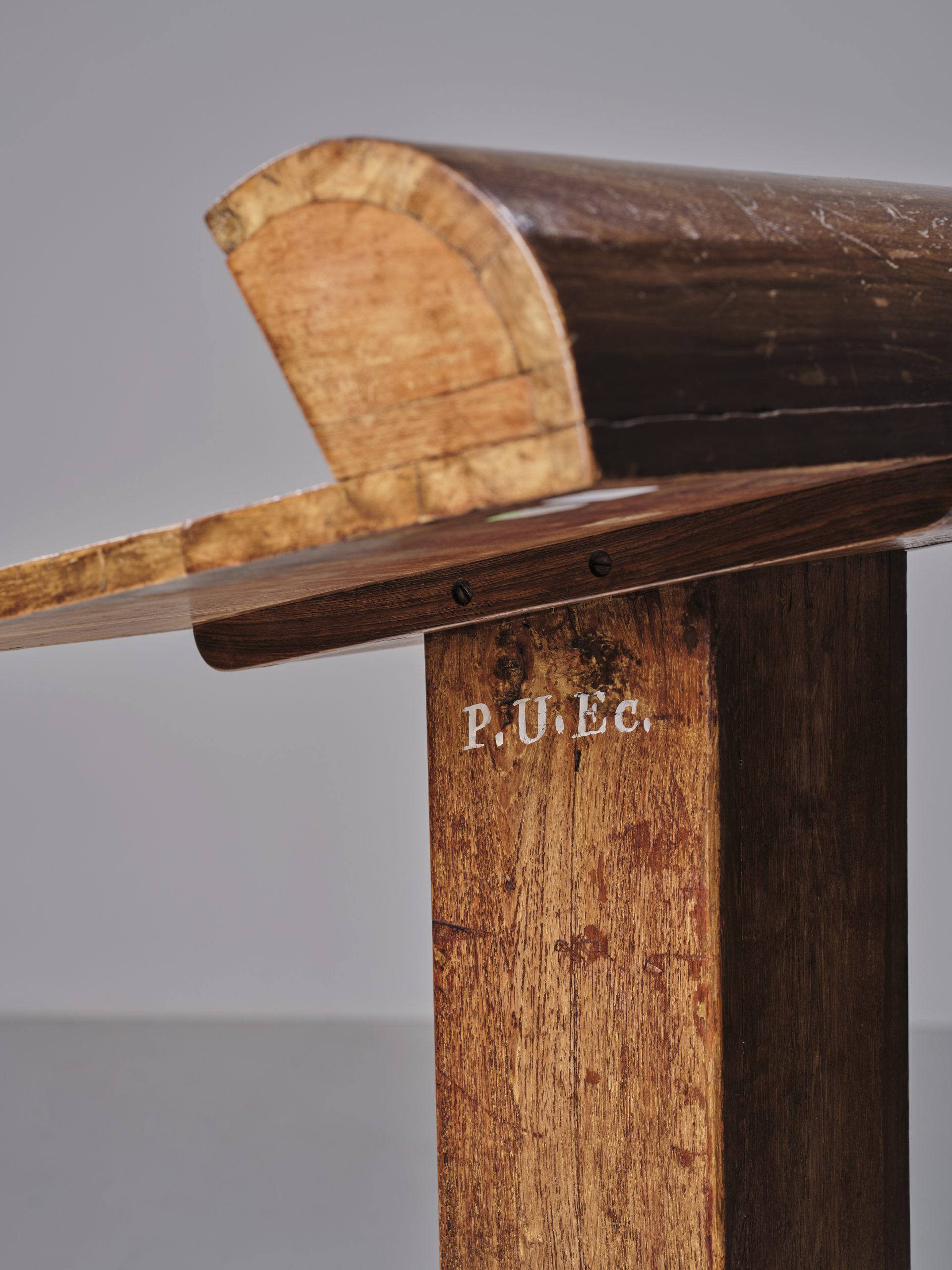
Pierre Jeanneret (1896-1967)
Lectern
Ca. 1955
Solid teak. Electrical system and light bulbs.
Provenance: University of the Punjab (P.U.)
H. 122 x L. 70 x D. 44 cm | H. 48 x L. 27.6 x D. 17.3 in
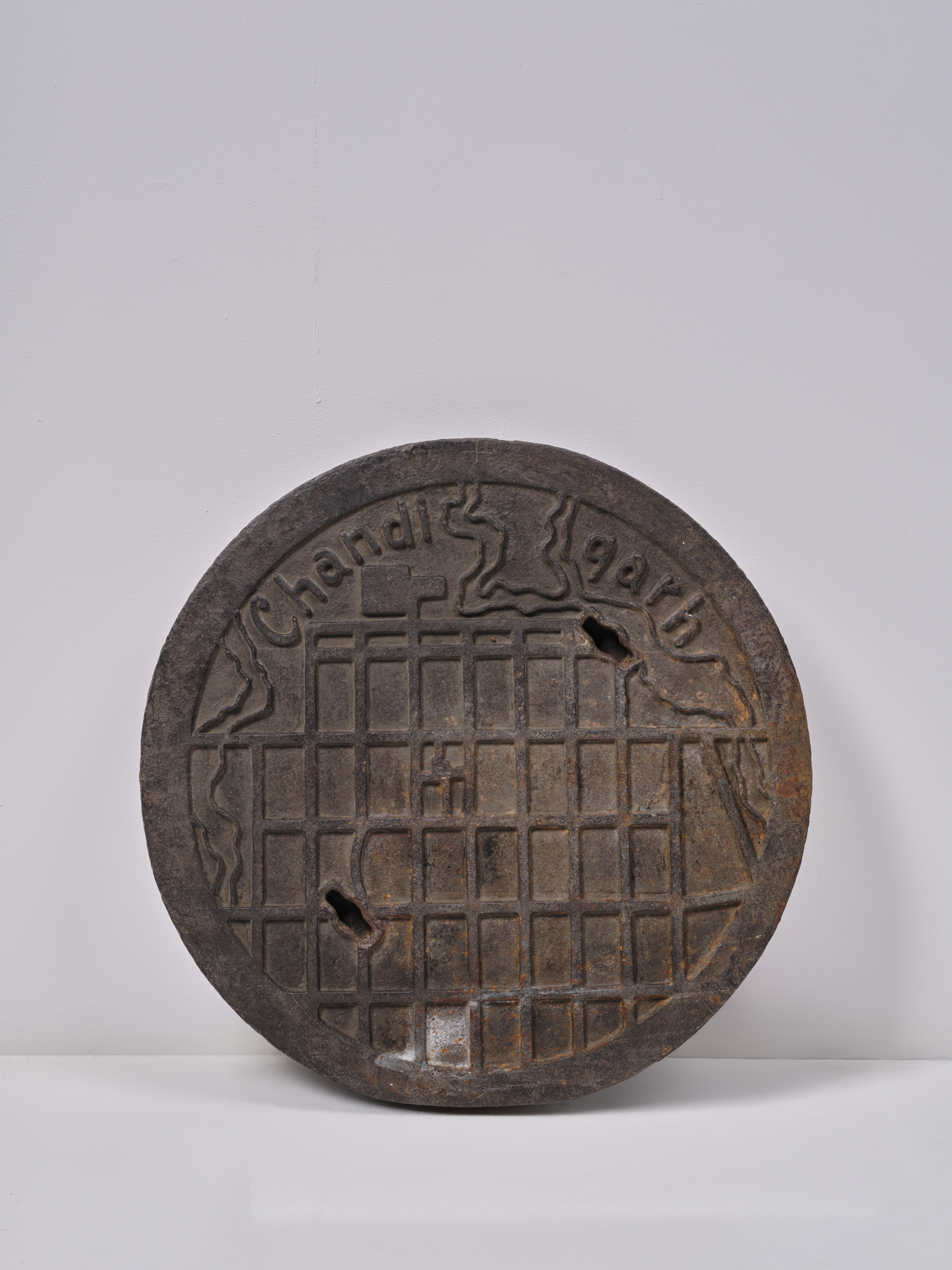
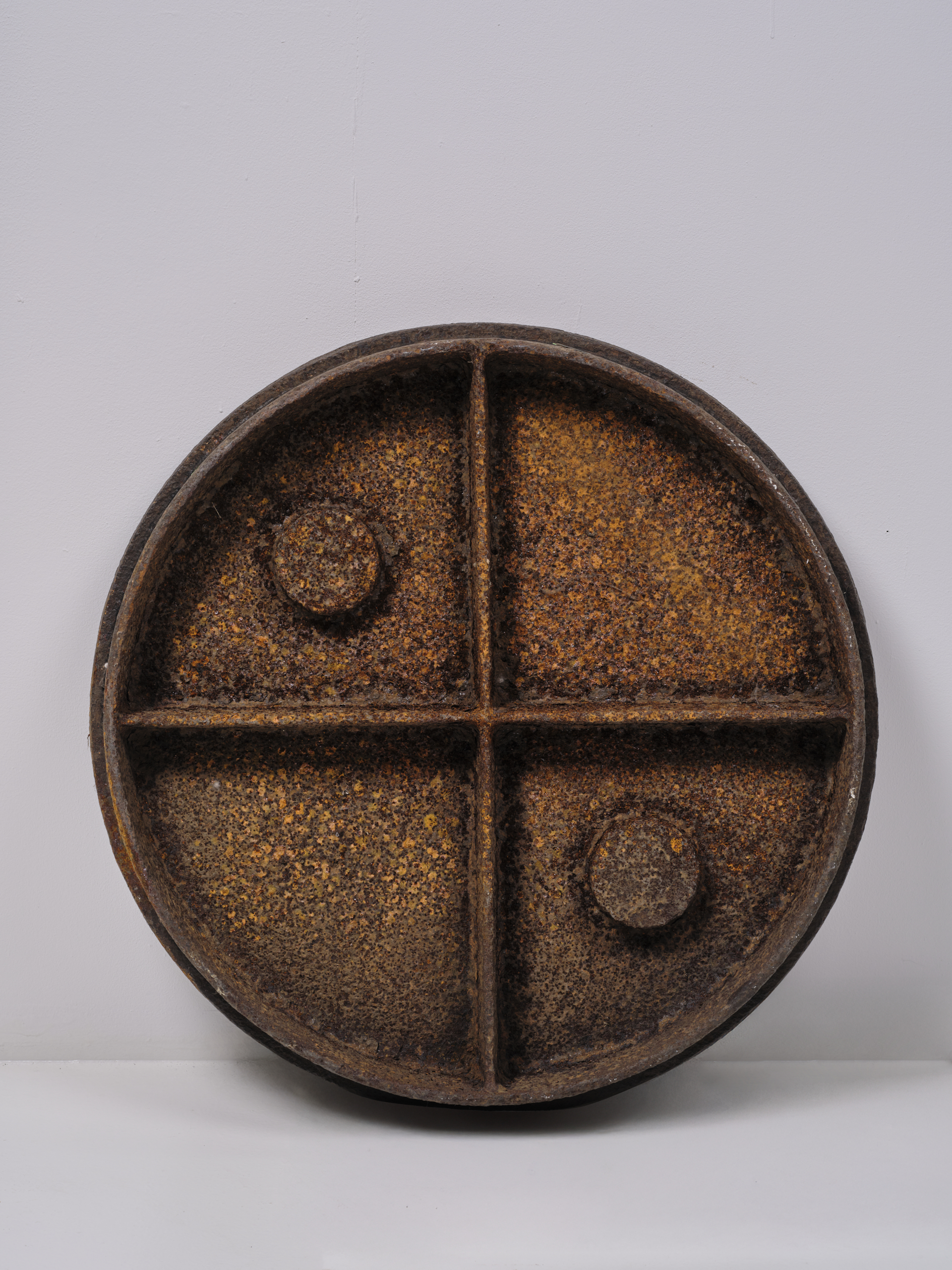
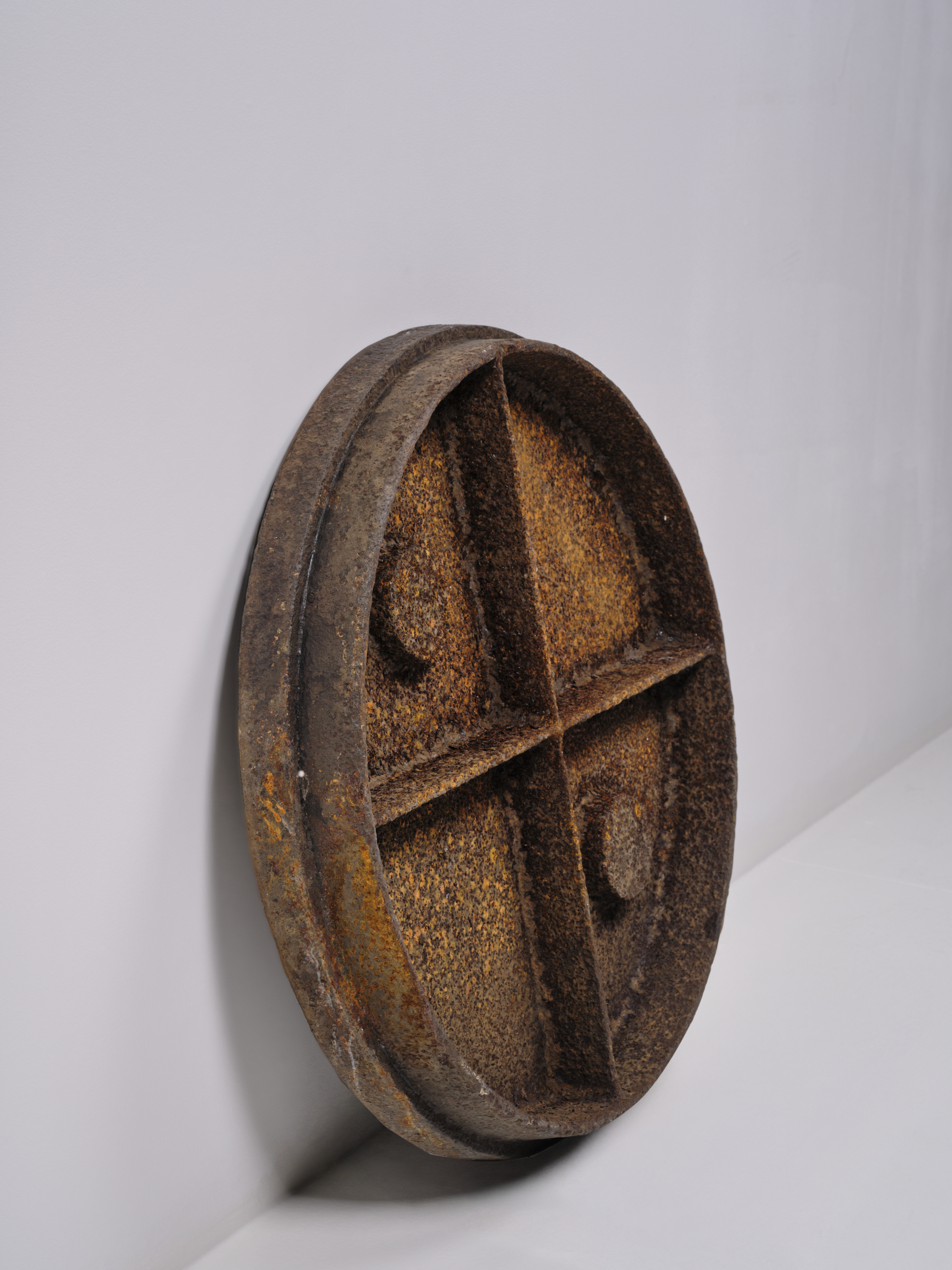
Charles-Edouard Jeanneret Dit Le Corbusier
(1887-1965)
Manhole cover
1955
Sand-cast iron, reproducing in relief the master plan of Chandigarh drawn up in 1951.
Provenance: Chandigarh, India
D. 64 x T. 10 cm | D. 25.2 x T. 3.9 in

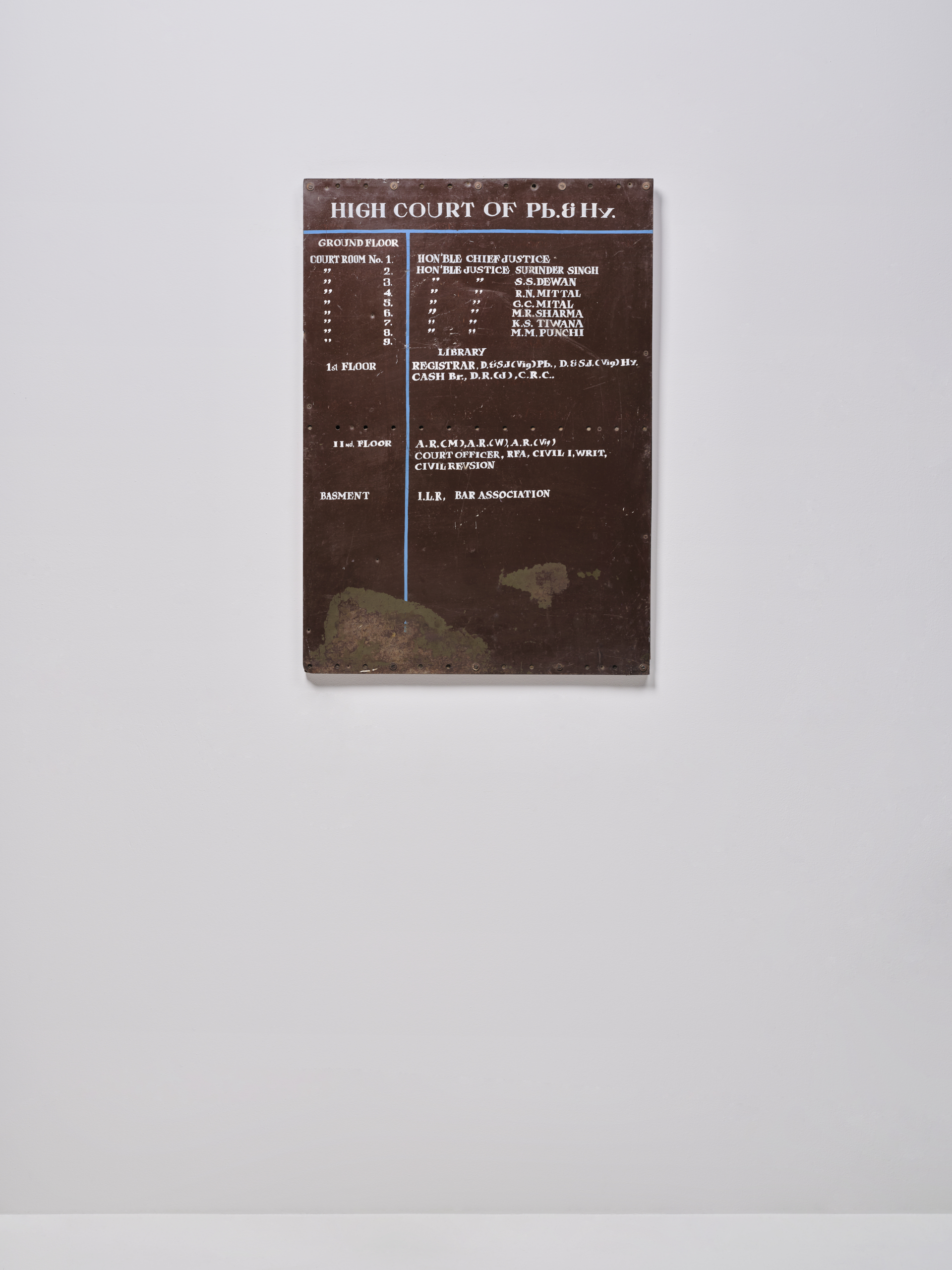
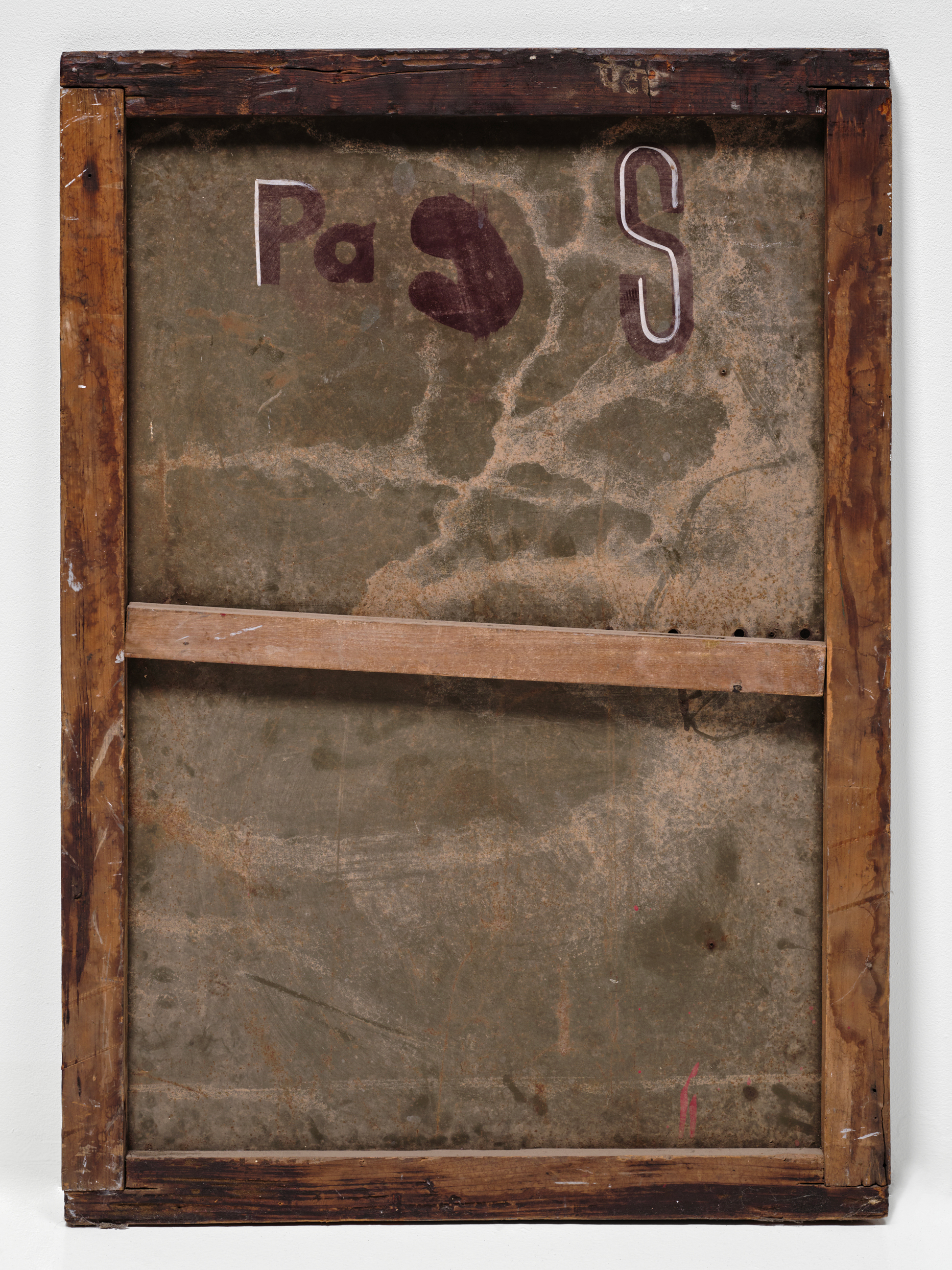
Pierre Jeanneret (1896-1967)
Signboard
Ca. 1955
Metal and teak.
Provenance: Punjab and Haryana High Court

Pierre Jeanneret and Le Corbusier, 1955, Chandigarh, by Jeet Malhotra
© Fond Le Corbusier, ADAGP
« The city of Chandigarh is planned to human scale. It puts us in touch with the infinite cosmos and nature. It provides us with places and buildings for all human activities by which the citizens can live a full and harmonious life. Here the radiance of nature and heart are within our reach. »
— Pierre Jeanneret
